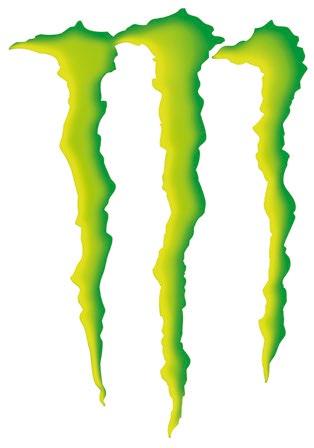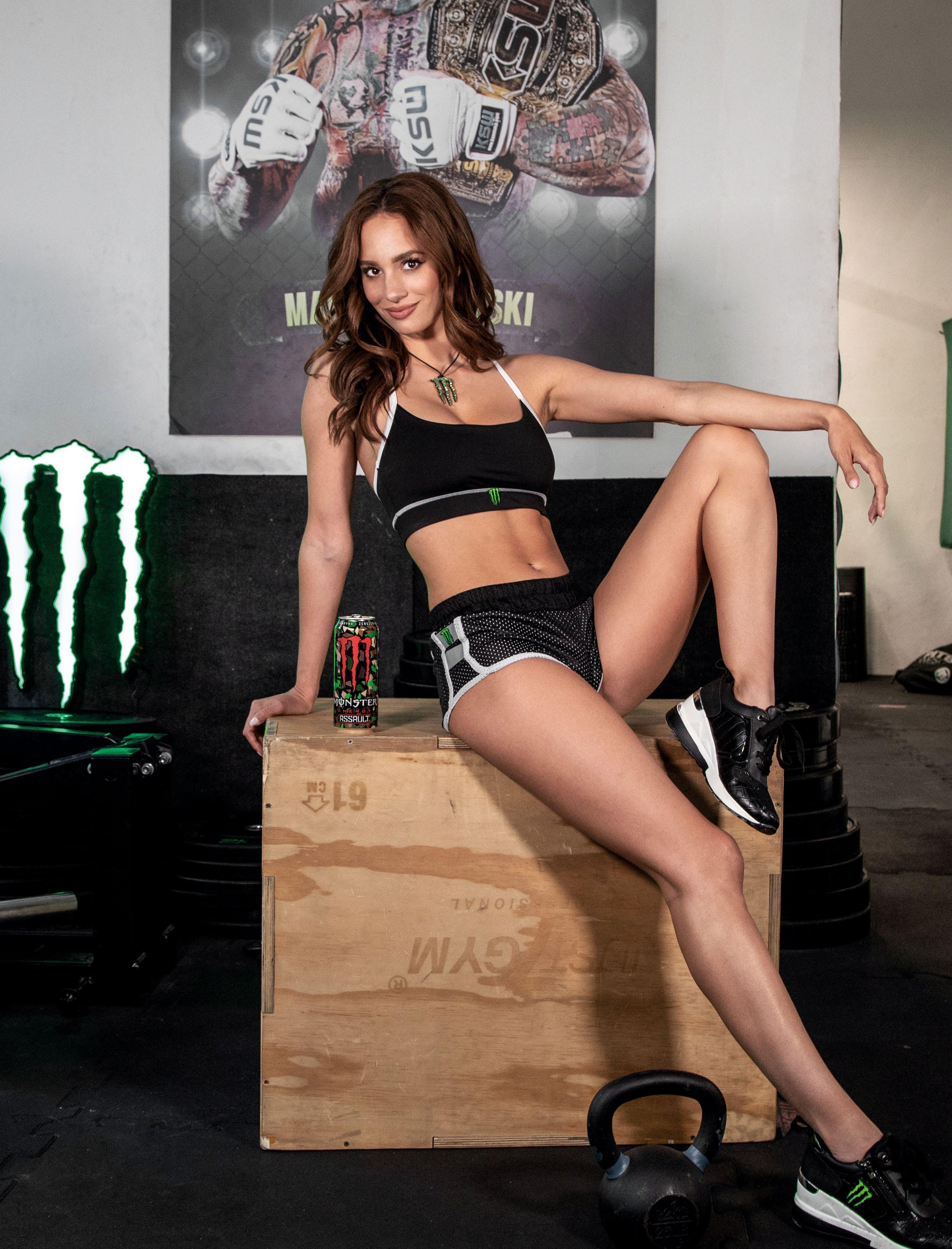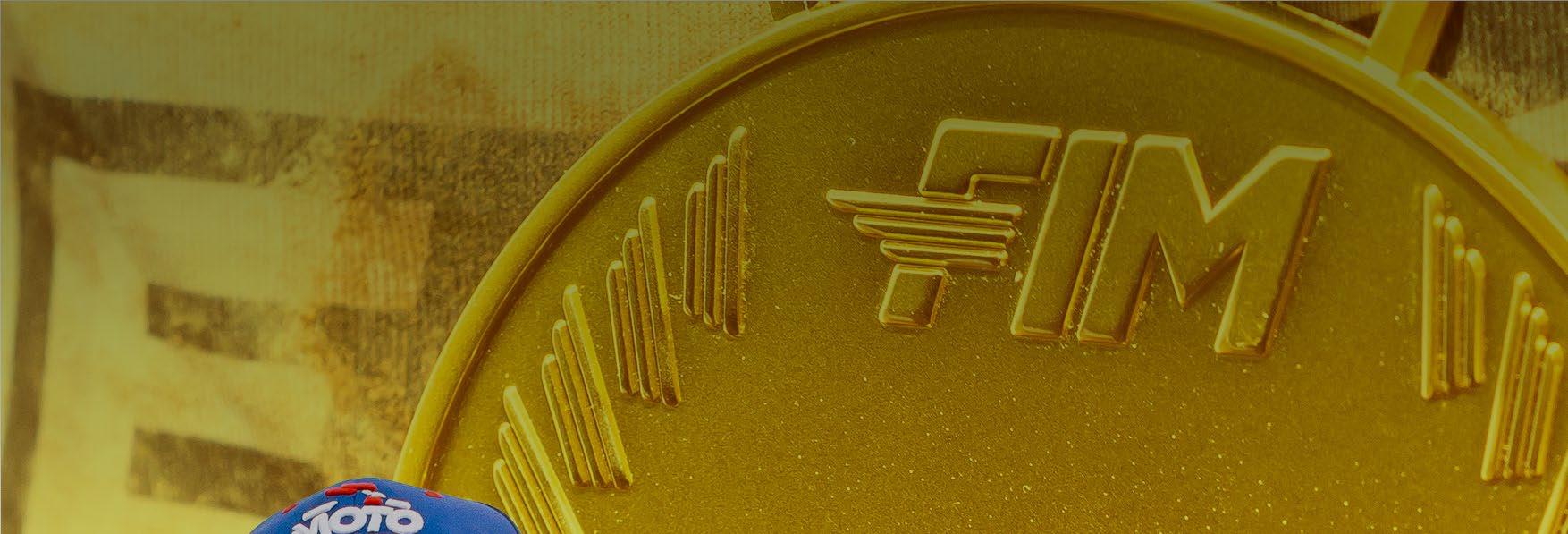








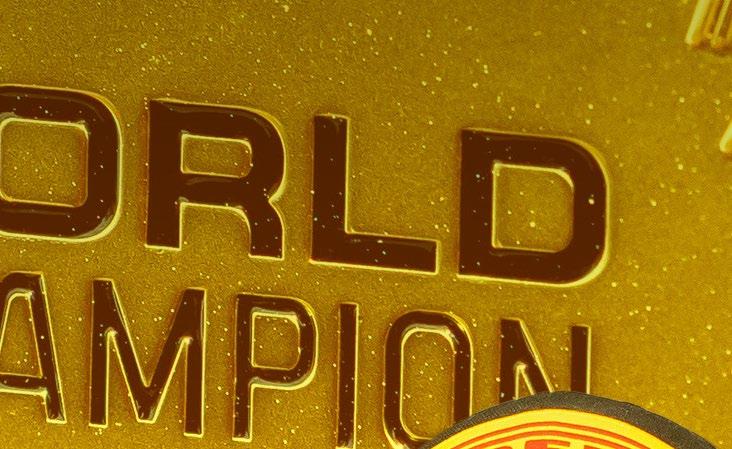
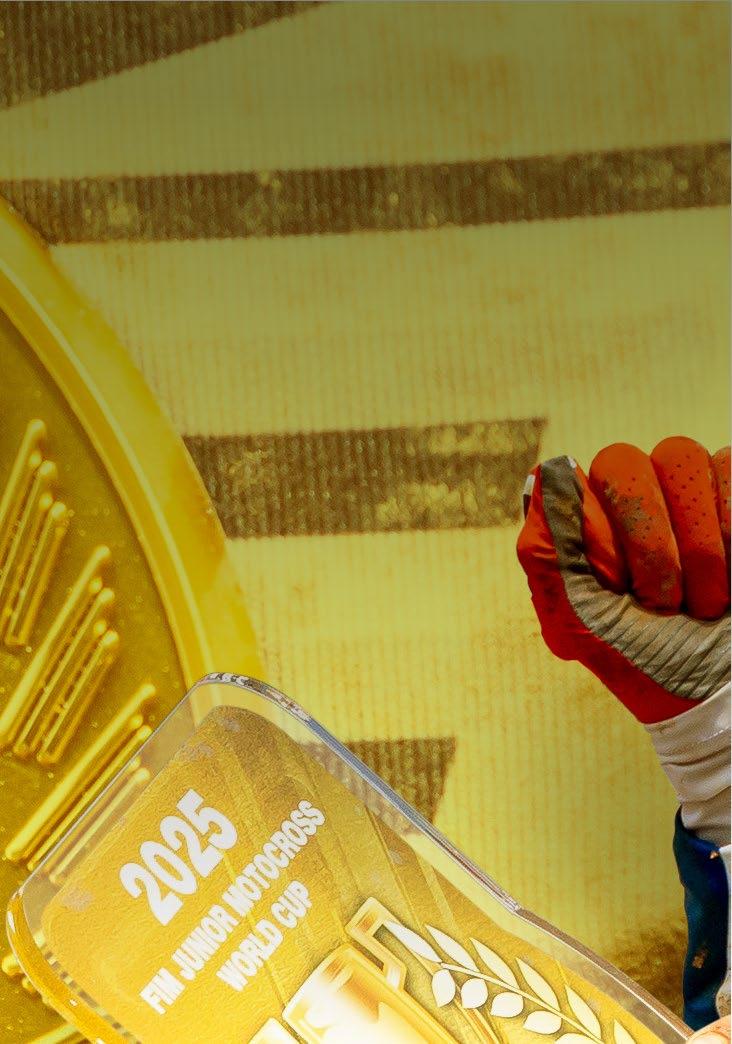




















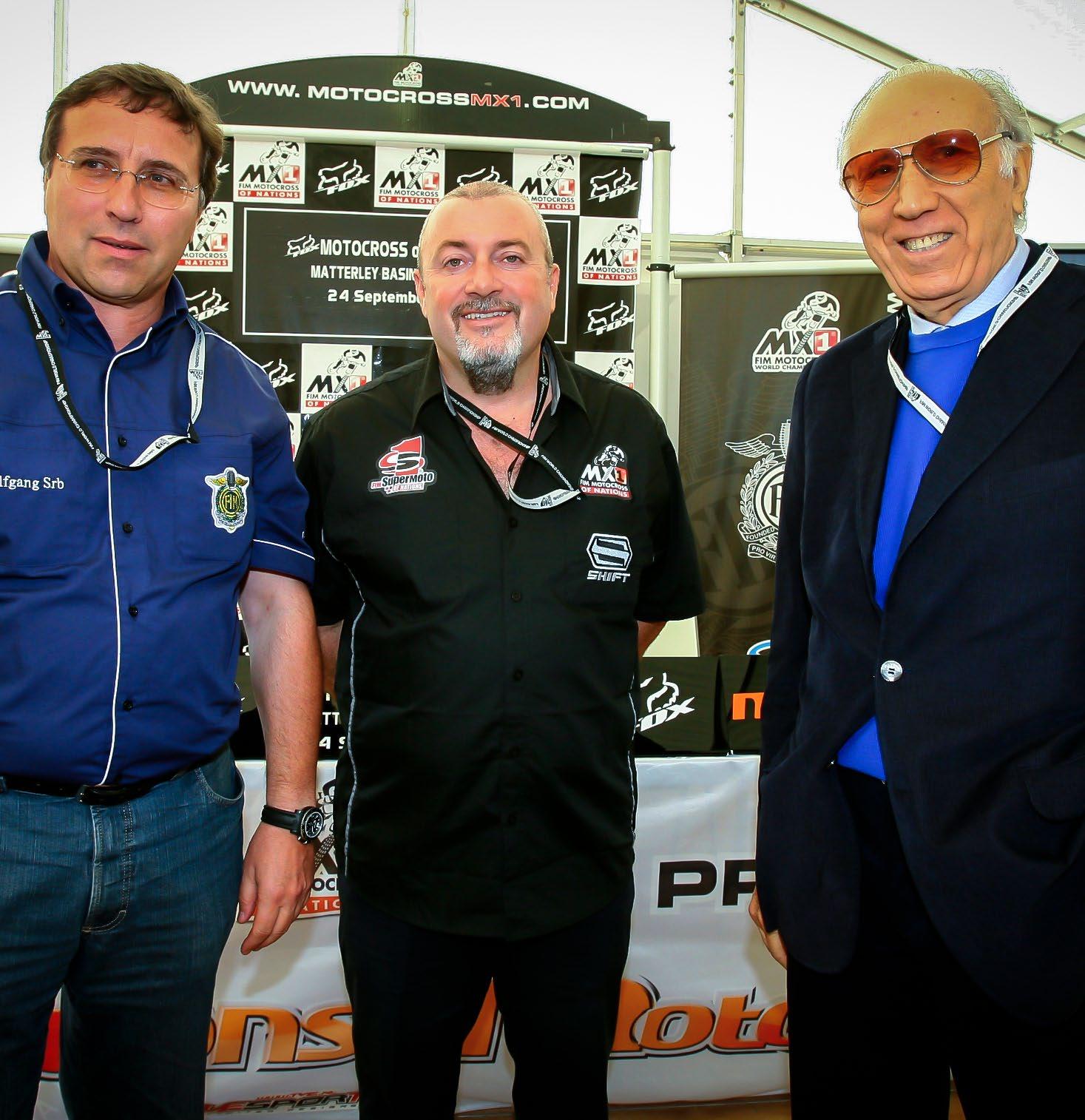








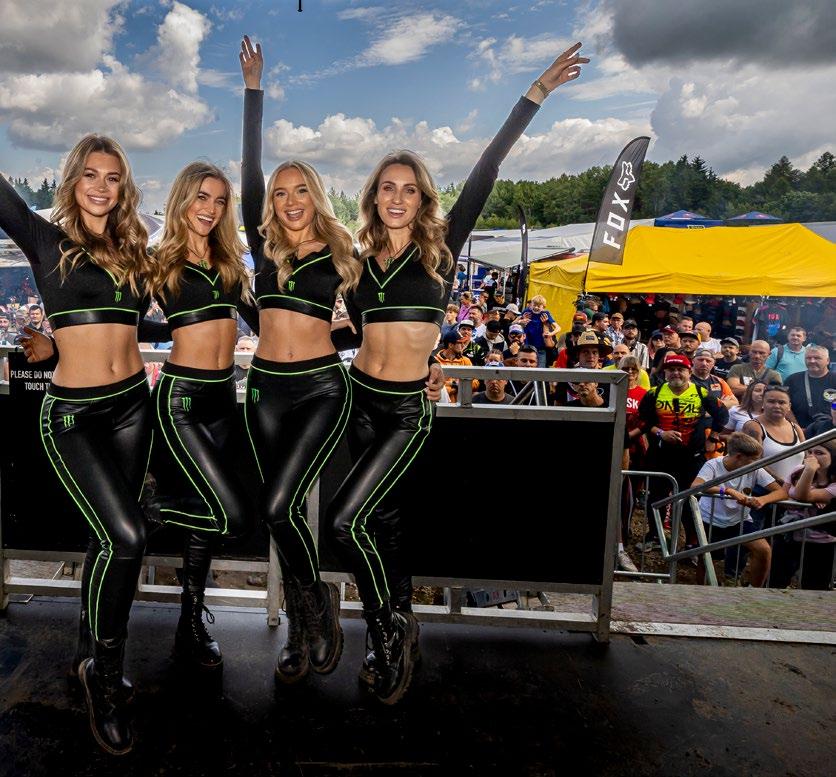

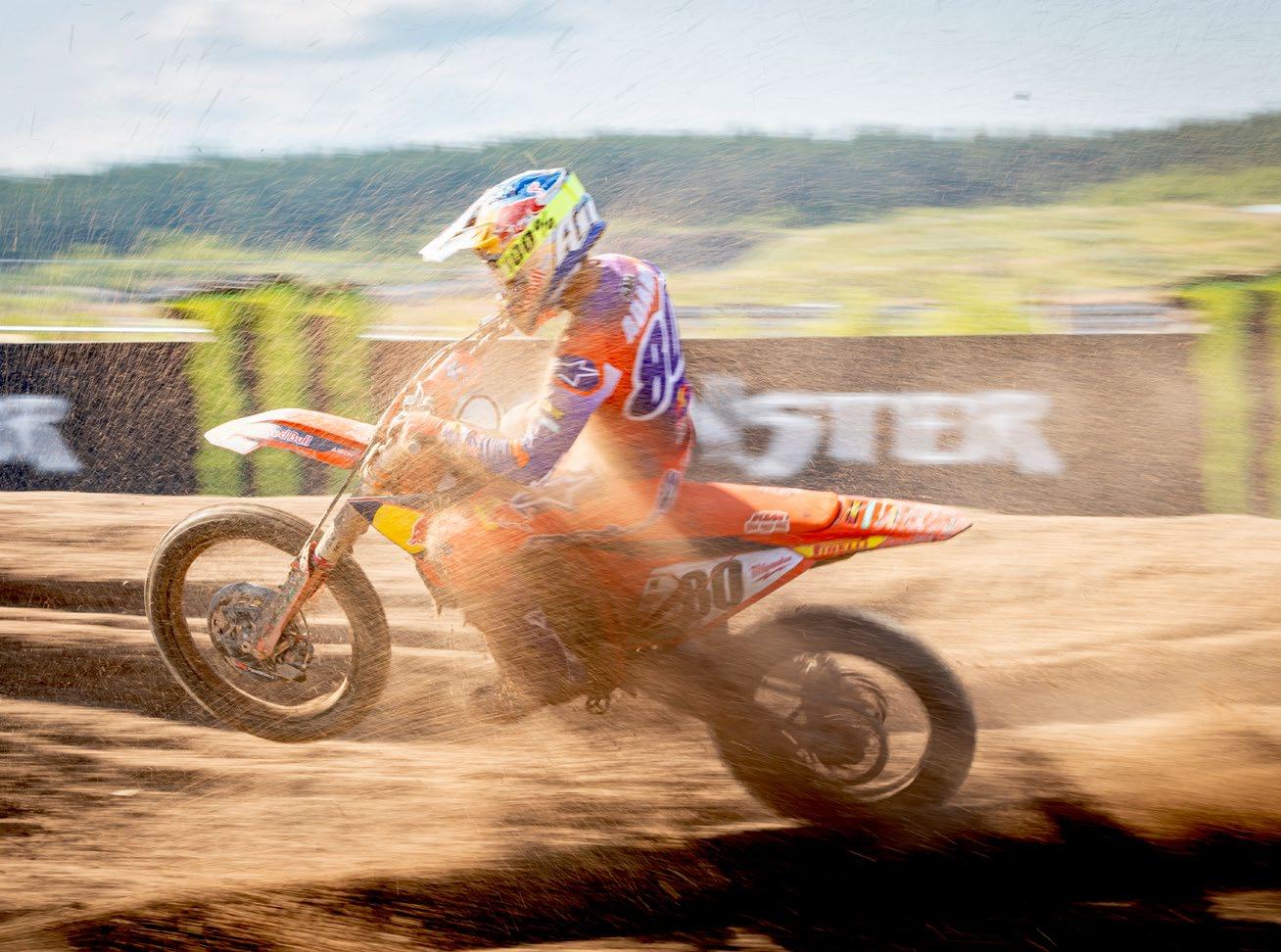


076 HALL OF FAME
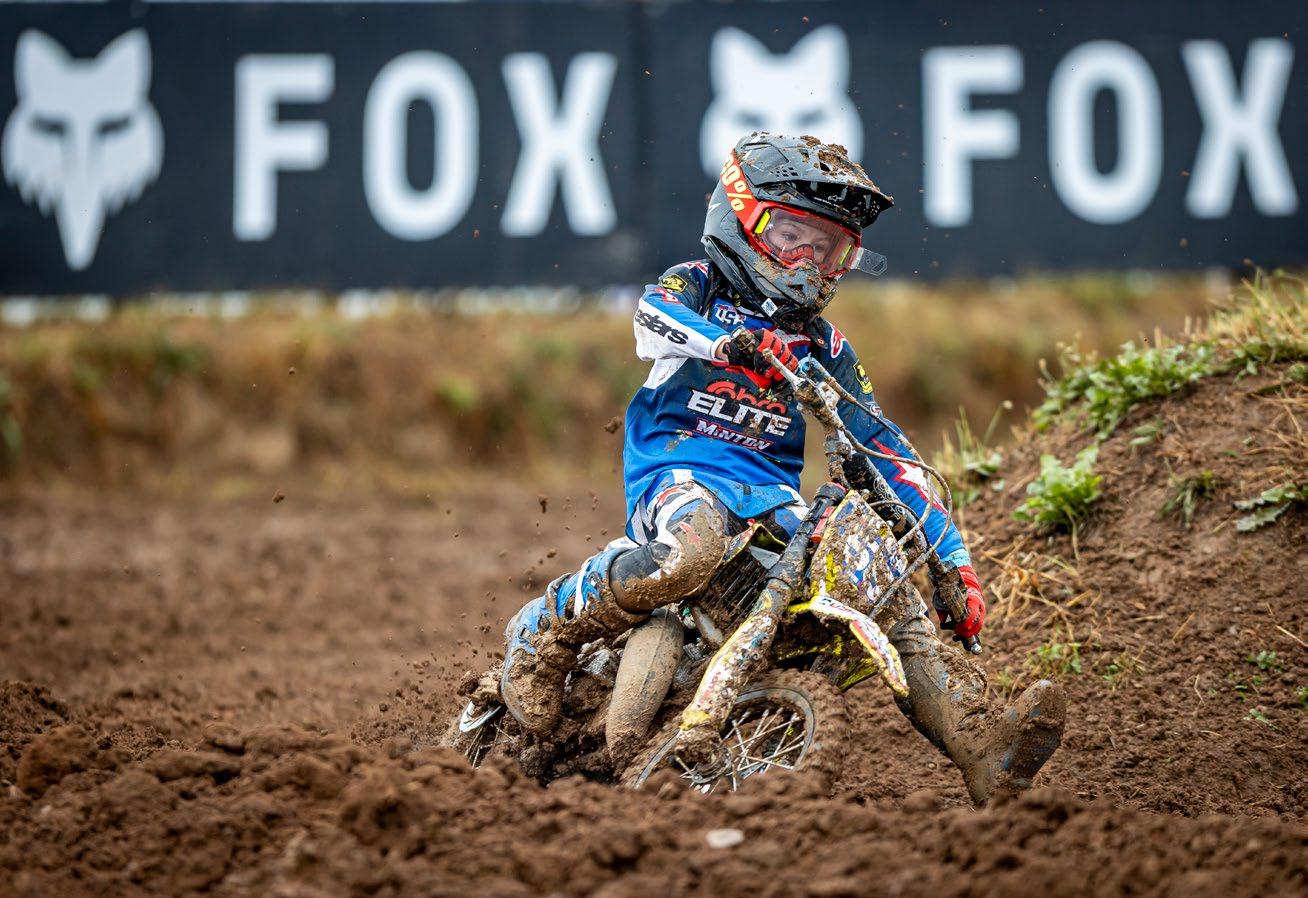
MXGP MAG
Chief Editor: Marionna Leiva Photos: MXGP
INFRONT MOTO RACING MEDIA
World Trade Center II
Rte de Pré-Bois 29 1215 Geneva 15 Airport Switzerland

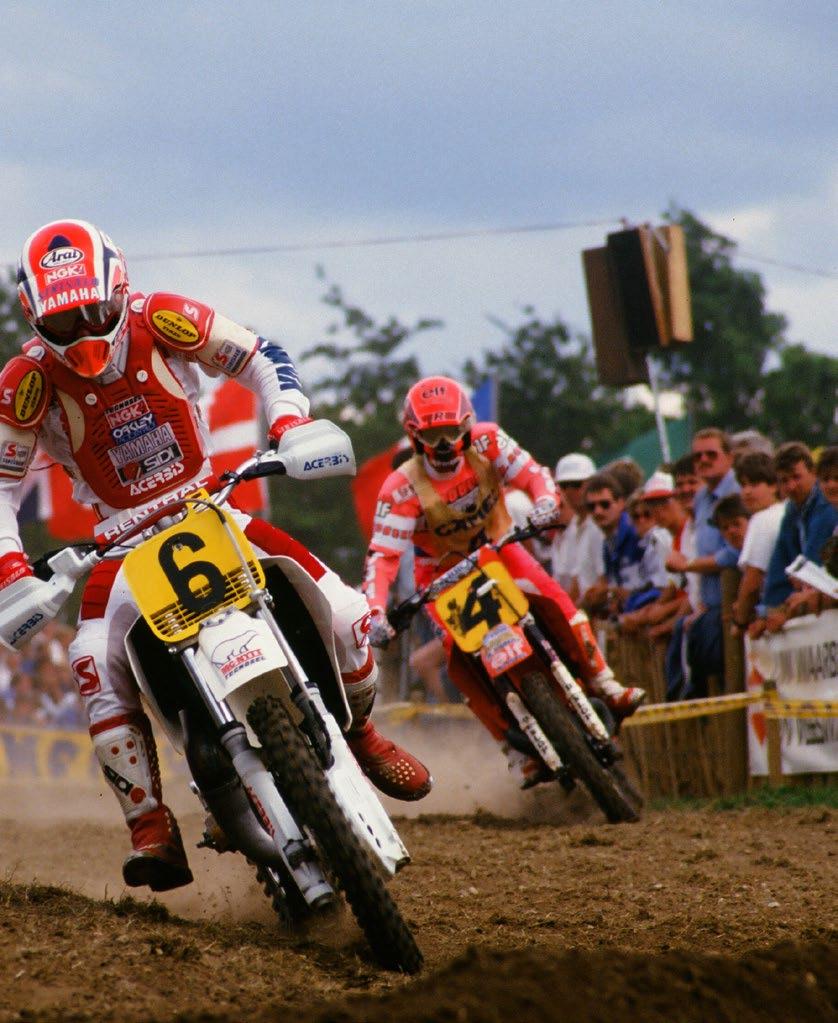

MXGP Mag #140 2025

The articles published in this magazine do not necessarily reflect the official position of Infront Moto Racing.
Then content of this publication is based on the best knowledge and information available at the time the articles were written.
The copying of articles and photos even partially is forbidden unless permission has ben requested from Infront Moto Racing in advance and reference is made to the source (©MXGP).


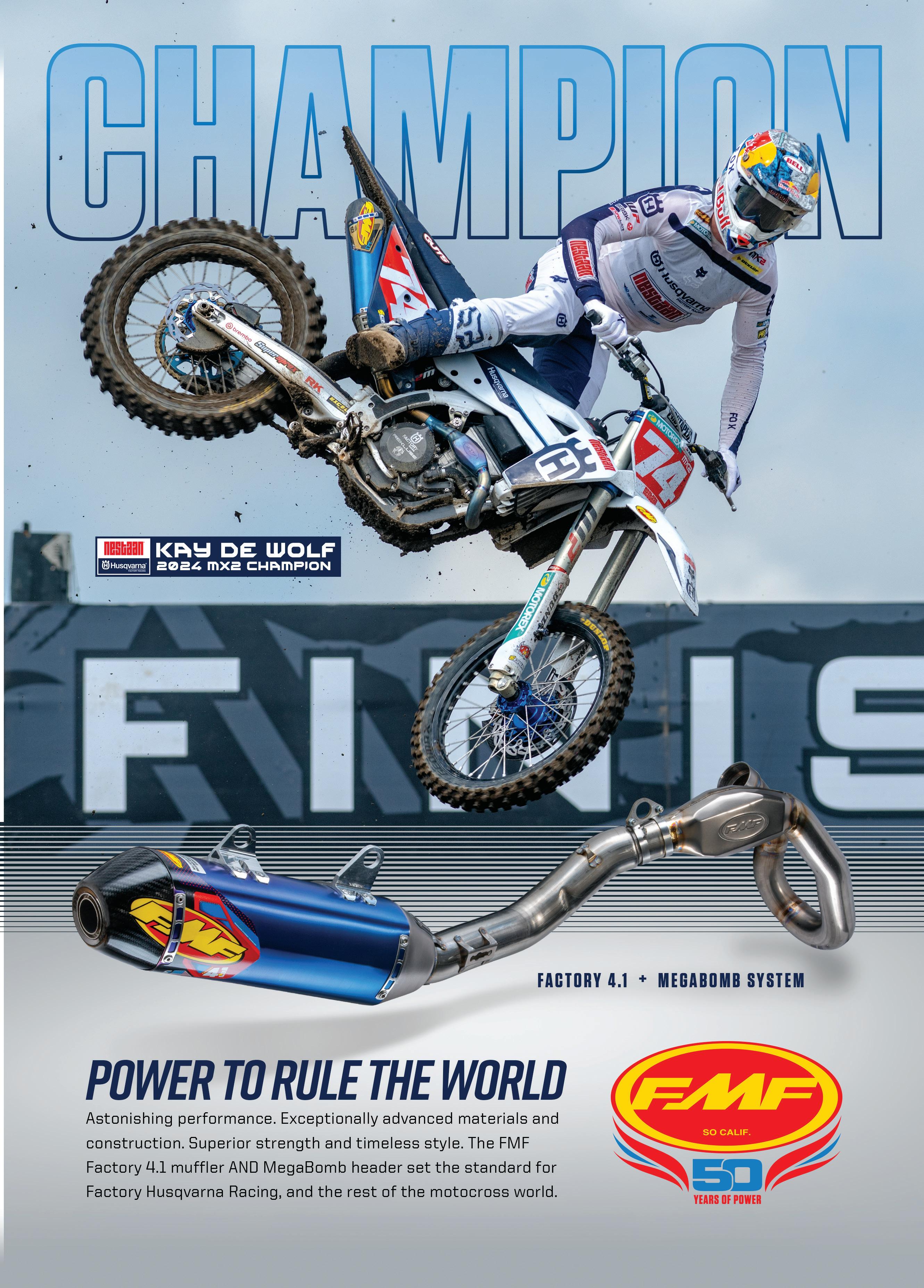

DEAR MXGP FANS, WE ARE ALREADY ENTERING THE LAST PART OF THE SEASON WITH SIX GRAND PRIX AND THE MONSTER ENERGY MOTOCROSS OF NATIONS, AND WE CAN FEEL THAT ALL THE CHAMPIONSHIPS ARE GETTING MORE AND MORE DISPUTED!
The last events that took place in UK, Finland and Czech Republic were very exciting in both MXGP and MX2. The fight on top of the MXGP classification between Romain Febvre and Lucas Coenen has intensified and after the victory of the young Belgian in Loket the gap reduced to 10 points only. It was also great to see Glenn Coldenhoff performing so well on the Fantic factory, while Calvin Vlaanderen scored his first podium of the season in the sand of Finland.
In MX2 the fight will turn most probably to a trio of great riders with Simon Längenfelder leading the championship with 47 points in front of Andrea Adamo and 59 in front of Kay De Wolf. The MX2 races have been really open since the beginning of the season, showing a fantastic generation of talented riders that we will be see soon in MXGP. The rookie Mathis Valin secured his first podium in MX2 at the occasion of Loket and added his name to the long list of podium awarded riders in this category this year.
KymiRing was a new venue on this season calendar and the level of organization was very good. It was a great combination of the great infrastructure that a World class road race circuit could offer with a very typical Finnish motocross track on the natural terrain surrounding the road race circuit. The Finish fans answered the call and welcomed very positively the comeback of MXGP in their country. During this Grand Prix, we announced the prolongation of our collaboration with Kegums, Latvia, to bring the MXGP to the Baltic country until 2029. We also announced the 2027 Junior World Championship which will take place in Estonia, proving the great dynamic of our sport in this part of Europe.
The Junior World Championship took place in France this year and again it reached new standards in term of organization and sport level. For the very first time, this event was broadcast LIVE on MXGP-TV and some National Channels in France like L’Equipe for example. Despite the
rain that didn’t help the organizer and the riders, the races were very exciting and crowned France as Nations Winner with two victories in 85cc with Rafael Mennillo and 125cc with Mano Faure. In 65cc, Kannon Zabojnik brought the World Title to United States. Those three names will for sure continue to make noise in the years to come.
The Monster Energy Motocross of Nations is getting closer as well and promises to be one of the most epic of the last years. Team Australia just announced their line up and they will defend their title with the same squad as last year in UK. Jett and Hunter Lawrence will be joined by Kyle Webster to defend their title on American soil. More teams will announce their line up in the upcoming weeks.
Finally, our official YouTube Channel just reached 600.000 subscribers, a fantastic milestone for MXGP. It is mainly thanks to the very popular Behind The Gate, our 26 minutes program that reached more than 3 millions views during the 2025 season up to now, one of the greatest and most followed Off-Road programs in the world.
Now it is the time to prepare yourself for the most demanding and awaited Grand Prix of the season, Lommel is calling for the MXGP of Flanders and you can be sure that it will mark again a turning point in the season in the MXGP and MX2 classes, but it will also be the finale of the EMX125cc where Mano Faure, the freshly crowned 125cc Junior World Champion, is sitting only six points back of the Italian talent, Nicolo Alvisi. It will for sure be exciting and emotional.
See you in Lommel.
David Luongo CEO of Infront Moto Racing
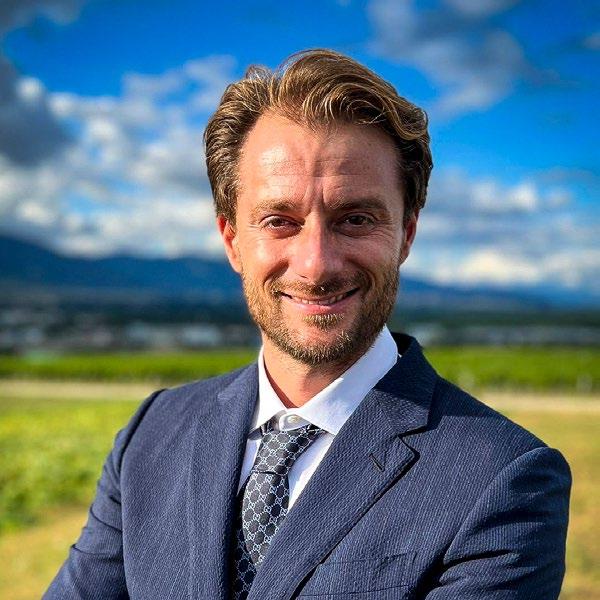


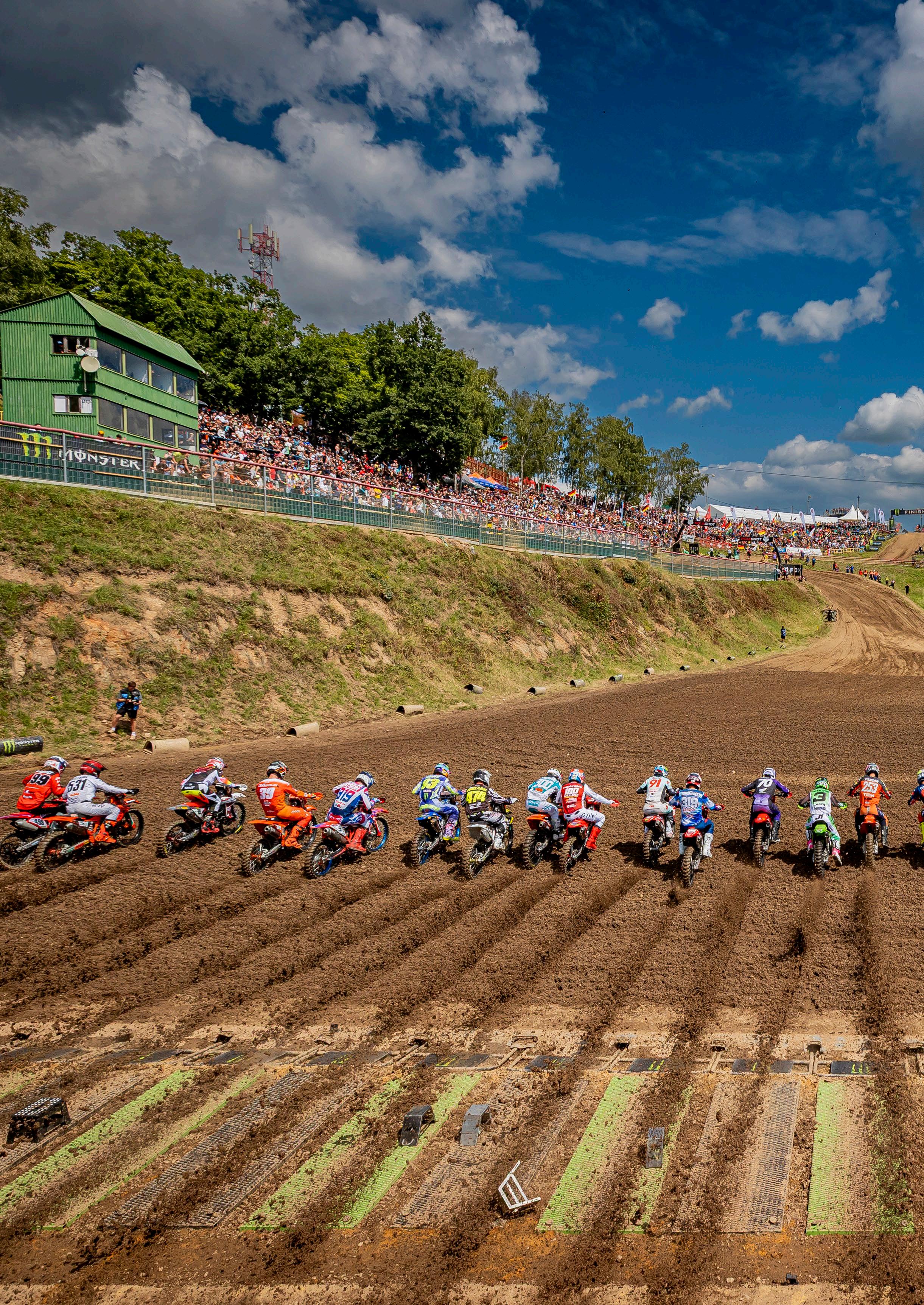
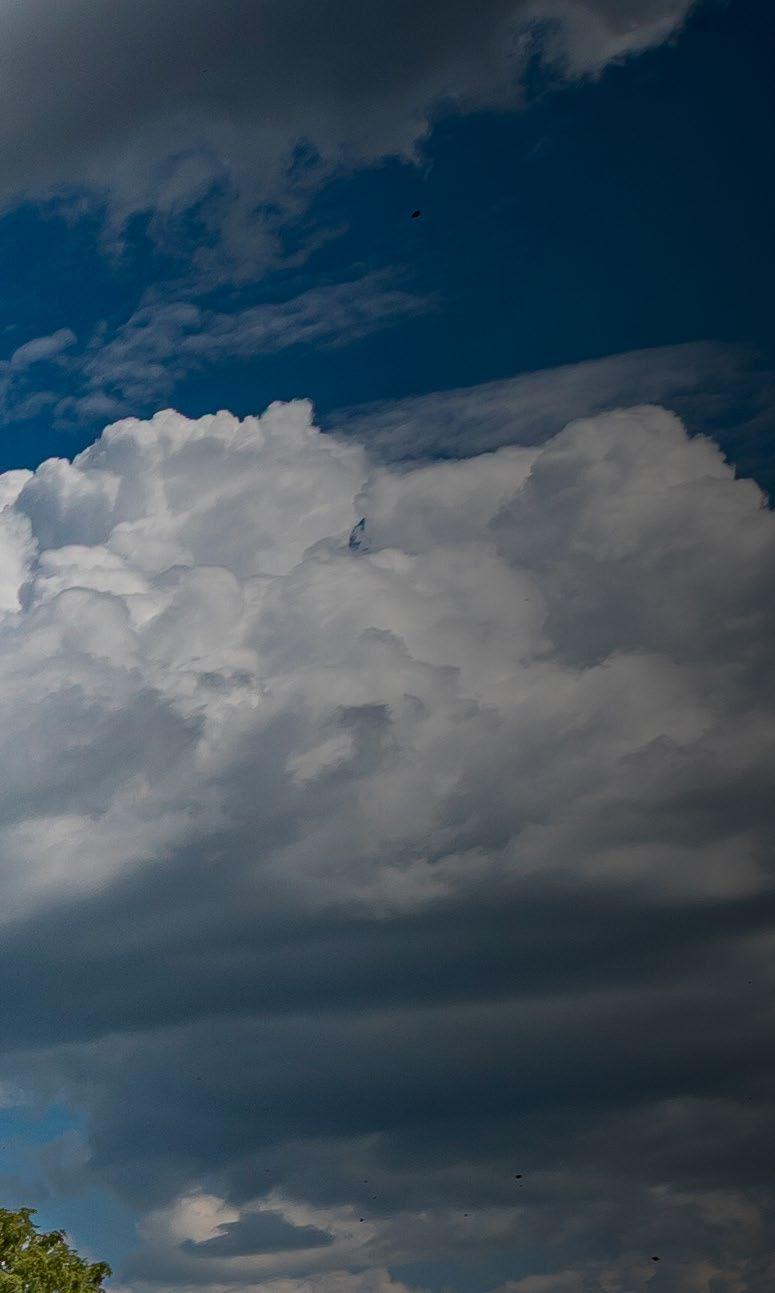
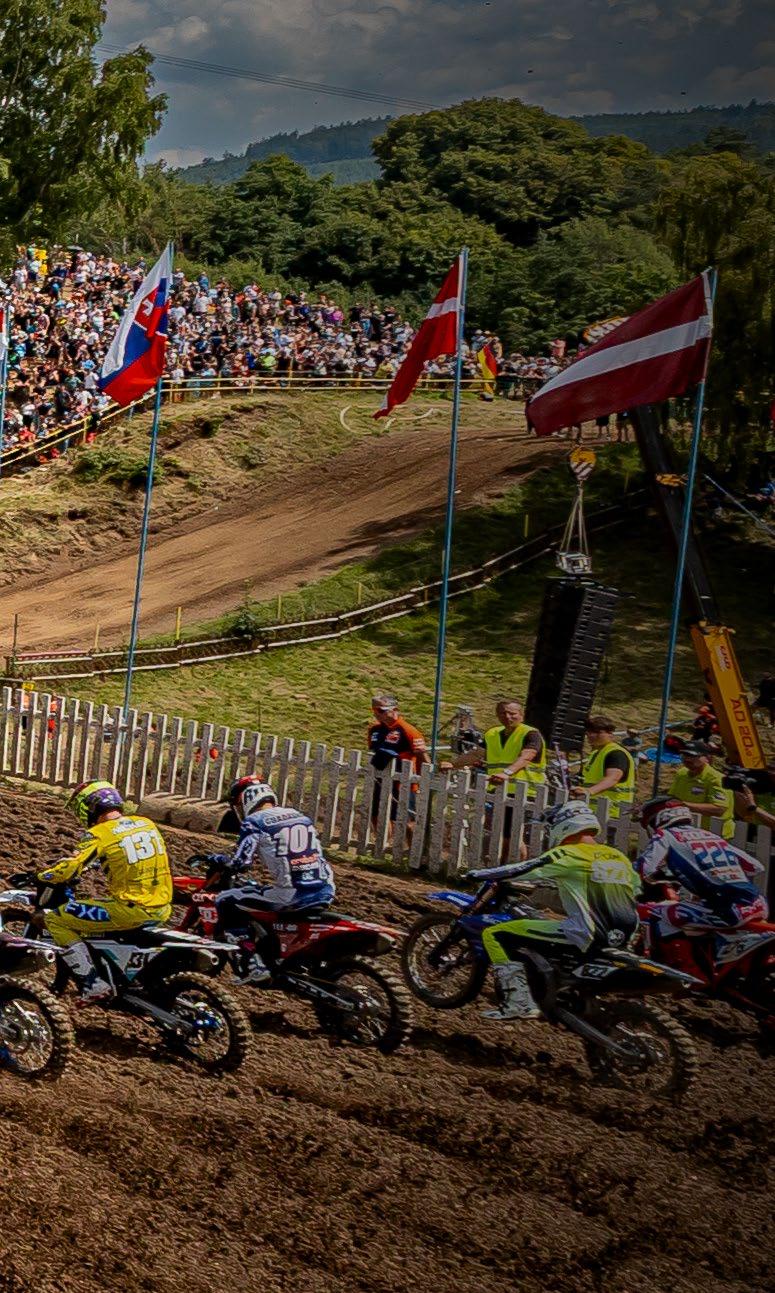
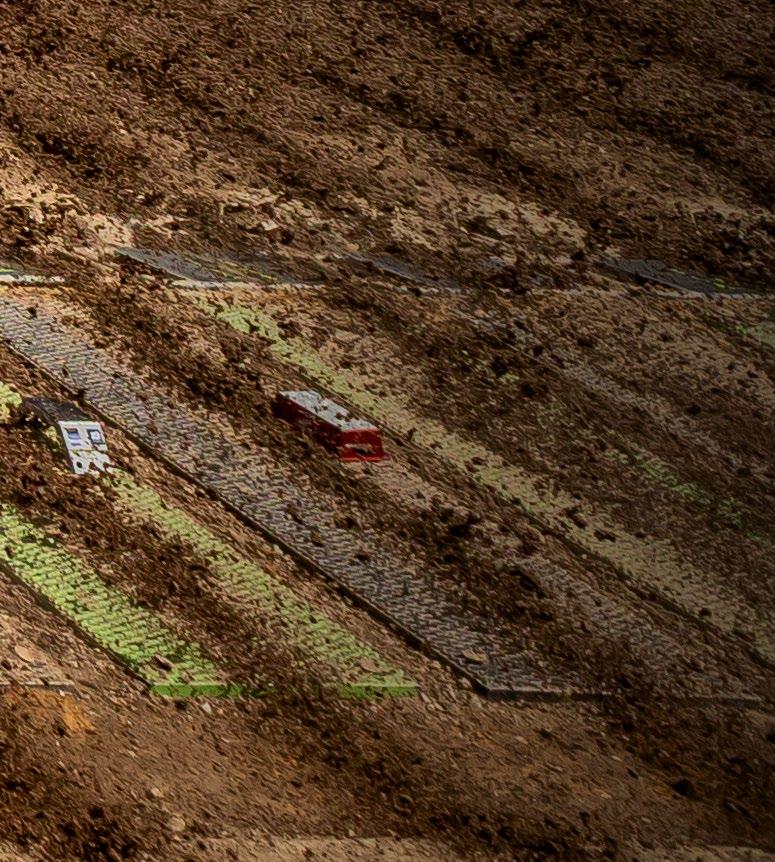
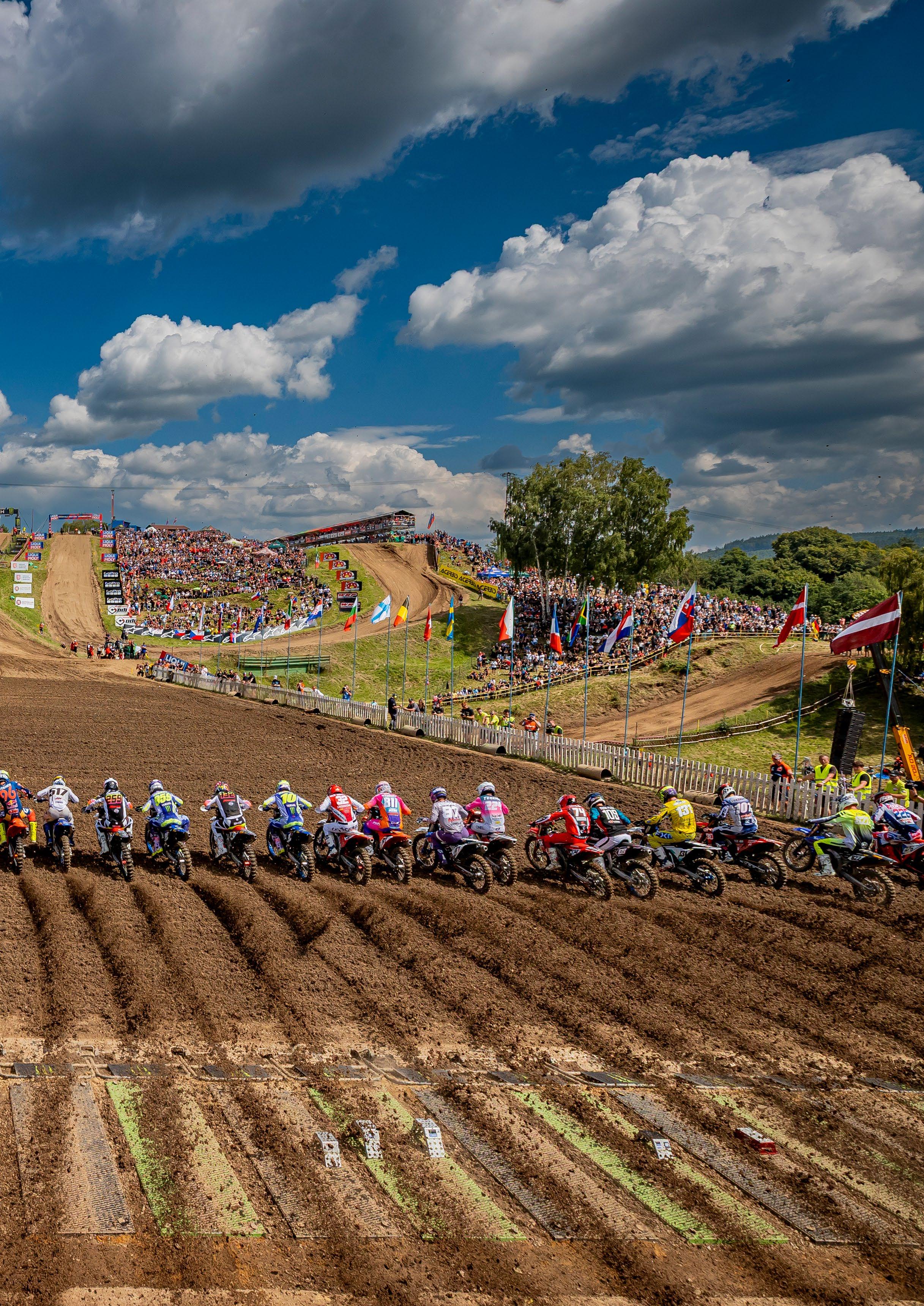
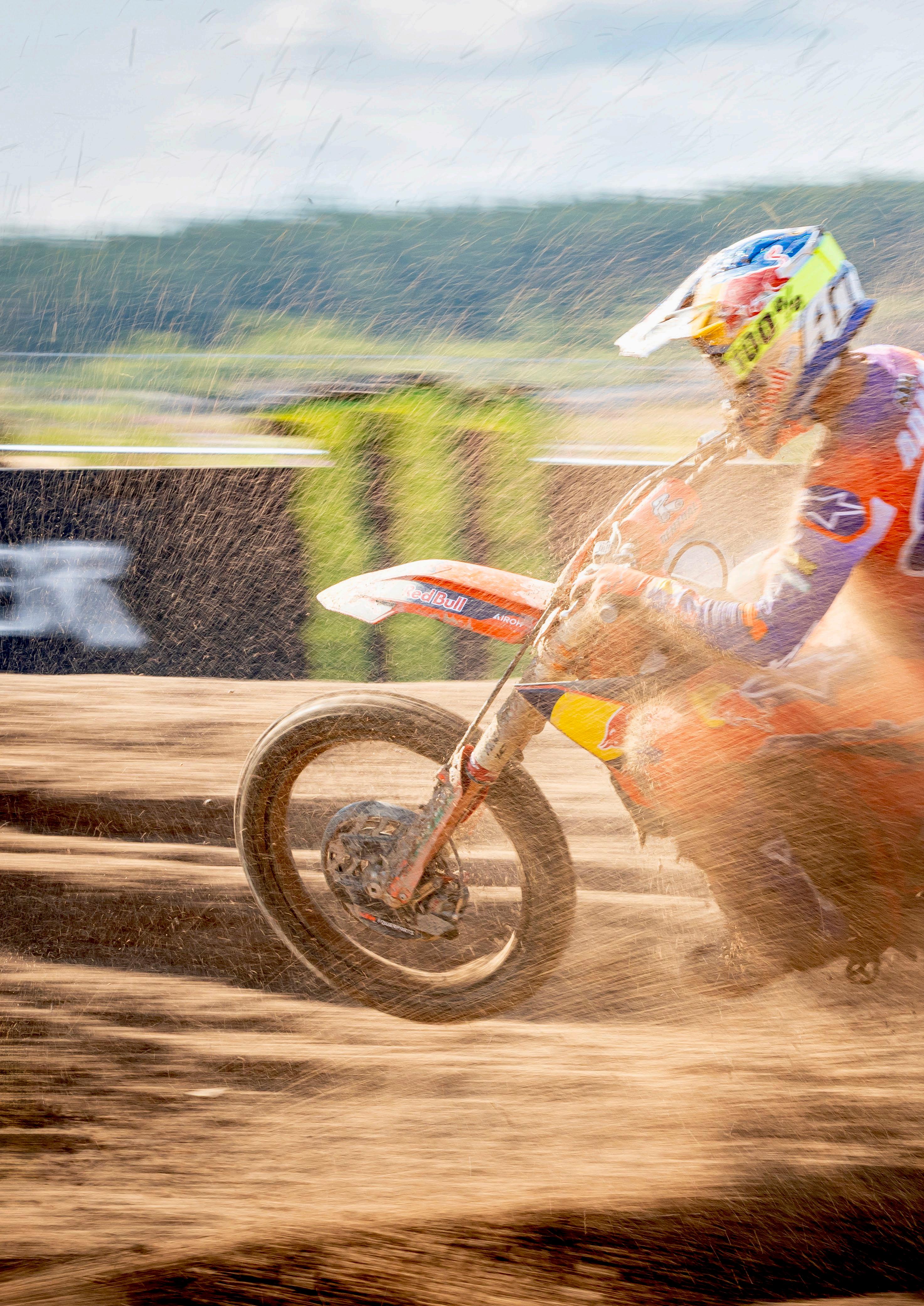
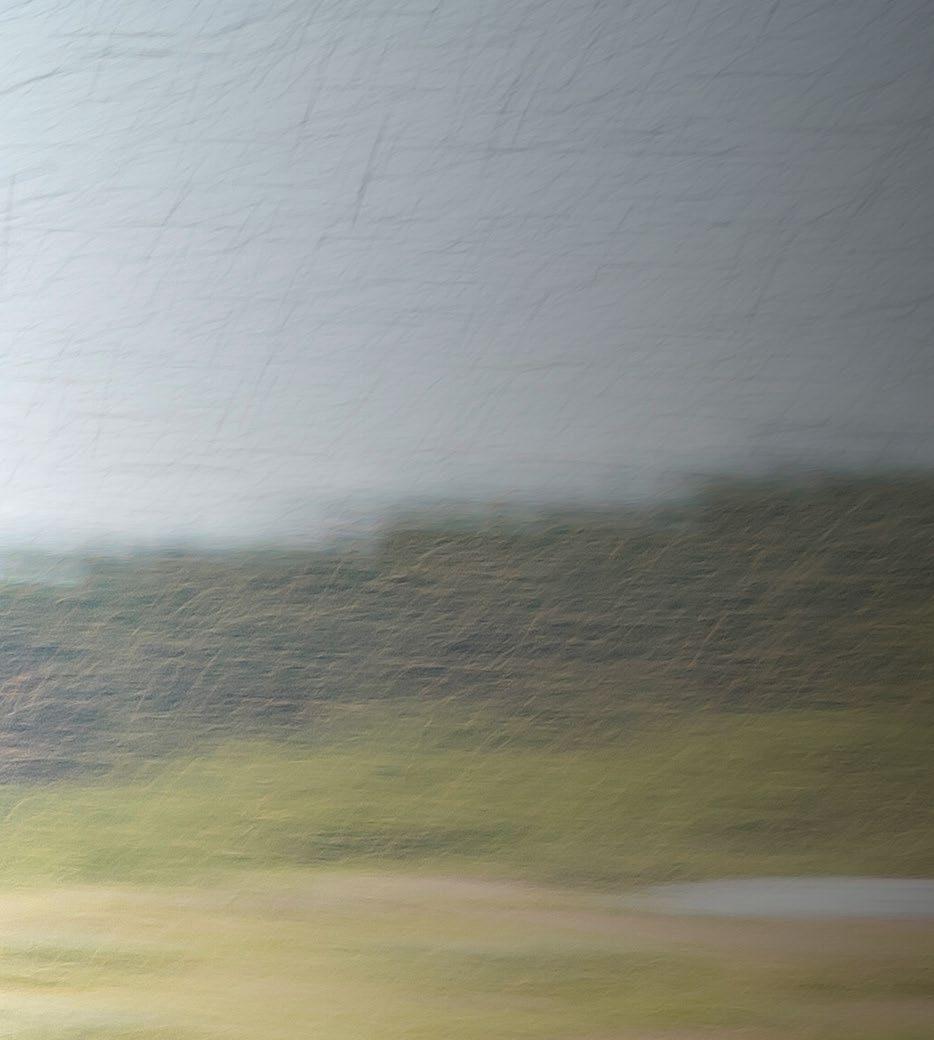
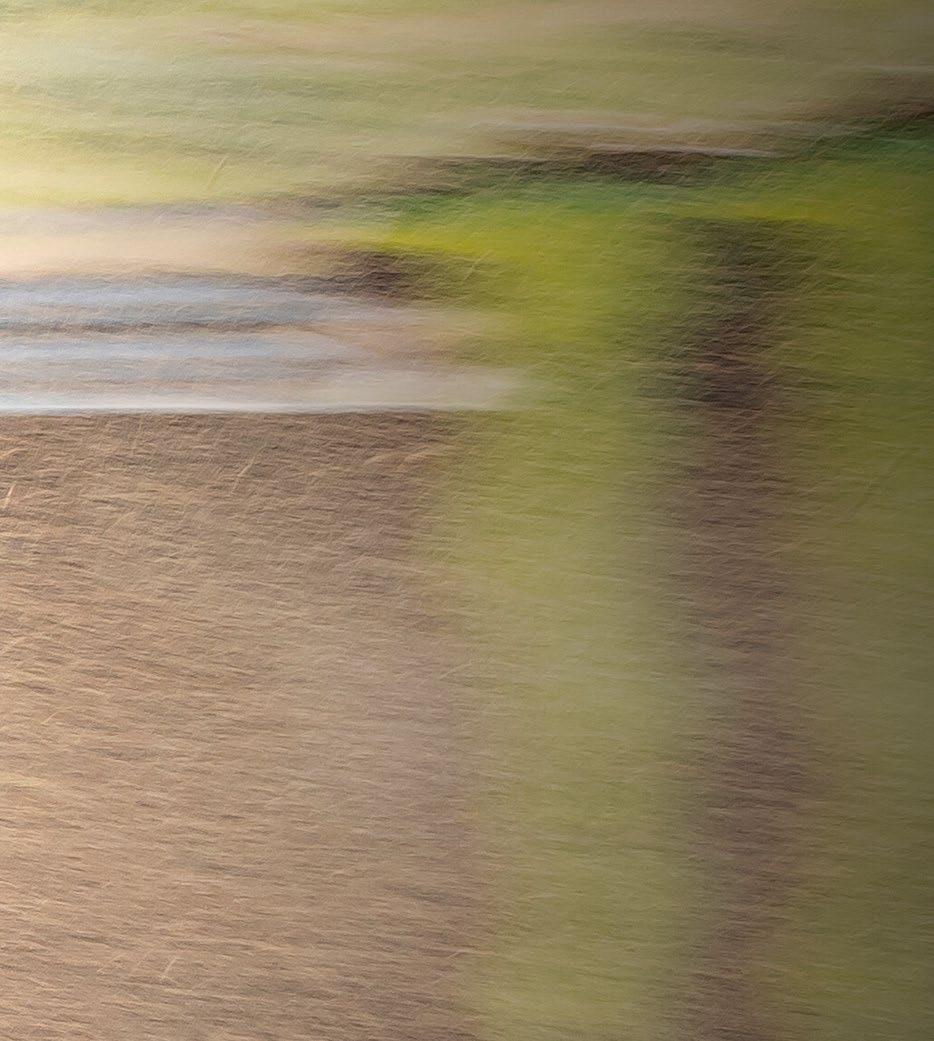
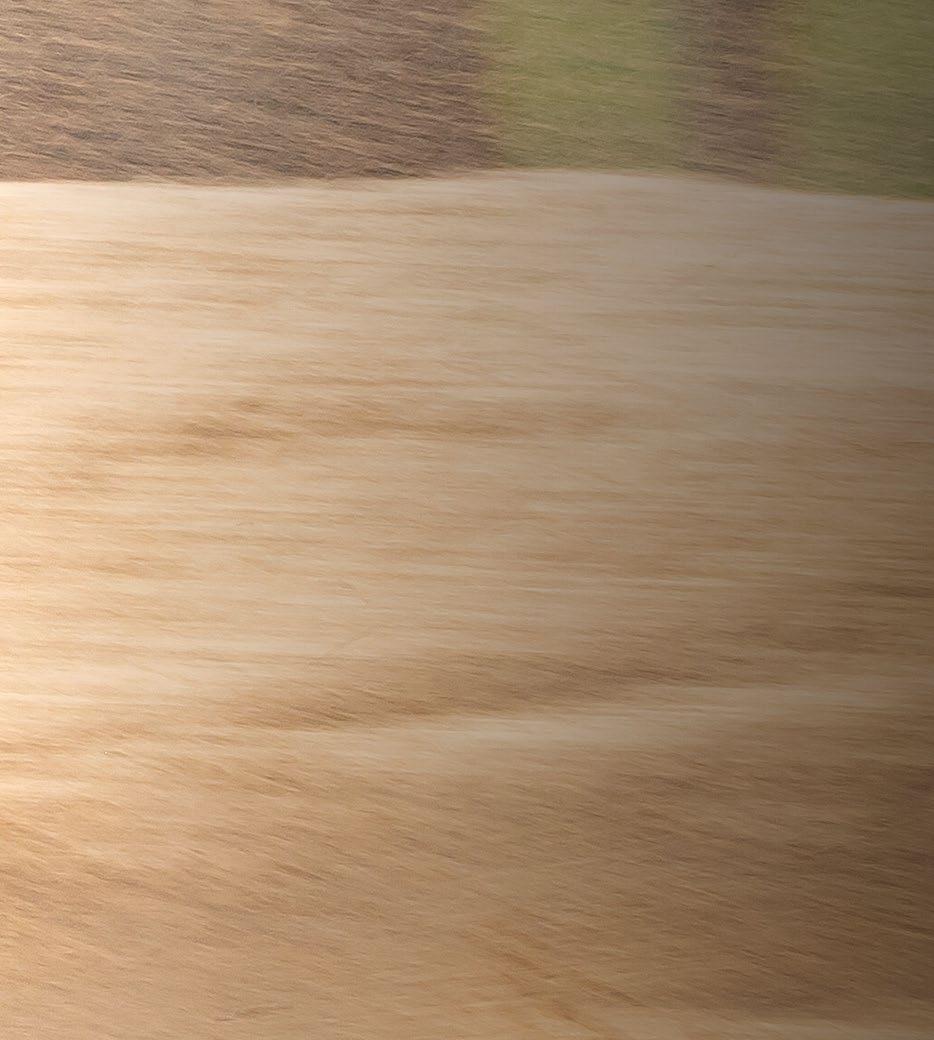
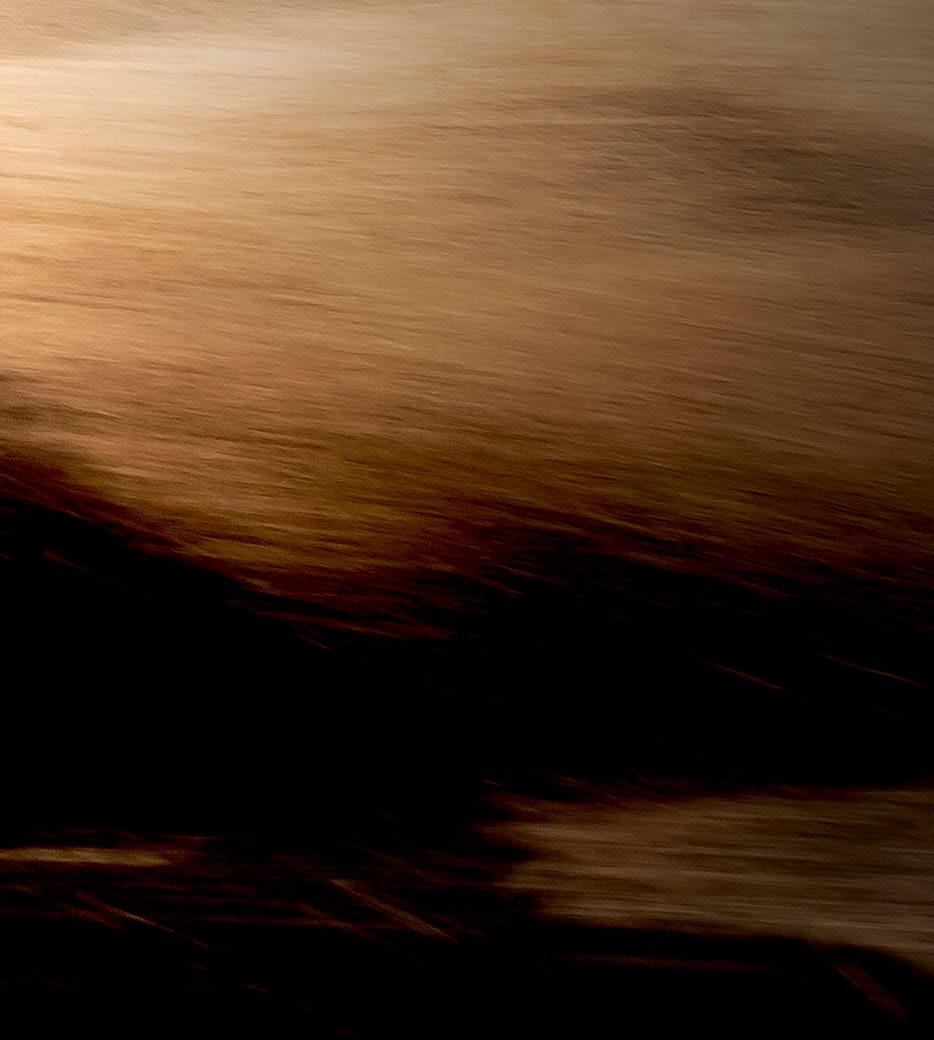

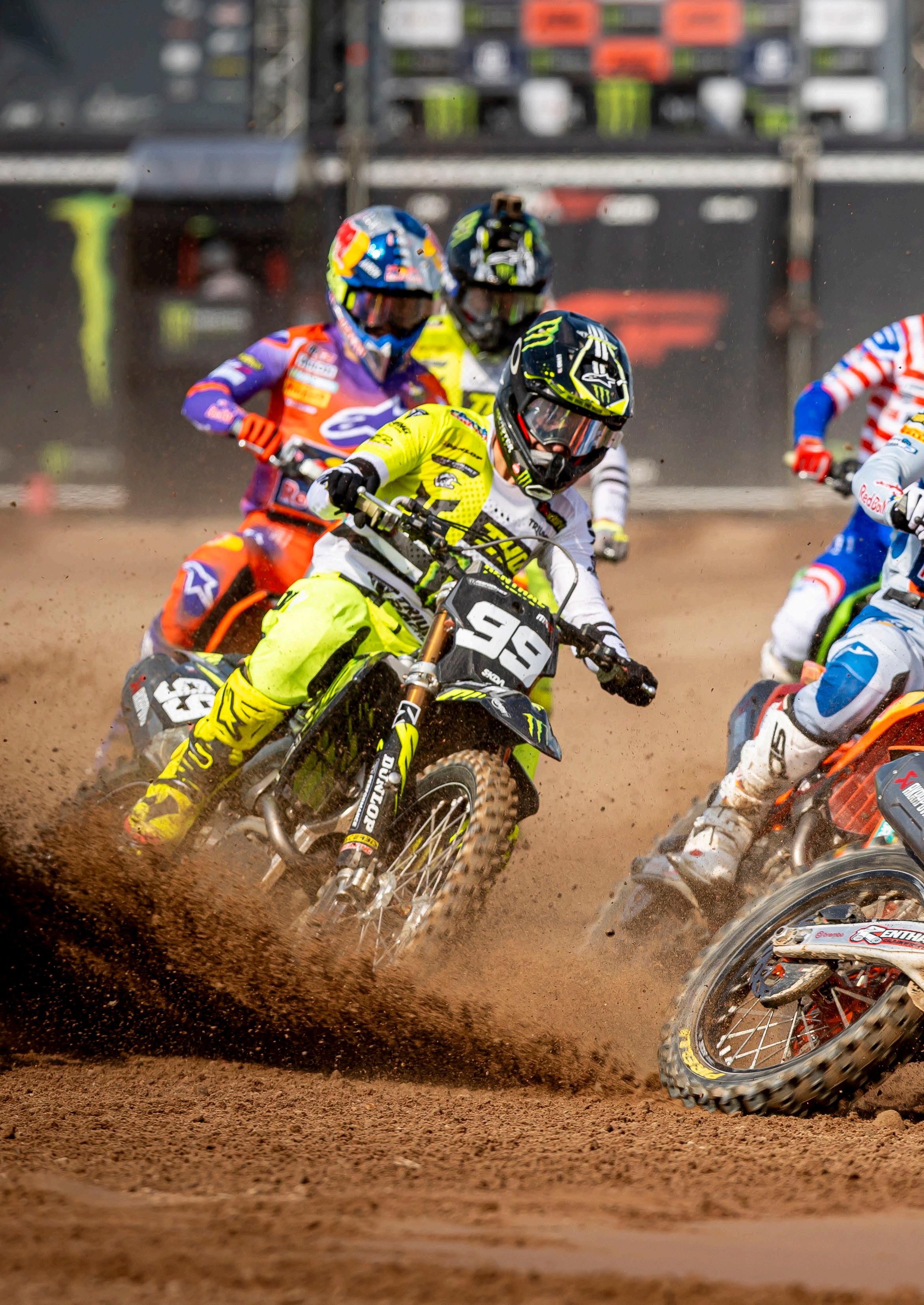
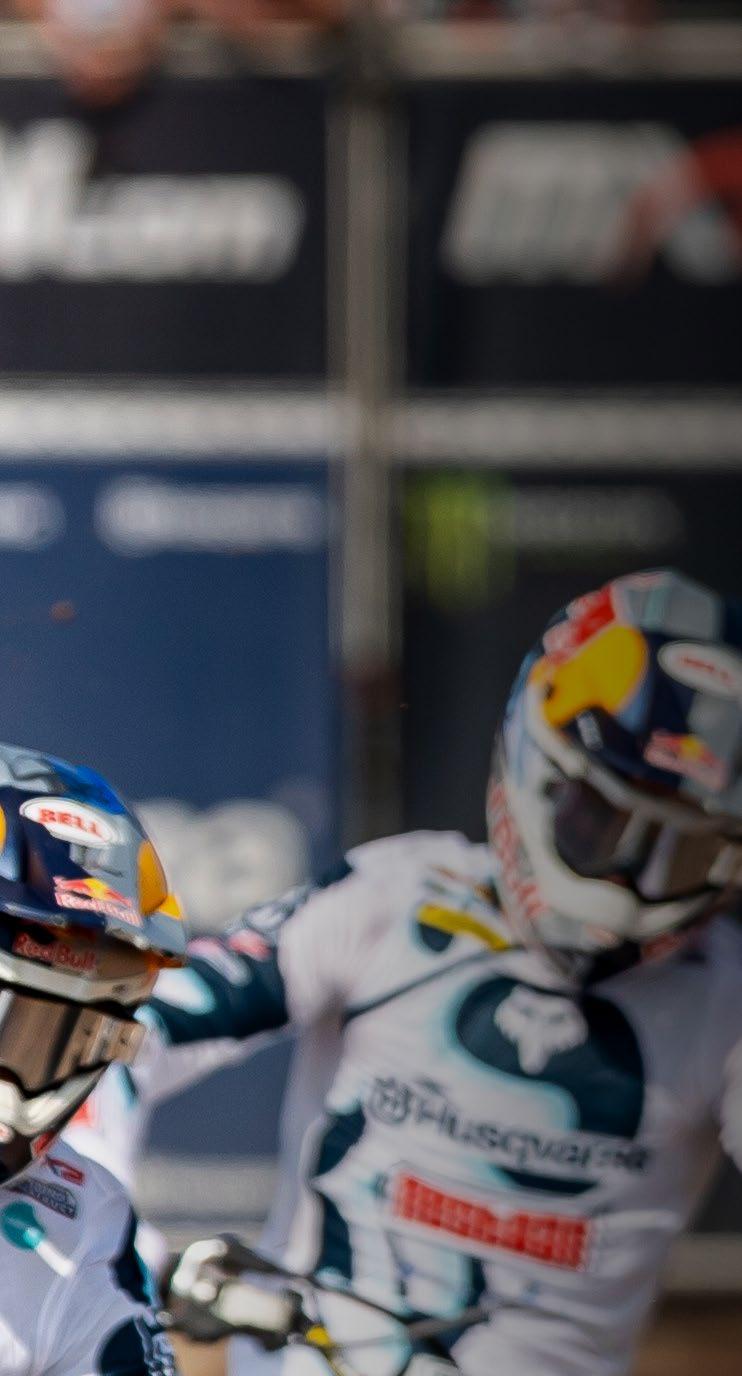
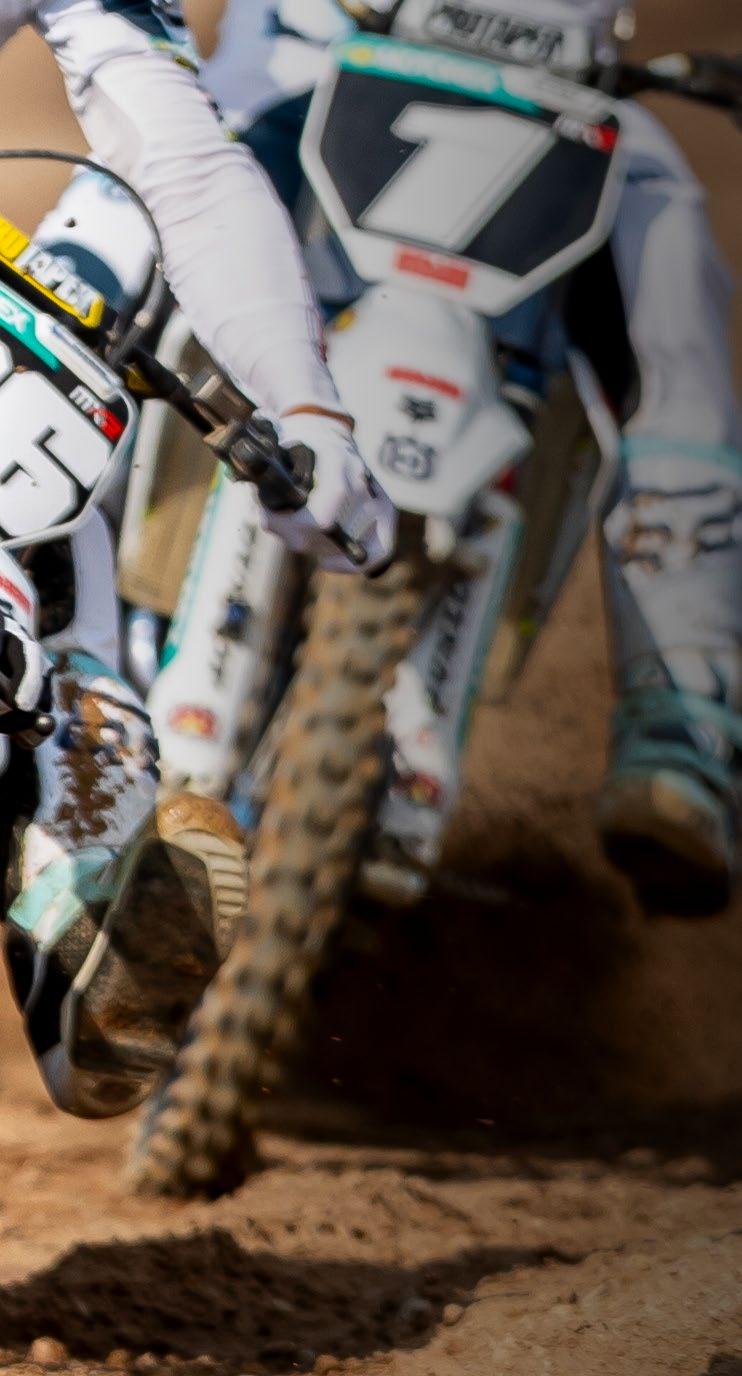
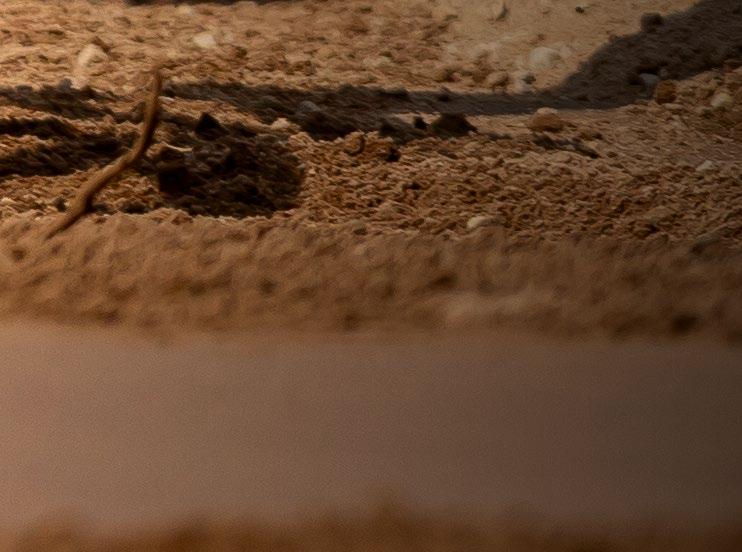

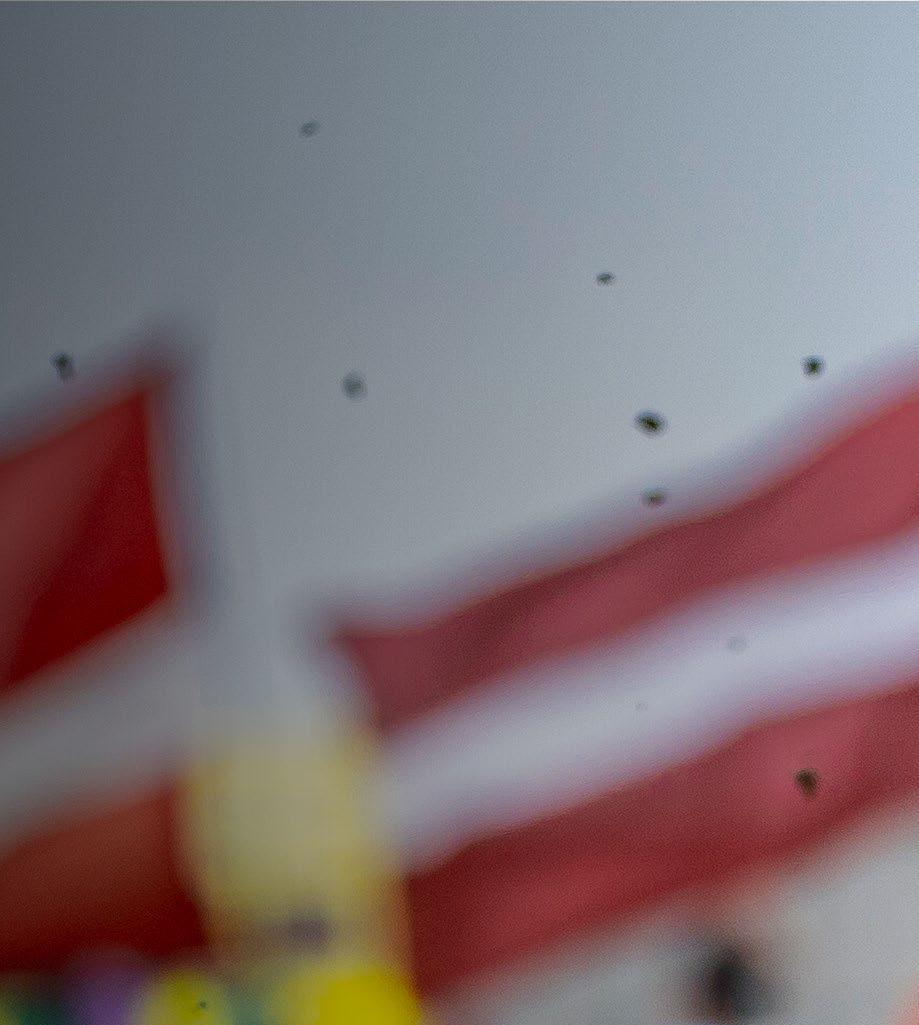
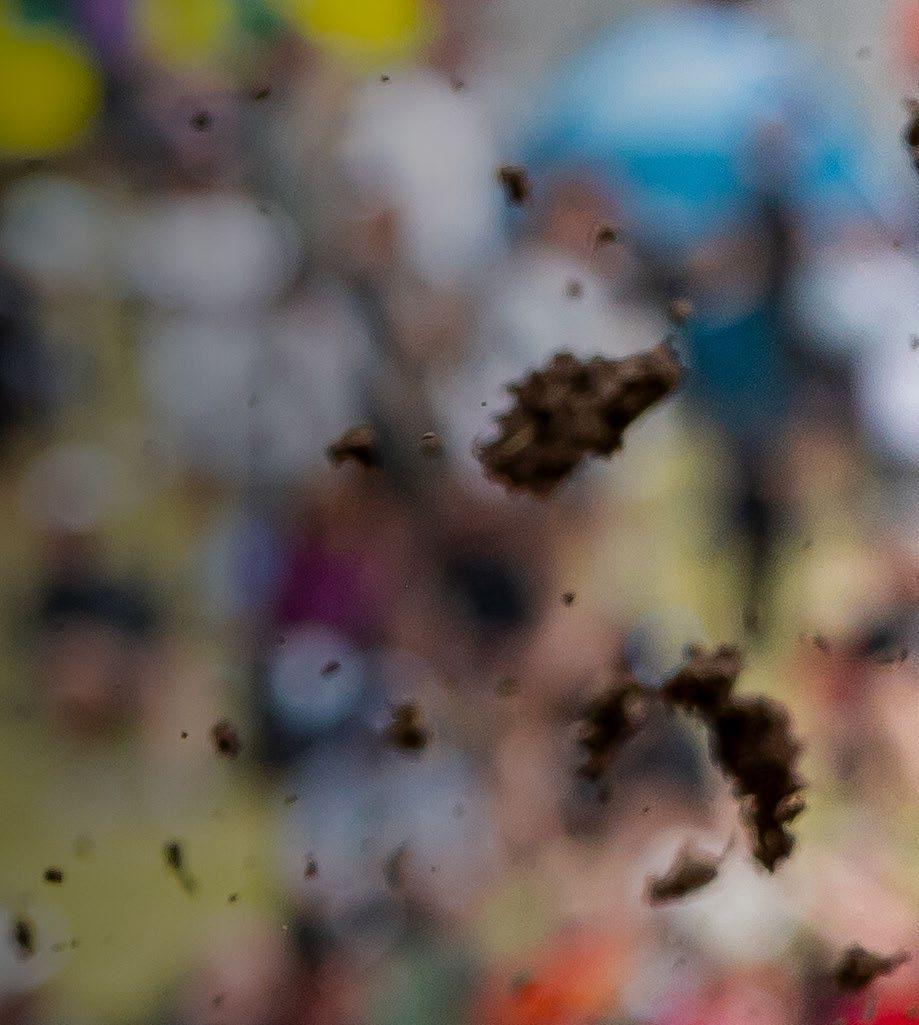
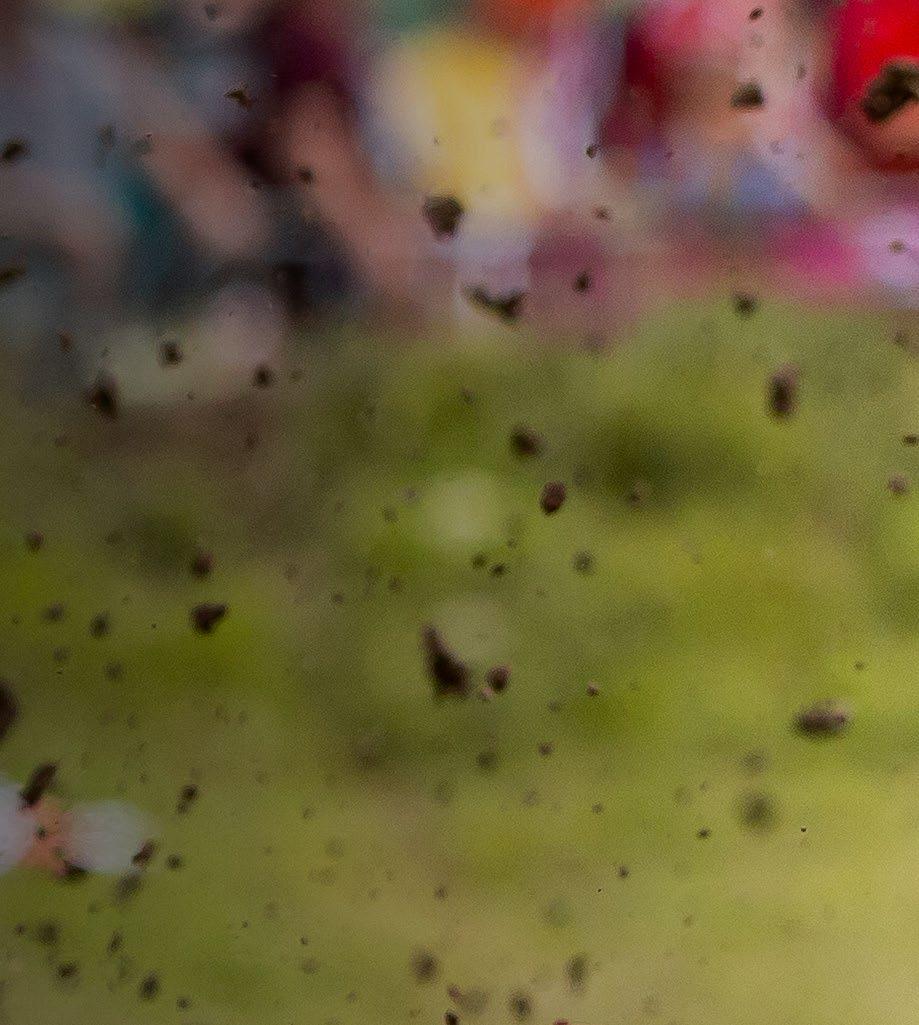
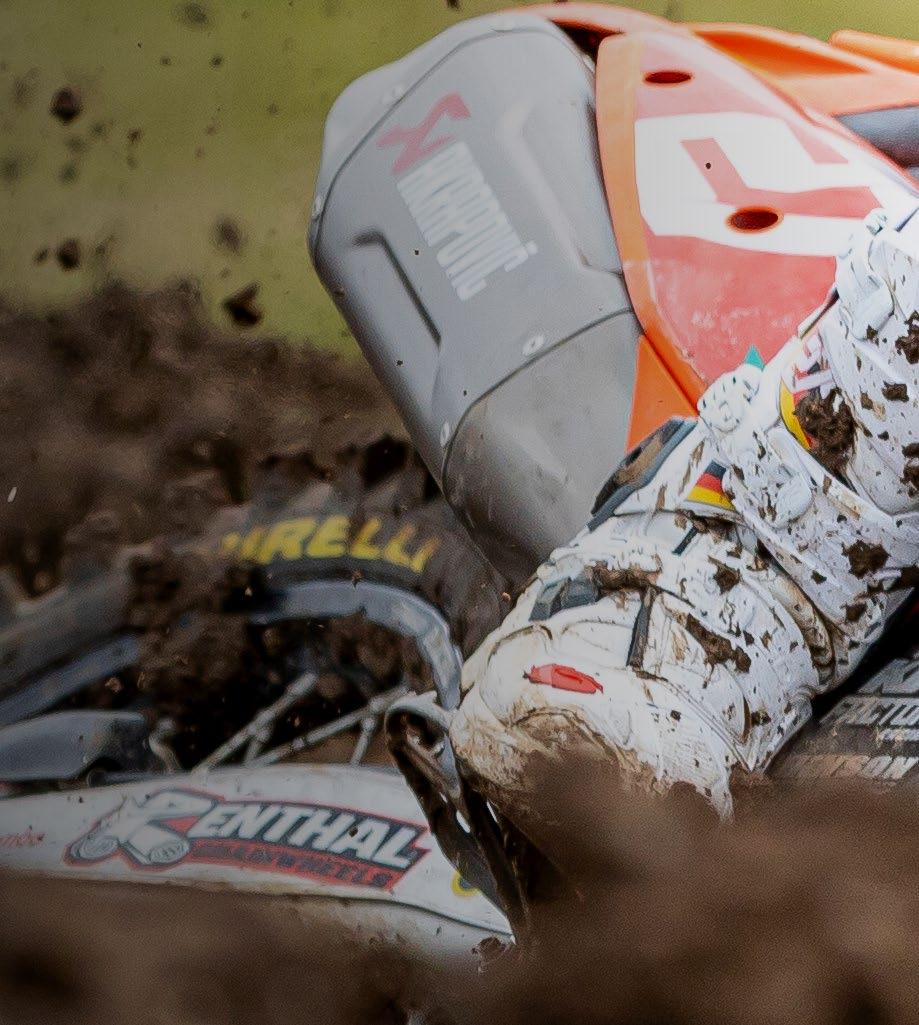
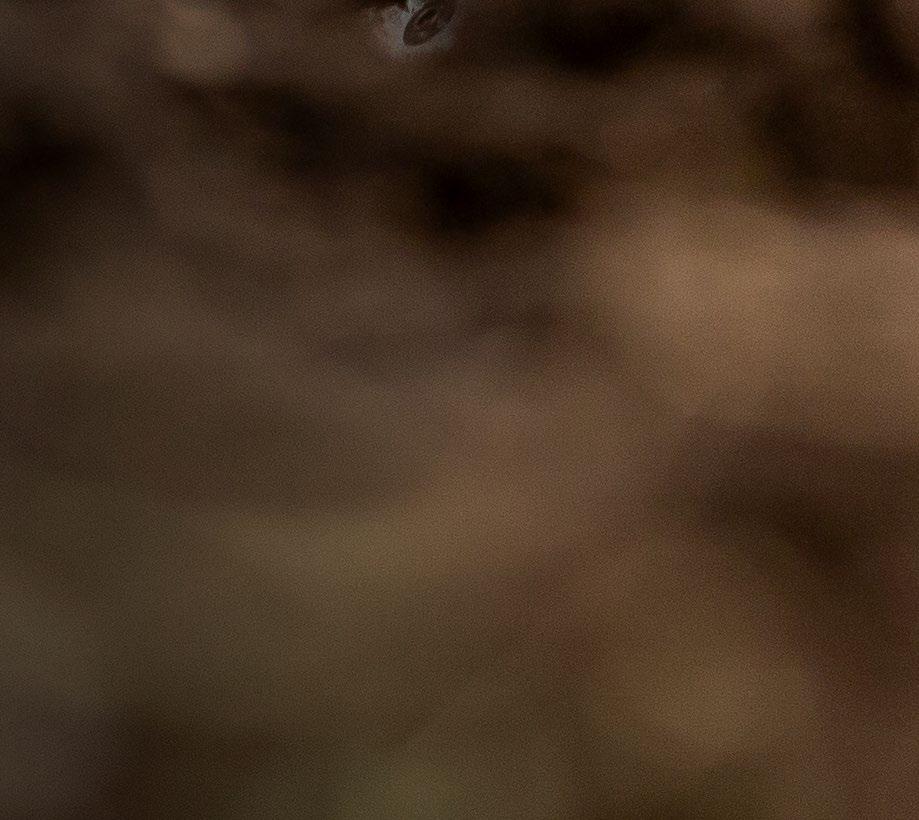


THE MXGP SEASON CONTINUES TO HAVE ITS MOMENTUM SWING ONE WAY AND THEN THE OTHER IN BOTH CLASSES, AND THE THREE GPS FROM THE GRASSLAND OF GREAT BRITAIN, THROUGH THE NORDIC SANDS OF FINLAND, AND ON TO THE ROLLING SLOPES OF THE CZECH REPUBLIC, SAW GP RACE WINS ONLY TAKEN BY TOP THREE TITLE CONTENDERS WITH SERIOUS EYES ON THE TITLE OF 2025 WORLD CHAMPION.
The mid-season of MXGP alternates from sand to hardpack and back again, as we went from Germany to Latvia, to the UK then Finland, and now from Loket to Lommel, and on to Uddevalla then Arnhem. It will be the riders who can master all conditions that will truly come out on top from this flip-flopping eightround run of contrasting surfaces.
Simon Längenfelder had re-claimed the red plate with his runner-up position in Latvia, but many expected his confidence to have been hit after losing the GP victory on the last lap of the weekend at Kegums, just as he did back at the opener in Argentina. The timing of Matterley Basin, though, was perfect. Site of his first ever GP win back in 2022, the German loves the place, and it soon became clear that he was going to be nigh on untouchable, especially after a big crash for Kay de Wolf at the very end of Time Practice which seemed to shake up the Dutchman. It was worse still for Valerio Lata, who hit the stricken Husqvarna on landing and, although still racing, he hasn’t quite been the same rider since.
An 11-second margin of victory for Längenfelder was astonishing for the Qualifying Race on Saturday; the following day he moved forward methodically in race one, then blitzed the field in race two to claim a perfect 60-point weekend for the first time in his career.
Oriol Oliver might have denied him that feat, however, as the Spaniard had the audacity to move past Andrea Adamo on the opening lap of race one and streak away with the lead! On home soil for the
Gabriel SS24 Factory Juniors team that he switched to mid-season, Oliver looked to be unchallenged until a tiny mistake through the waves carried a heavier penalty than the crime justified, and he had to settle for third behind the factory De Carli 1-2 of Längenfelder and Sacha Coenen. Coenen was pipped for second overall by a fine second race performance from Liam Everts, who scored his first podium for two months at Matterley. The title challenges of both Adamo and De Wolf hit the skids in Britain, however, with weekend points hauls around half of the 60 of Längenfelder. Suddenly it wasn’t even close at the top, and both chasers had some head-scratching to do before Finland.
Fresh from a suitably mighty weekend in Latvia, Jeffrey Herlings arrived in the UK with people still whispering about the prospects of a medal in the series, and swift moves past both Lucas Coenen and Holeshot man Glenn Coldenhoff set up a Qualifying Race win that proved immensely popular in the land where he took the national Championship in 2024!
Race one saw the other Red Bull KTM Factory Racing big dog in the class Holeshot and hide, with Coldenhoff and Ruben Fernandez scrapping as they gave chase. Herlings and series leader Romain Febvre suddenly had an old foe buzzing around them, as Antonio Cairoli gave his former title rivals a hard time on a one-off ride for Aruba.it Ducati! Chopping across the front of Febvre in turn three, then running up the inside of Herlings shortly after to let “The Bullet” know he was there, the legendary Sicilian was having fun with his “Sir Tony” Union Jack-decorated
kit, in the country where he has won more GPs than anyone else in Motocross history. Tony took seventh overall on the day, the fifth-best result for Ducati up to that point.
Coenen wasn’t enjoying himself quite as much after dropping his machine on the second full lap, allowing Coldenhoff through to lead at the venue where the Dutch veteran had won his first ever GP, on an unfamiliar machine they called a Suzuki back in 2013! Herlings stalked Coenen and went past on lap nine, looking threatening for the win before washing the front wheel out on the hard ground four laps later. The way was clear for the Hoff, who has won Grands Prix on four different brands already, to claim the first ever GP race win for Fantic in World Championship Motocross!
Febvre, who had to settle for third between the KTMs in race one, fired the factory Kawasaki into the lead
of race two, with Fernandez, Coenen, Herlings, and Coldenhoff in hot pursuit. In short, a re-arrangement of the top five in race one, but incredibly they would stay in those positions for the entirety of the race, as would everyone in the top ten! It’s difficult to say why some of the best riders in the world were unable to make a pass in over 35 minutes of racing, but it goes to prove that there is no script in MXGP, and that these guys can defend as well as they can attack!
Either way, Febvre came away with an increased lead for the first time in four rounds, up to 32 points, and Coenen’s face said it all on the podium with his fifth straight second place overall. This wasn’t a welcome trophy! Coldenhoff’s was though, as he strengthened his hold on third in the series after hounding Herlings for most of race two.

In the two weeks between Great Britain and Finland, Kay de Wolf had made a decision with the team that he needed a 60-point weekend, something he hadn’t achieved since Latvia in 2023, in order to get his title challenge back on track. Feeling healthier than he has since his crash at Ernée in May, the reigning Champ was a mighty force in the Finnish sand, and the maximum was never really in doubt as the new circuit broke up to generate lap times over 15 seconds slower than at the start of the weekend!
Still unable to Holeshot any race since the first Sunday gate drop of the season in Argentina, the tall Dutchman moved forward precociously all weekend long, truly working the track and those long levers to great effect, his favourite passing area being on an uphill wave section at the very top of the track within the impressive KymiRing F1 and MotoGP spec road circuit.
Another one getting back on track was Andrea Adamo, who won the last MX2 GP in Finland two years previously, and put in the sort of performance of someone who really has worked on their sand technique over the years. Unable to haul in Sacha Coenen in race two, the Italian former champ still took second on the day to stay marginally ahead of his successor De Wolf in the standings. Both made ground on Längenfelder, who salvaged fifth overall behind Coenen and Thibault Benistant but still lost 22 points to De Wolf.
It is a measure of the competitive nature of MX2 this year that the Finnish podium was the first “repeat” of a previous GP podium all season. De Wolf, Adamo, and Coenen had finished in that order back at Lugo in May, but apart from that the MX2 class has remained gloriously unpredictable all season, and Längenfelder got a warning as to just how deadly the Nestaan Husqvarna team leader can be in the soft stuff.
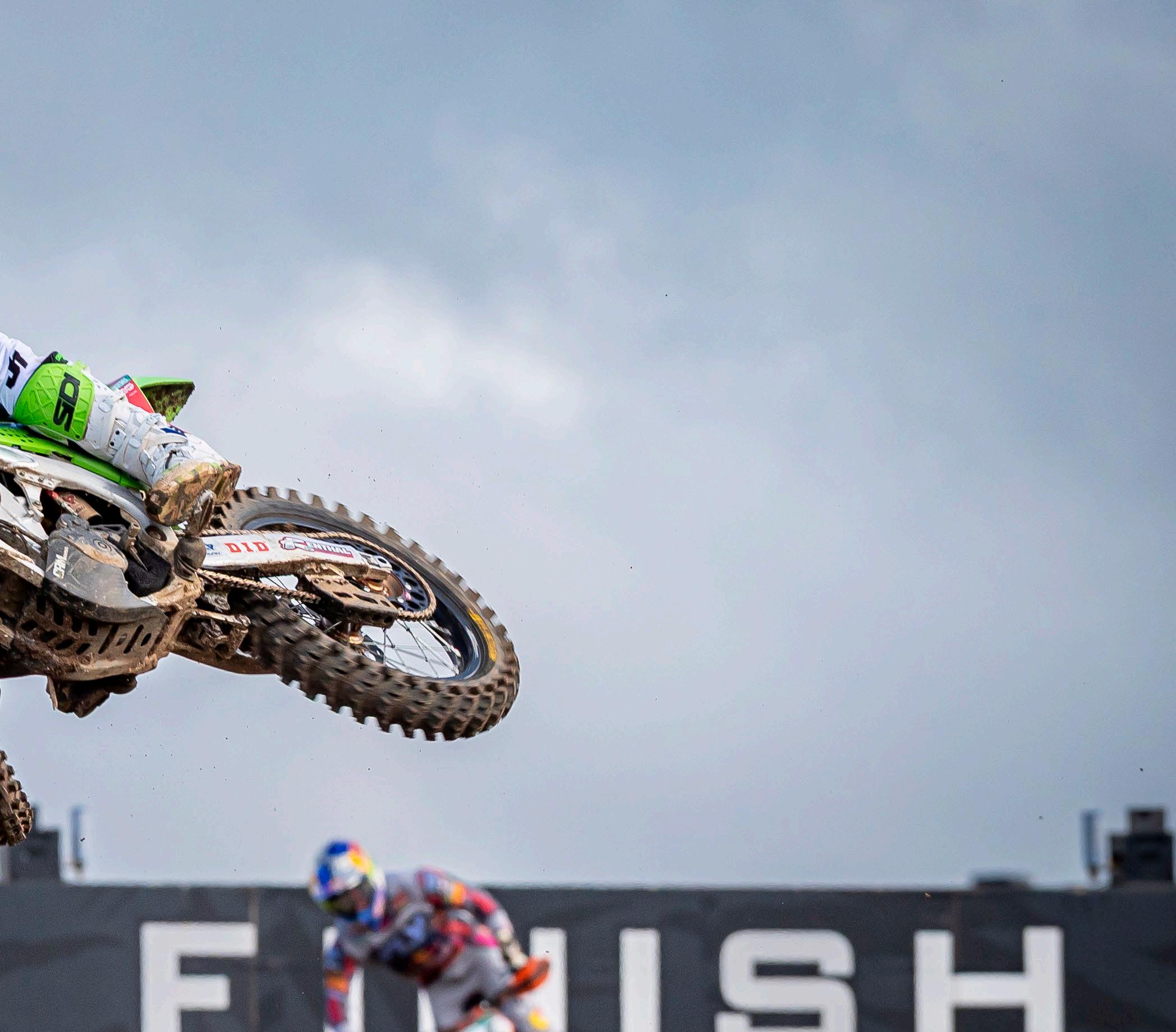

Sadly though, his teammate Liam Everts had crashed out of a commanding Qualifying Race lead on Saturday, sustaining a sacral fracture in a nastylooking get-off on those uphill waves. We wish him all the best in his recovery from this latest setback.
That second place for Coenen must have been burning for the entirety of the two-week break after Matterley, as he was clearly on a mission at the KymiRing, firing quickly to the front in all three races and taking the maximum 60 points on offer. It wasn’t without a hitch, however, as Sunday’s first race began with him setting a lap time below 100 seconds, the only one of either race that was nearly five seconds faster than anybody at that time. It was a breathtaking show of pace from the teenager, but he very nearly paid the penalty on the following lap as he had
a big scare through the uphill waves! He did well to back it down and stay on track, easing to a 13.9 second margin at the flag.
Behind him, Team Fantic were at the races again with a 2-3 for Coldenhoff and Andrea Bonacorsi, who is scoring more points in sand than on hardpack right now, while Febvre, frustrated by a collision with Coldenhoff in the Qualifying Race that put both veterans on the floor, struggled to fifth spot behind Calvin Vlaanderen.
The Monster Energy Yamaha Factory MXGP squad were celebrating the brand’s 70th Anniversary with a beautiful white, red and black colour scheme from the first days of their four-stroke trend-setter in the 1990s, and Vlaanderen, briefly able to lead in race two, did it some true justice with a sterling third overall, the
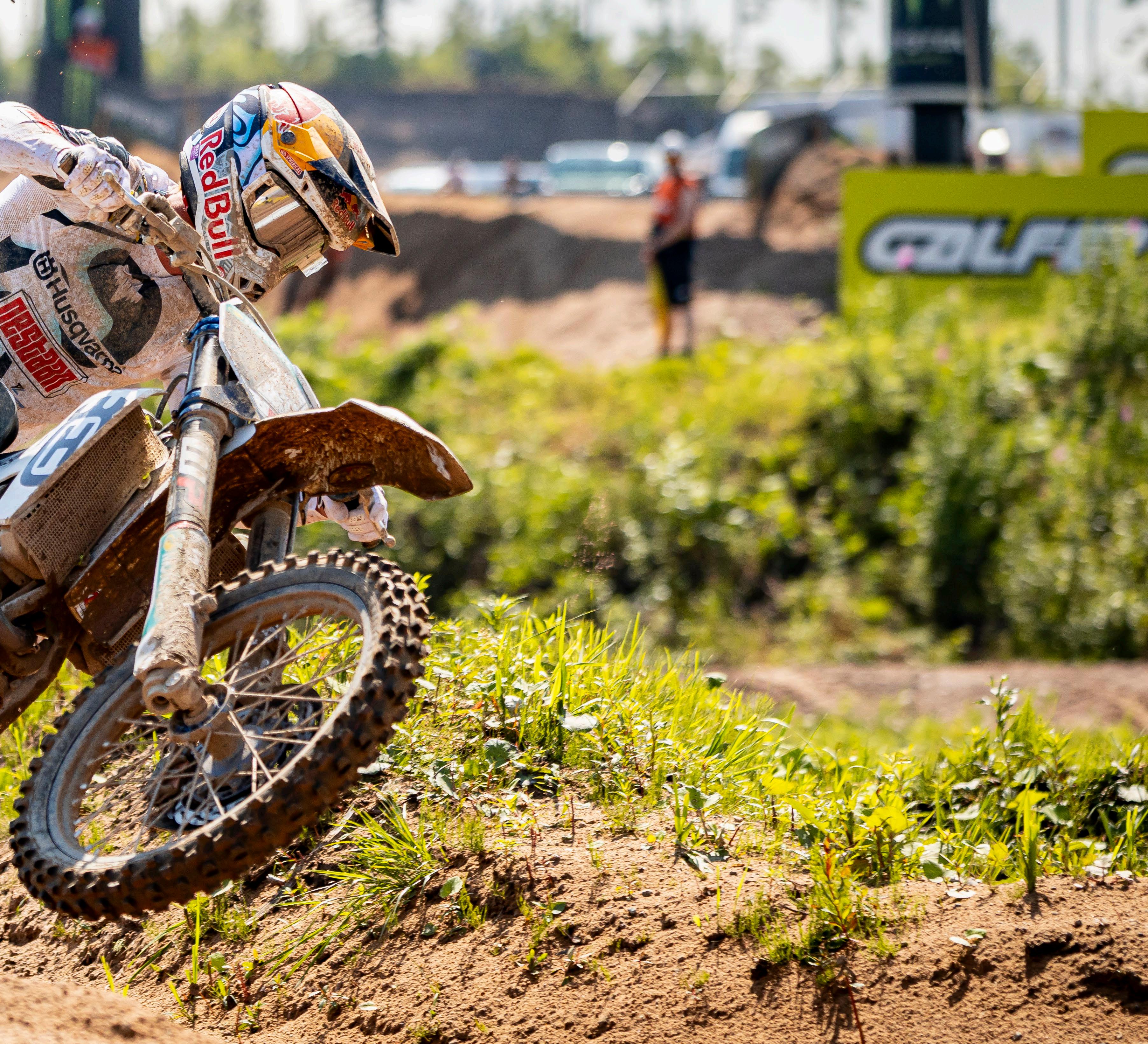
team’s first podium since Maxime Renaux’s win in the season opener.
He had led due to a pair of big mistakes from Lucas Coenen, who had grabbed the lead from double Fox Holeshot winner Glenn Coldenhoff into turn two and marched into the distance. He was helped by Coldenhoff and Fernandez coming together in spectacular fashion on the first lap, a move that blew the pack apart. Nevertheless, the teenage Belgian took a dive over the bars in a right-hander that had been troubling him all weekend, then nearly crashed again as Vlaanderen was on his heels. This gave the South African-born Dutchman the lead briefly on lap six, but a beautiful turn of speed on some downhill steps put the KTM back in front, and he powered away to an eventual 8.8 second win from Febvre, who
had got past Calvin in a crucial move two laps after Coenen.
The Championship gap had shrunk to just 15 points, and Coldenhoff was able to recover to fifth as Fernandez had to pull in due to damage from the initial crash between the two bronze-medal contenders.
All-in-all the KymiRing surprised many by delivering a solid circuit for the first international event held at the venue, and for sure it will be a welcome sight on the calendar for the sand lovers in years to come!
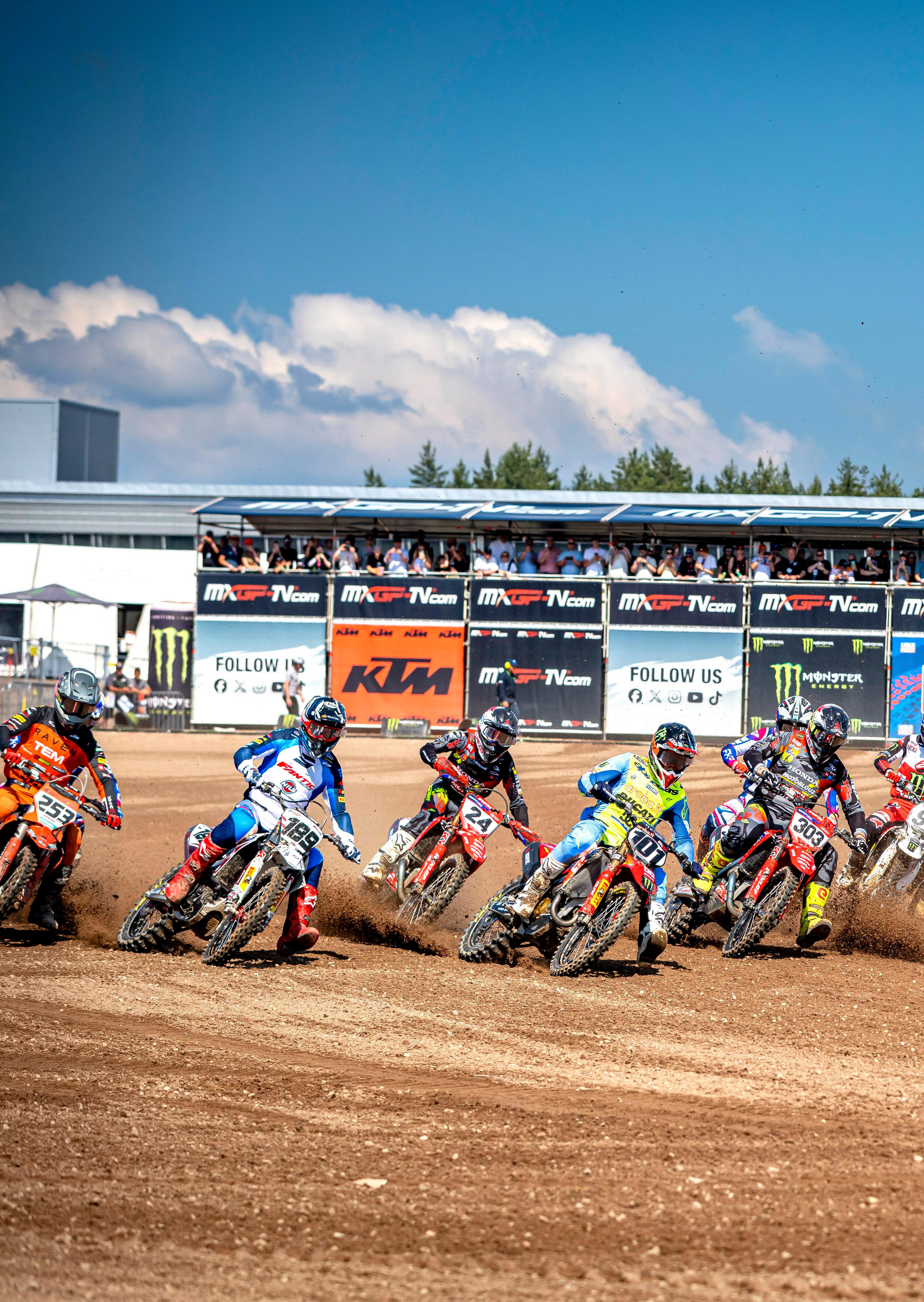
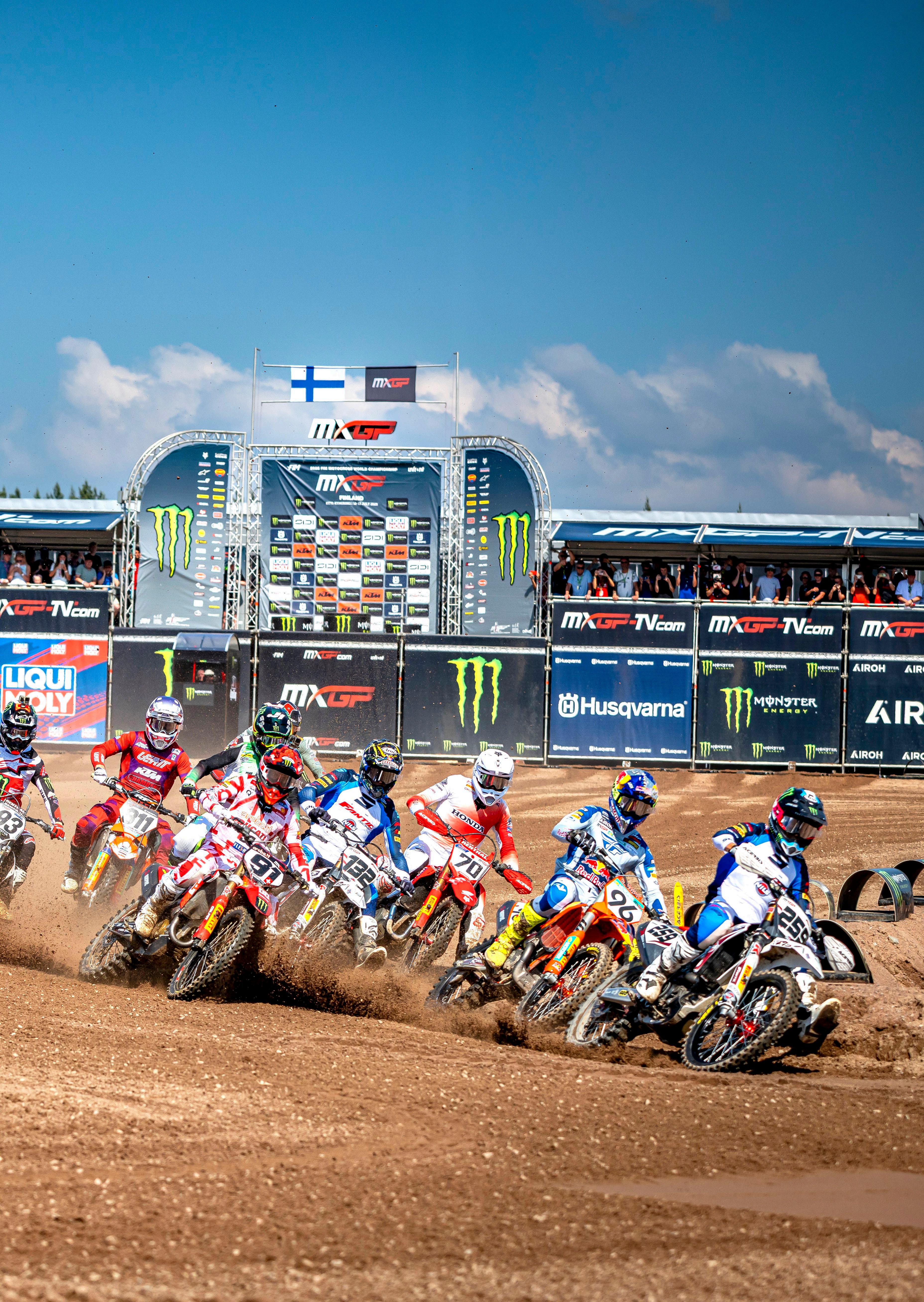
From the shiny and new KymiRing to the classic glory of the old-school Loket circuit, the MXGP elite had to deal with adverse weather once more in 2025 as the heavens opened at the end of MXGP Time Practice, making it extremely tough for the young riders in the junior classes at that event, as well as for the very best on a slick surface that still held plenty of speed!
From the first gate pick, De Wolf went for the far outside gate in Saturday’s Qualifying Race, a gamble that simply did not pay off as he was squeezed by David Braceras towards turn one! It was a rookie 1-2 in front, however, as former EMX250 rivals Mathis Valin and Valerio Lata led the way in a race where a start was worth its weight in gold. It finished that way out front, making Valin the seventh Quali Race winner in the class, and the 11th rider to win a race of any kind through the MX2 season. It was also the first MX2 Quali Race win for Kawasaki since they started counting for points!
De Wolf battled all the way through to third after a stunning first lap burst of speed put him up to sixth, passing Längenfelder on the way, one of three riders in a single downhill stretch! The German could only salvage sixth on a track that was supposed to suit him, so De Wolf would have felt confident about his Sunday prospects, especially after a last lap pass on Adamo had pulled him closer to the man directly
IT WILL BE THE RIDERS WHO CAN MASTER ALL CONDITIONS THAT WILL TRULY COME OUT ON TOP FROM THIS FLIP-FLOPPING EIGHT-ROUND RUN OF CONTRASTING SURFACES.

ahead of him in the standings.
However, it all swung around again as Längenfelder put in a masterclass in race one on Sunday. At the venue closer to his home than even his home GP, the German pulled out a stunning Fox Holeshot, and with the names behind him reading Farres, Valin, Coenen, and Benistant, there wasn’t a title challenger in sight as he pulled a considerable gap almost instantly.
Coenen was able to muscle his way into second and back up his teammate in style ahead of Valin and Farres, but Adamo and De Wolf in fifth and sixth was a massive bonus for Längenfelder. He could ride without pressure in race two, and again he picked his way methodically forward for second place and the overall GP win, his fourth of the year. He has now won more GPs in 2025 than in the rest of his career beforehand.
Valin had taken his first career Fox Holeshot Award in race two, and although the top two men in the series
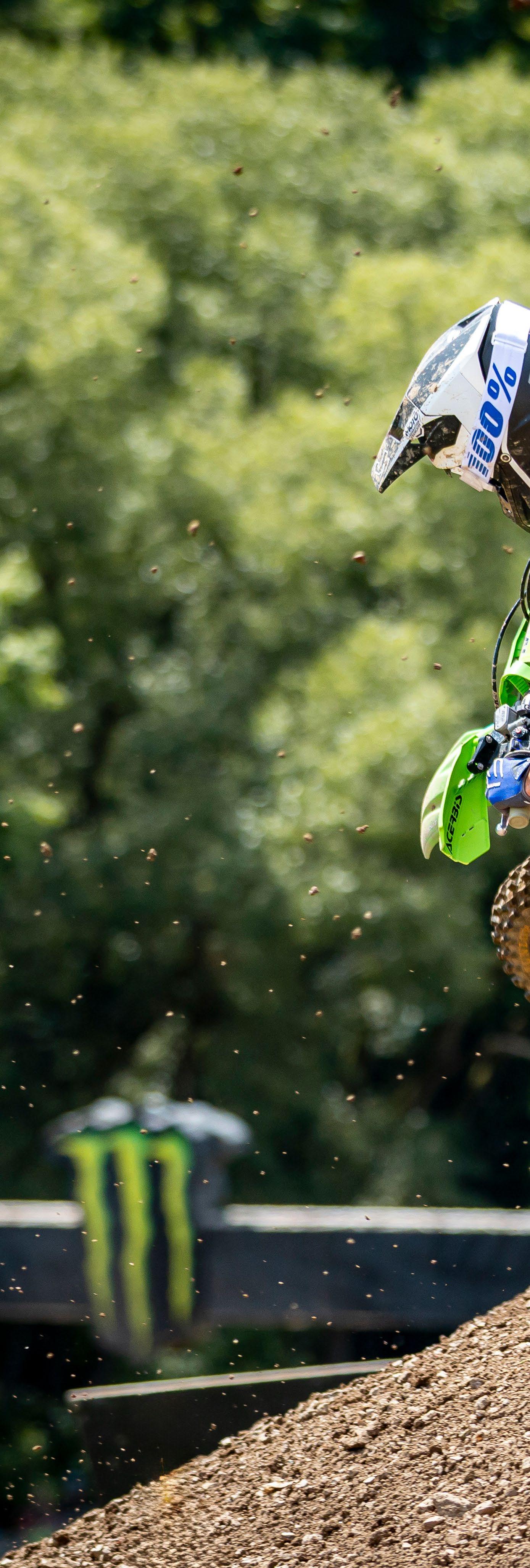
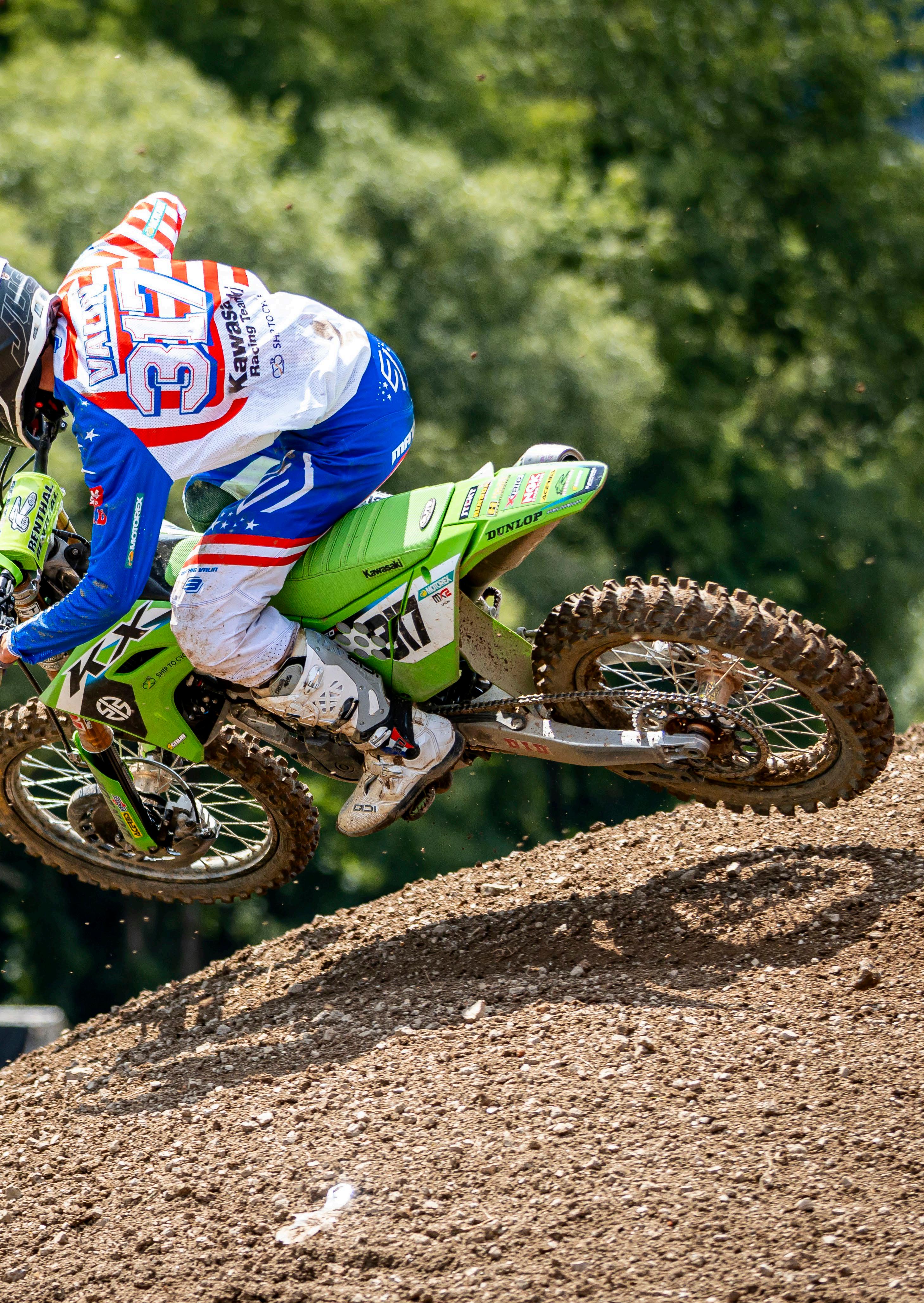
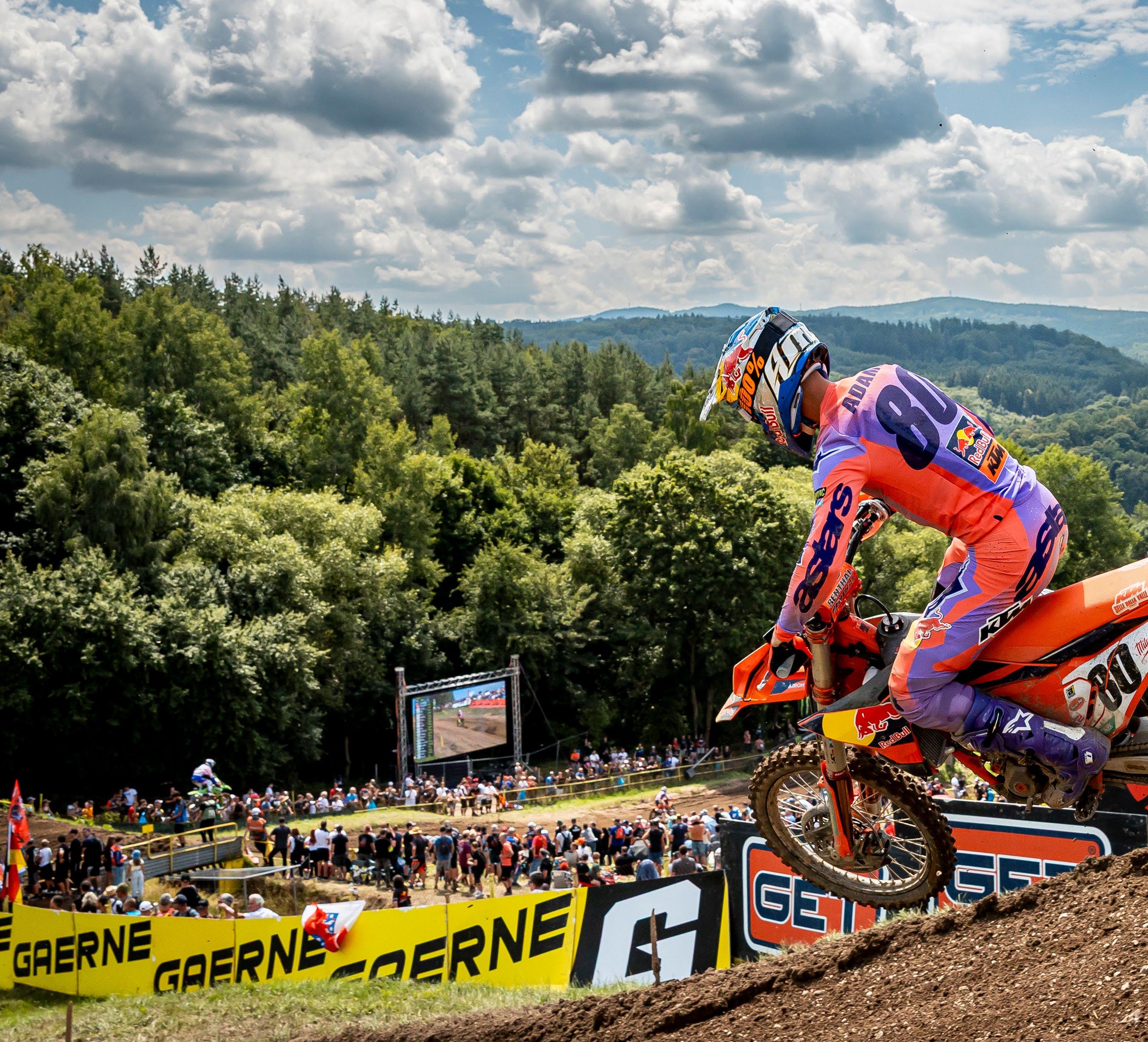
got past him, the quirky French whizz-kid took third for his first career podium, and the frost for Kawasaki in MX2 since Kevin Horgmo in September 2023 at Türkiye!
Adamo could at least salvage a win in race two to grab second overall, but De Wolf was again in the wars with a poor start and small mistakes, eventually rescuing the situation with fourth spot. It puts further pressure on the two Benelux GPs to come, as he is now 59 back from Längenfelder, and 12 behind Adamo. Knowing De Wolf though, he will attack in style, Adamo will never give up, and Längenfelder has speed in his pocket. It should be a great last two months of the MX2 World Championship!
The MXGP class saw two wins out of three for Romain Febvre at Loket, the only circuit where he has won three GPs in total, but it was still a Grand Prix victory and a five-point gain over the weekend for
KNOWING DE WOLF THOUGH, HE WILL ATTACK IN STYLE, ADAMO WILL NEVER GIVE UP, AND LÄNGENFELDER HAS SPEED IN HIS POCKET.

dropped the bike behind Pit Lane on the very last lap, relegating himself to fifth and giving Coenen a ninepoint gain from the race itself!
Fernandez had got past Pancar soon after Febvre, and inherited second place, while Pancar completed his best ever race with a fine third place, ahead of a mass of factory talent including Coldenhoff in fourth and Maxime Renaux, back from injury with a sixth at the flag.
Race two saw a better start from Febvre, and even though Coldenhoff grabbed the Fox Holeshot Award and led for the first five minutes, it always looked like Febvre could pull a pass on the Dutchman, and took the win comfortably. Coenen got over a bout of armpump to take second and seal his second straight Grand Prix victory, while Coldenhoff claimed his first career podium at Loket, in his twelfth attempt!
Fernandez had got tangled in a first turn melee that also included Renaux, who pulled out of the race. Fernandez recovered to take seventh and therefore fourth overall. Pancar had suffered a crash and a dislodged chain on his way to 16th place, but had made his mark on the GP. Not to be overshadowed though was Gifting, who held off factory man Vlaanderen to take fourth and his first career top five position overall!
The contenders head to Lommel next, home GP for Lucas Coenen, but a place where Febvre has taken two GP victories from his last four visits against top opposition. With Gajser and Herlings set to return before the end of the year to get in the mix, the destiny of the title is almost impossible to predict!
Lucas Coenen! Febvre had made a brilliant pass on a fast-starting Coldenhoff through a slick right-hand turn to take the Quali Race win, although Coenen also got around the Fantic man to limit the damage to just a point. It was a good Saturday for the gallic men in green as they took wins in both classes!
The true damage was done for the Frenchman in race one on Sunday. Coenen had needed all of the factory KTM power to out-drag privateer Jan Pancar into the first corner and proceeded to break away at the front, while Febvre had to battle past another workingclass hero, Isak Gifting, back from injury and keen to establish himself at the front again. Pancar was riding the race of his life to hold back the series leader, while Coenen streaked away out front. Febvre had finally got past the Slovenian on lap 16 of 19, but incredibly
The EMX250 series was in action at both Matterley Basin and the KymiRing, and as the top two of Janis Reisulis and Noel Zanocz had their issues, Spanish rider Francisco Garcia took a double win in the UK to nail down third in the series. Ivano van Erp and popular Australian Jake Cannon completed the podium while Reisulis eked out a point over Zanocz with a 2-9 to the Hungarian’s 10-2.
In Finland, Garcia was at it again with another race win in front of Dane Nikolaj Skovbjerg, as Zanocz gained ground on Reisulis thanks to a crash from the Latvian which left him to recover to eighth position. The leading pair in the points would come together in dramatic fashion in race two as they disputed the lead, as the JM Racing Honda man forced inside the Team VHR VRT Yamaha Official EMX250 leader, pushing him off the circuit in a strong move that won him no fans in the Baltics! It earned Zanocz the overall verdict for the day, with Skovbjerg taking second overall thanks to a second race ninth from Garcia, who was third. With three rounds still to go the title
is still up for grabs as the Hungarian lies just 28 points behind his Latvian rival.
The EMX125 Presented by FMF Racing Championship has just one round to go after Nicolò Alvisi had a disastrous British round to lose 28 points to inform Frenchman and new 125cc FIM Junior World Champion Mano Faure. The Yamaha rider took a maximum at Matterley to level up the points with the Italian as they headed to Finland! Filippo Mantovani and TM rider Niccolo Mannini filled out the podium in Great Britain, and they lie third and fourth in the points respectively.
Finland saw Alvisi strike back with his second maximum of the campaign, but with Faure right behind him both times, there is a narrow six-point gap between them as they head to the deep sand of Lommel to decide the Championship! The chasing Italians had a nightmare in Finland, showing gaps in their sand technique, and are out of the Championship mathematically. Fantic man Francesco Bellei took third overall with two fourth places, thanks mainly to Faure passing his teammate Jarne Bervoets just before the final corner of the day! Bellei’s teammate Douwe van Mechgelen scored a third in race one, a career best, and like Bervoets was just a point off the podium.
Looking ahead to Lommel, with fairly equal form in sand throughout the season, the showdown between Faure and Alvisi, with just six points between them, should be an absolute stunner for the title!
PREMIX!
As has been the custom over the last few seasons, the MXGP of Czech Republic played host to the EMX85 and EMX65 Finale events, as well as the single-round EMX2t Championship for fans of the smell of premix!
The bark of 250cc two-strokes rang out through the Czech valley over both days, and although EMX250 regular and Beta rider Sampo Rainio from Finland won the first encounter in slippery conditions on Saturday, it was local favourite, and last year’s bronze medallist Vaclav Kovar that put his Becker Racing KTM out front early in race two, clinching the overall victory with a 2-1 scorecard! Italian Husqvarna man Andrea Rossi was pumped to claim second overall with 6-2 finishes, and his countryman Mirko Valsecchi rounded out the podium on his GASGAS. Rainio could only manage 14th in race two and therefore had to settle for fifth overall behind the Spaniard Elias Escandell.
The EMX85 finale looked like a nailed-on certainty for Lucas Leok, but yet again cruel luck struck the Estonian as his bike stopped on the start line, leaving him distraught and unable to compete for the title! That first race was won by Frenchman Enzo Herzogenrath, who had won the first race at the Junior World Championships, and he was able to take second in race two to clinch the EMX85 crown ahead of Spaniard Pau Caudet and New Zealander Jaggar Townley, son of former MX2 World Champion Ben! Leok did win race two in fine style ahead of Caudet and Herzogenrath, after race one runner-up Cristian Amali, from Italy, couldn’t get higher than 13th. A late crash for Townley nearly cost him the podium, but he salvaged ninth at the finish to earn himself a bronze medal!
The EMX65 battlers saw a French 1-2, as Mathys Agullo, who was so close to the 65cc Junior World title, made no mistakes this time with a perfect weekend to take the EMX65 crown! Liam Morette completed the French top two, while Haakon Ronning from Norway completed the podium with 3-5 finishes.
August will see more contrasting surfaces as we go from Lommel to Uddevalla to Arnhem, and there are bound to be more twists and turns to come in the title chases as we hit the final quarter of the season!
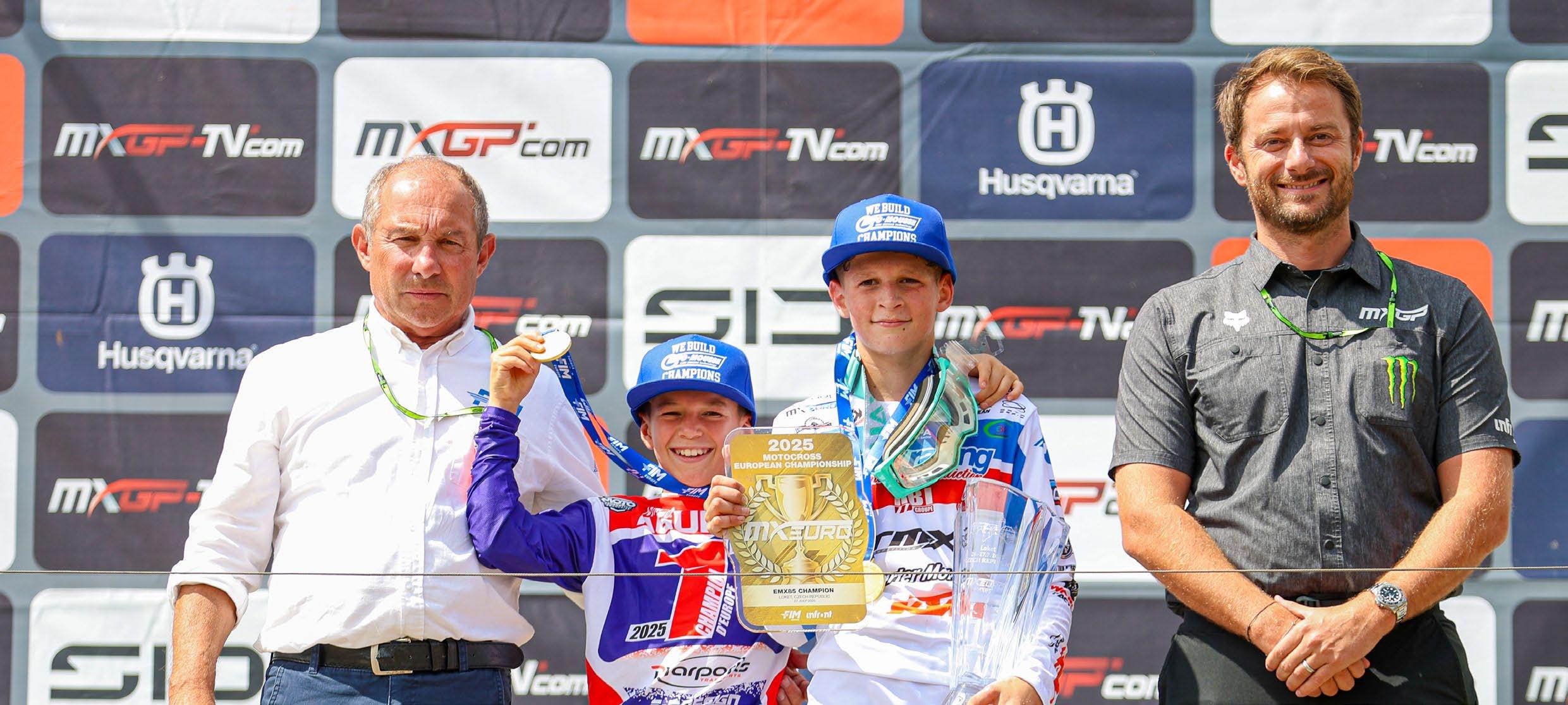
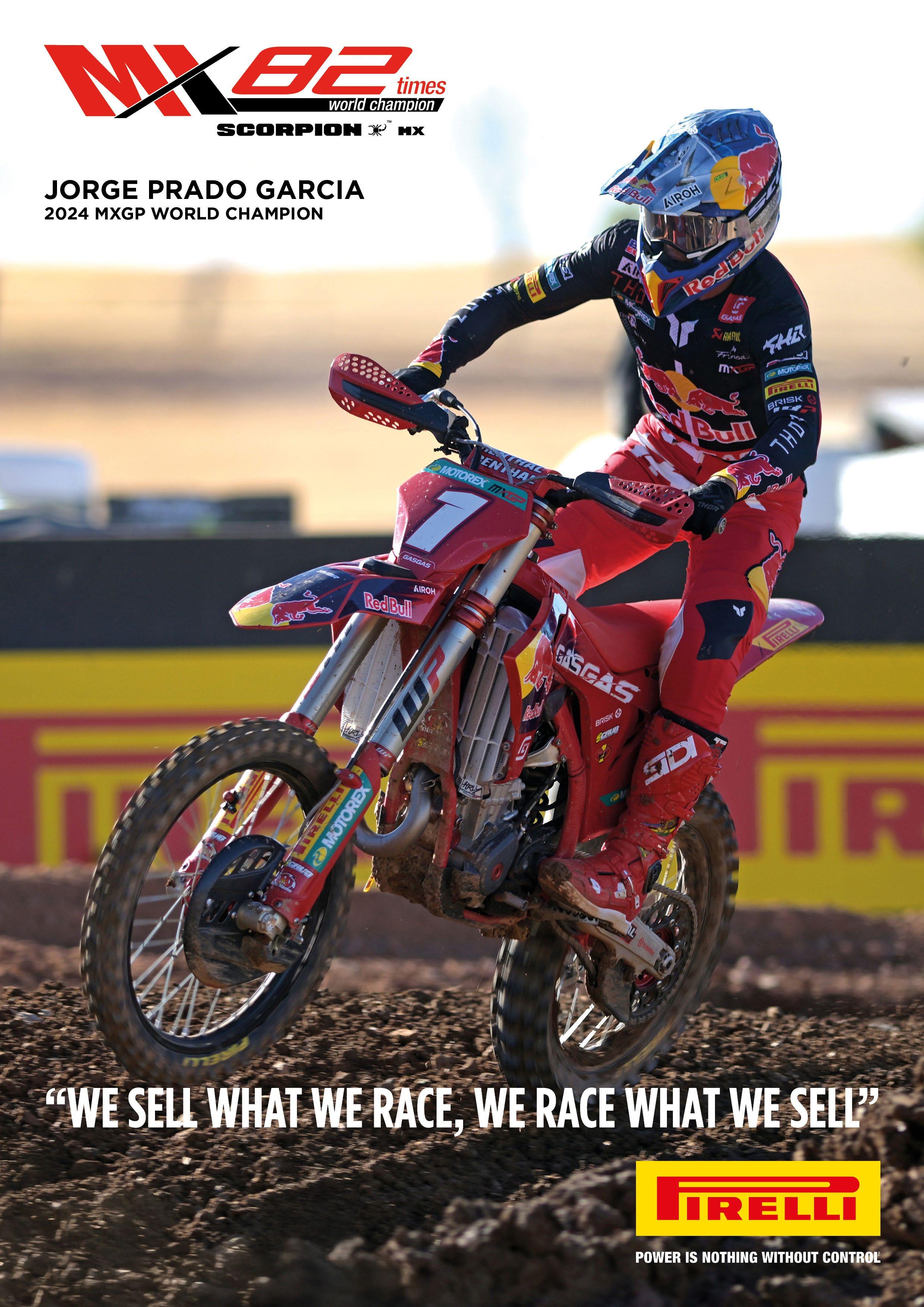

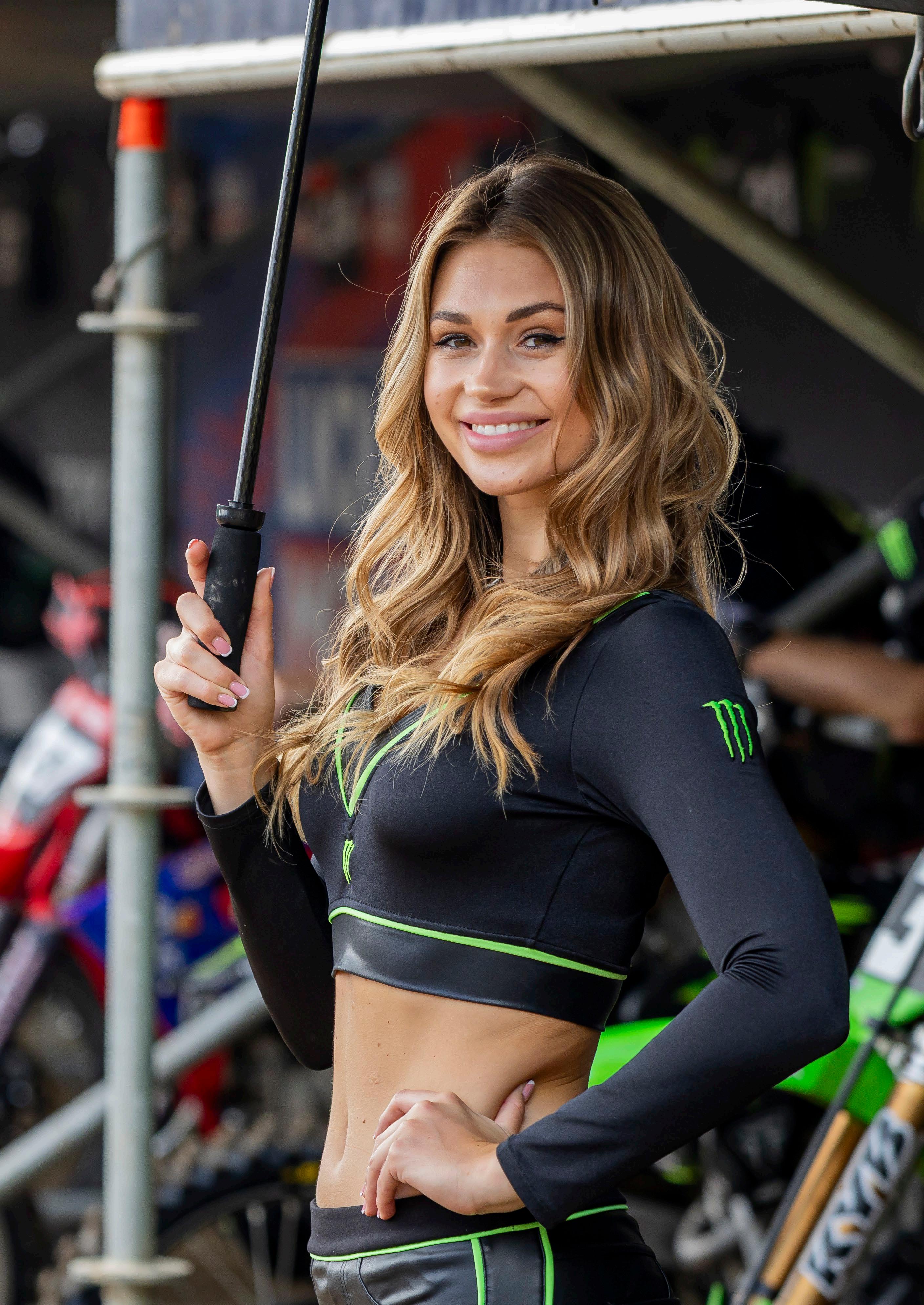
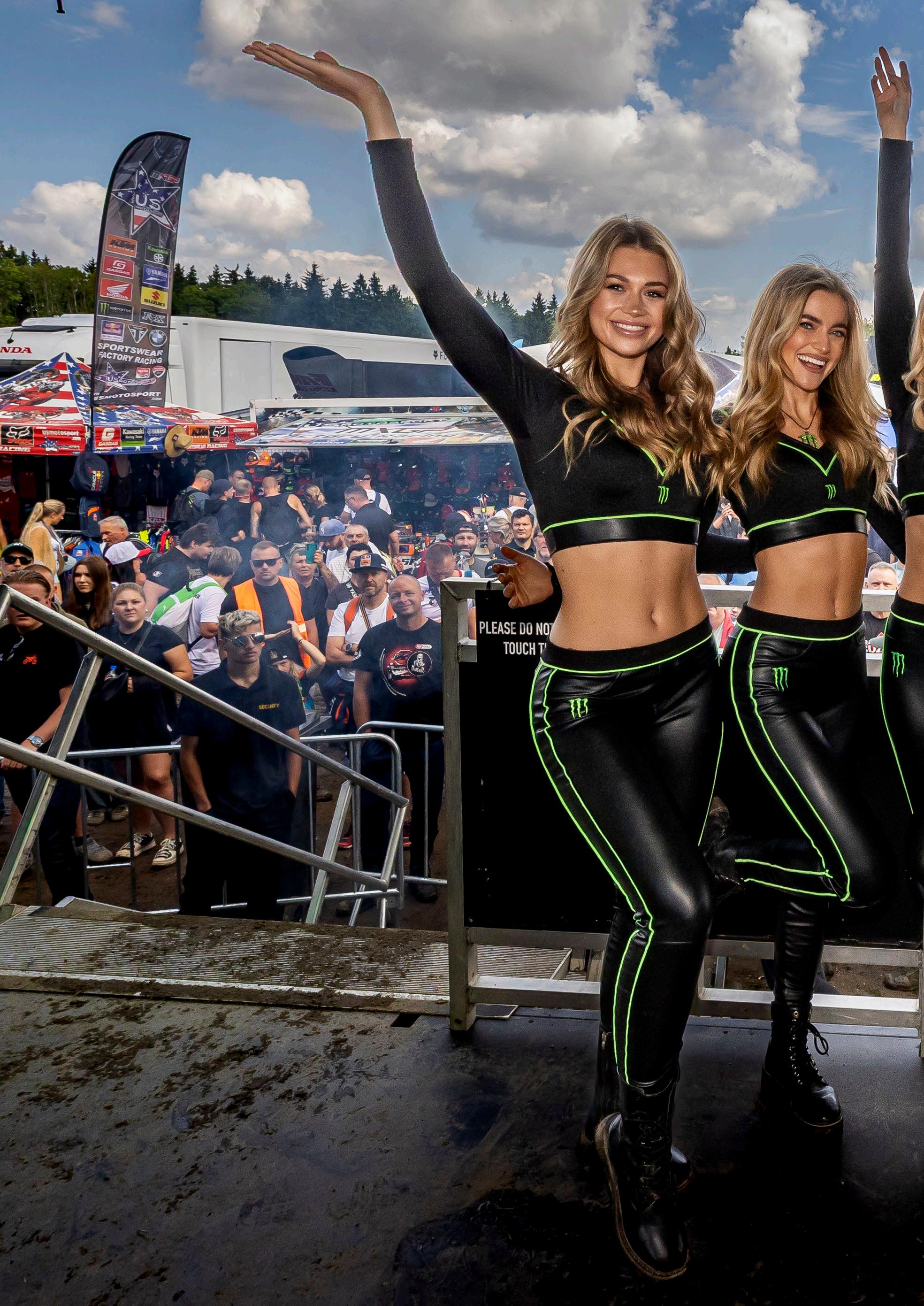
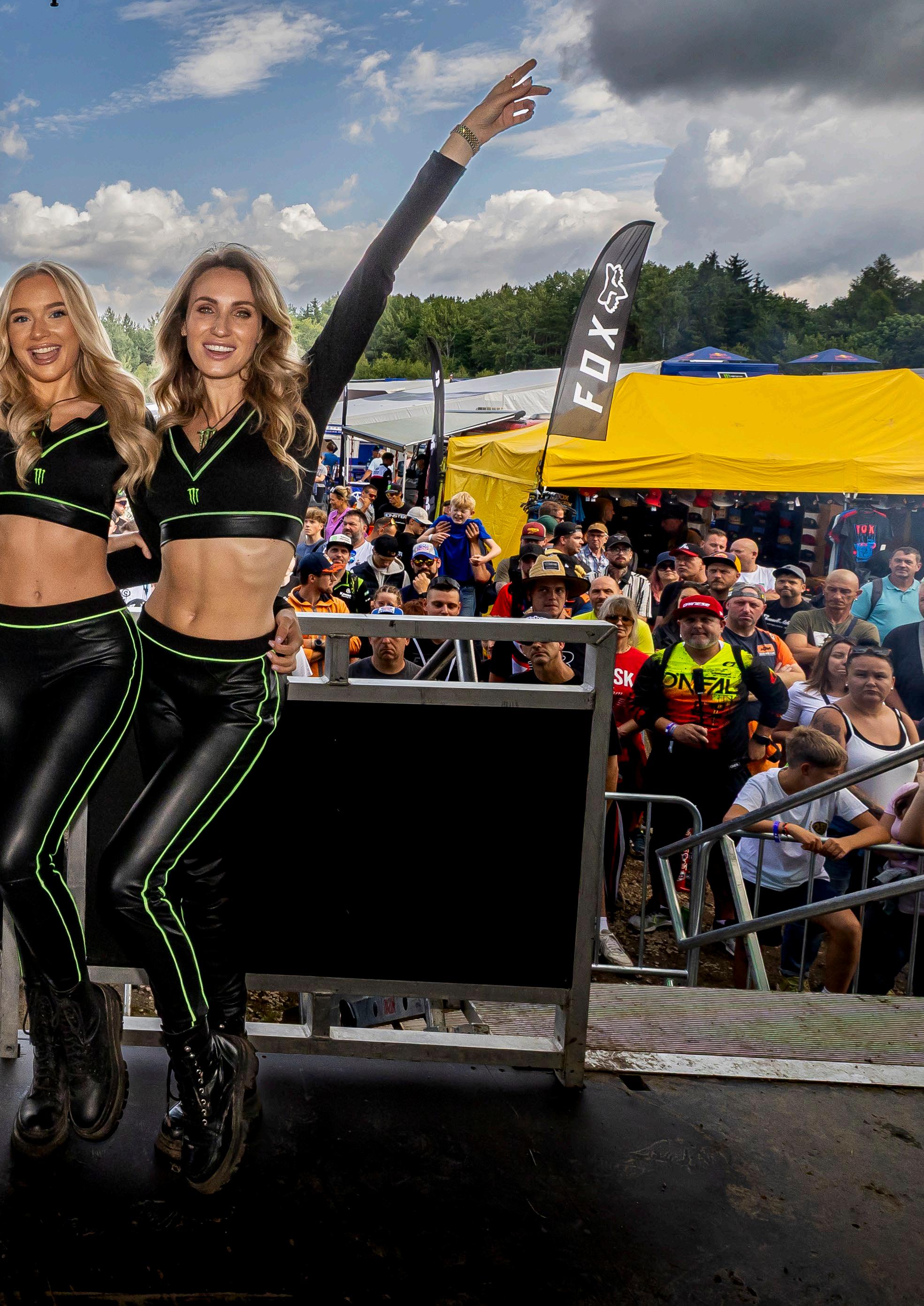





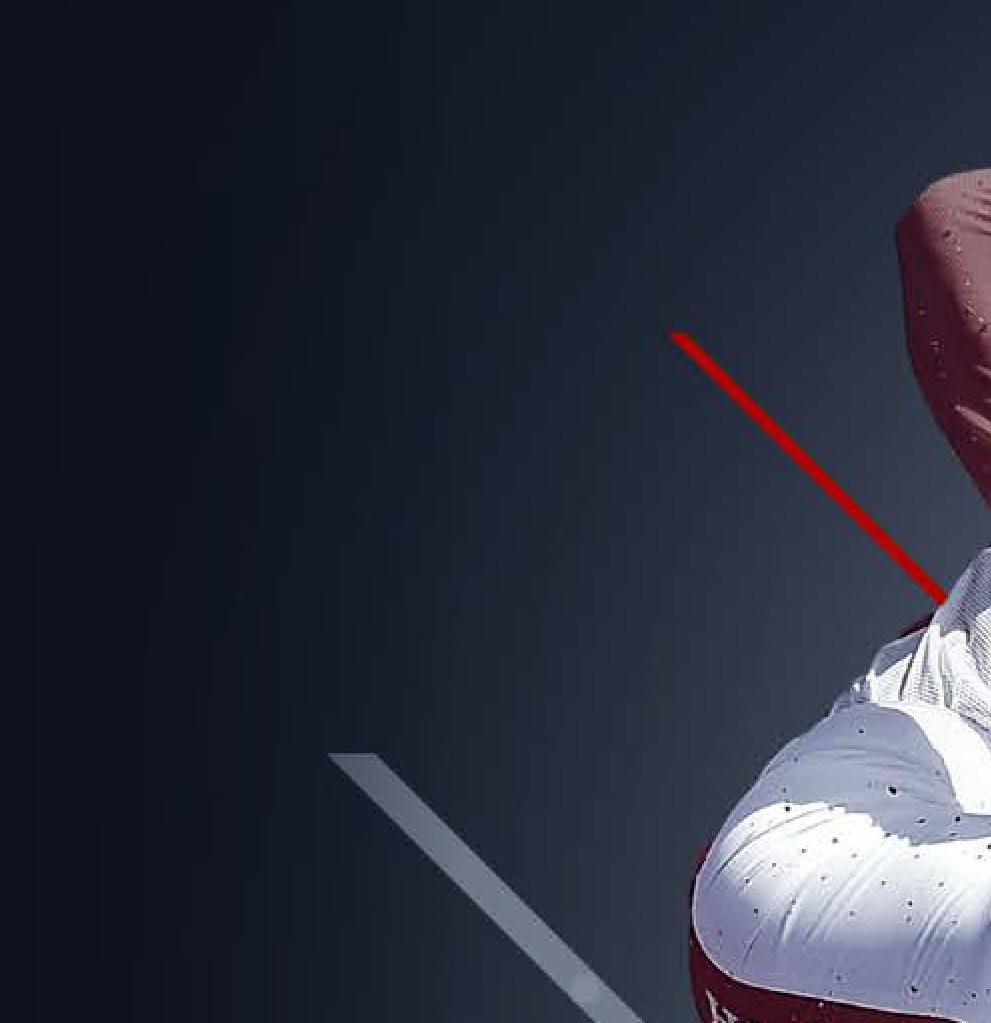
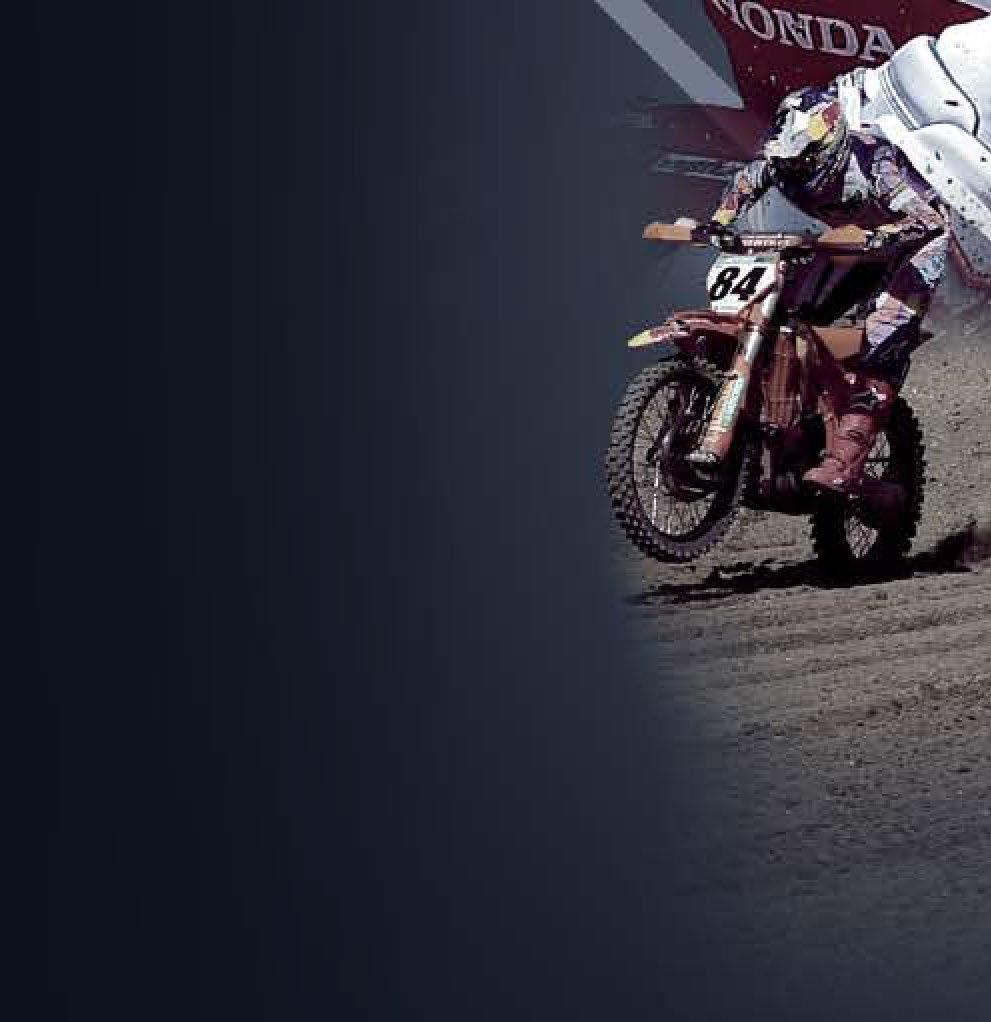


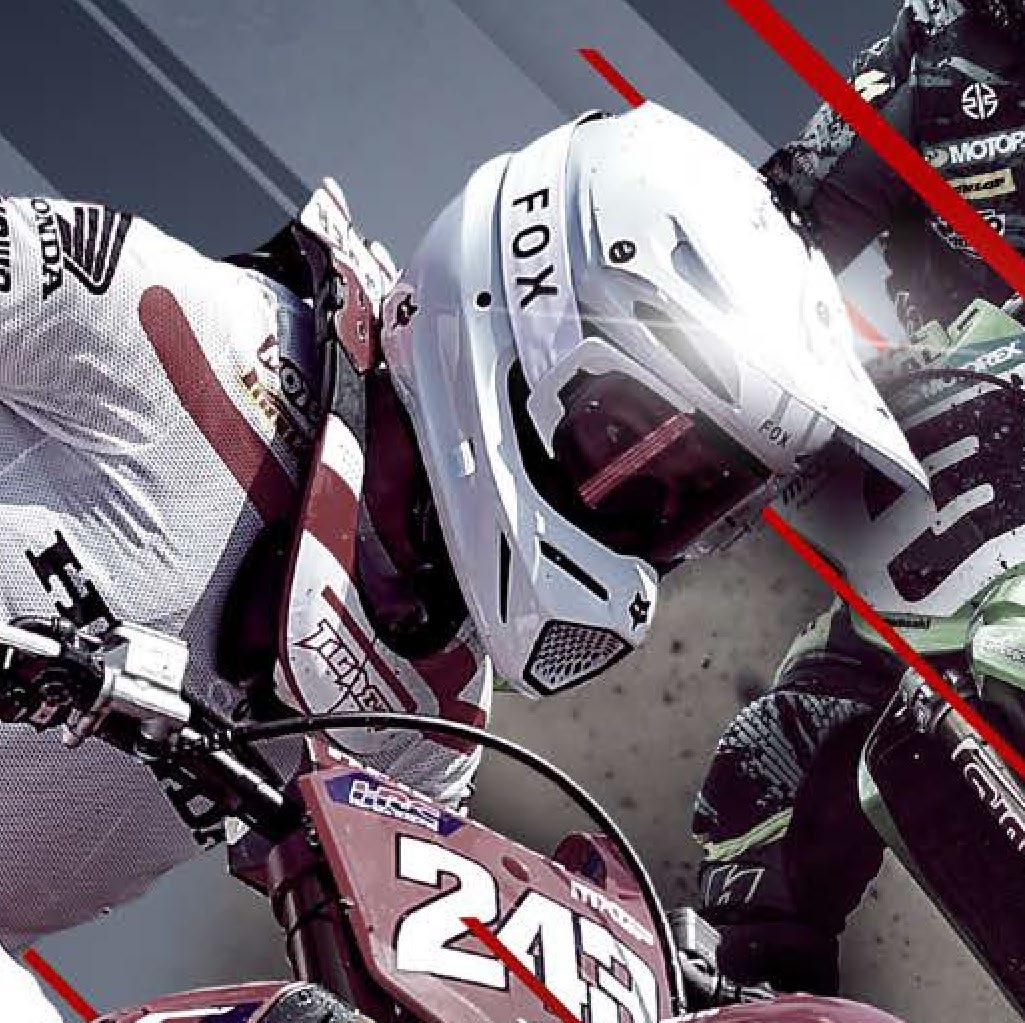


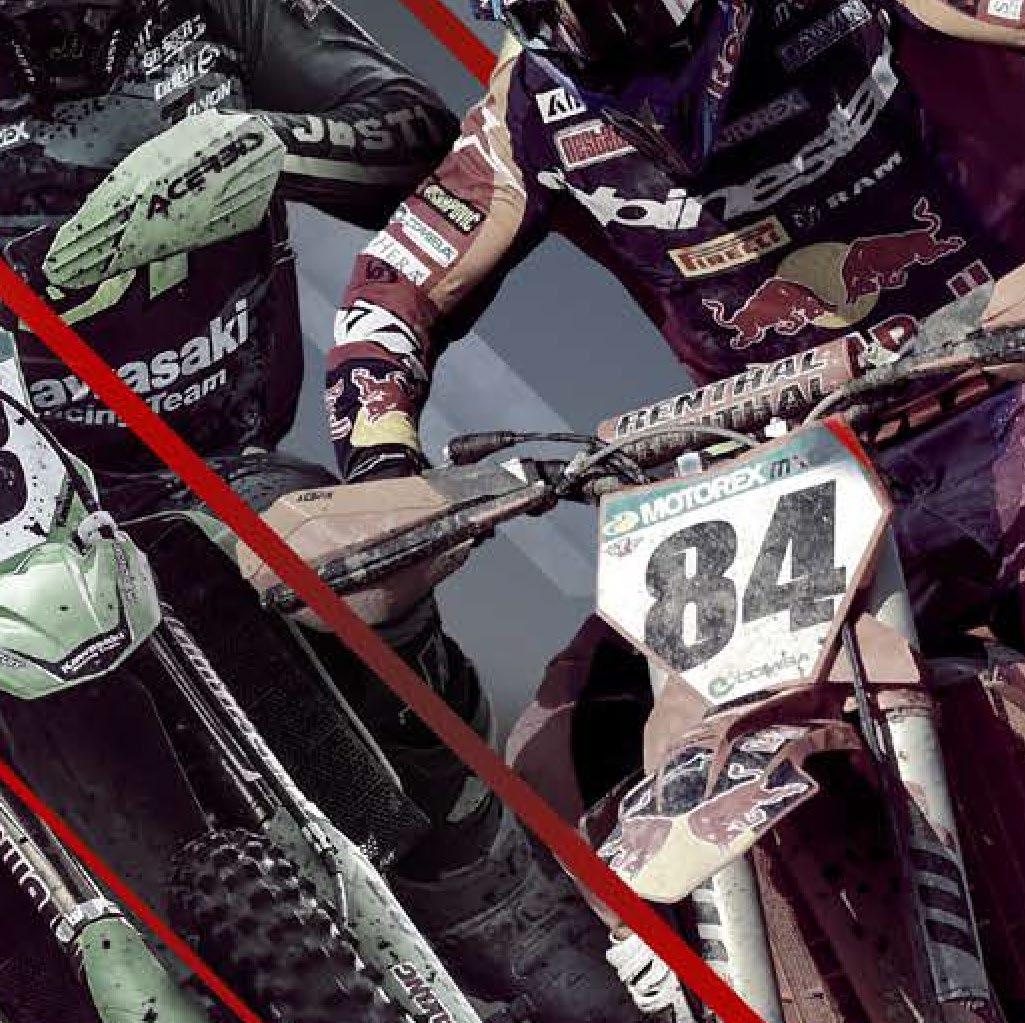
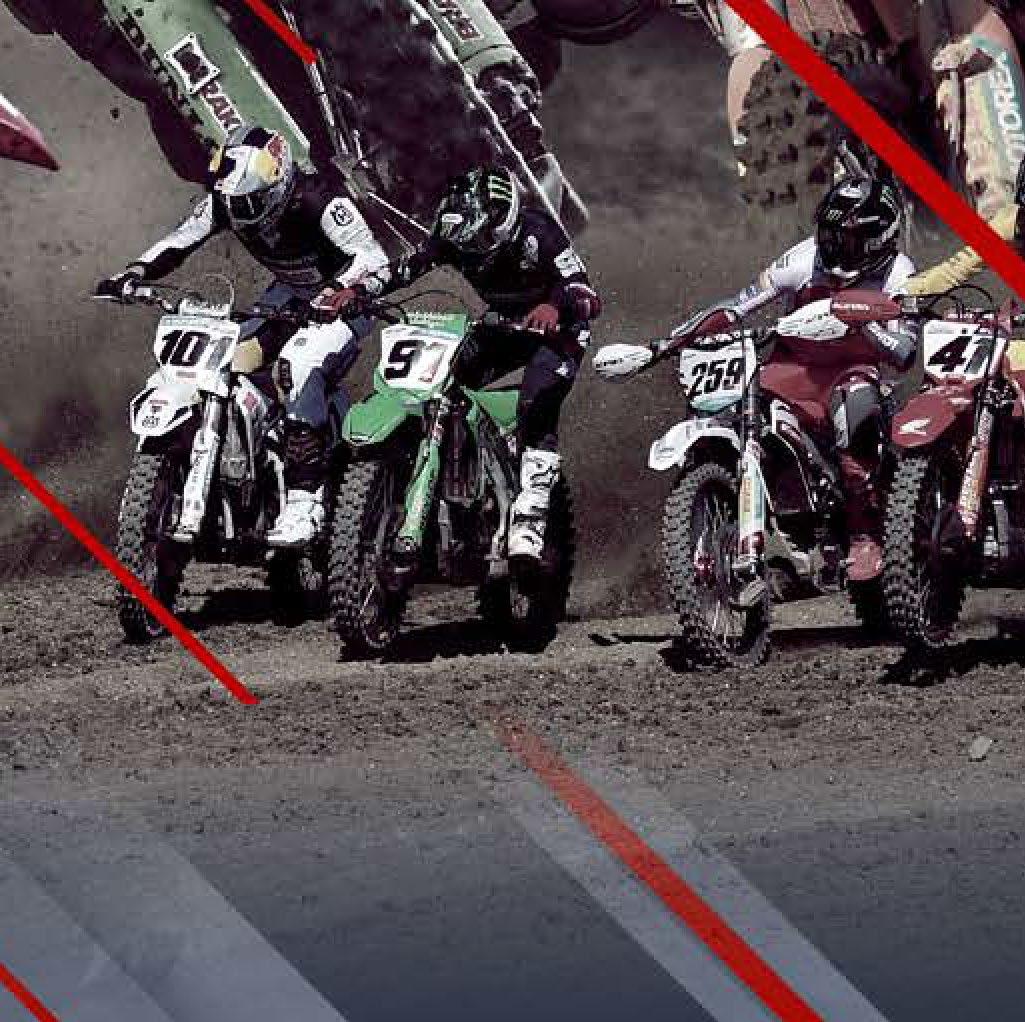


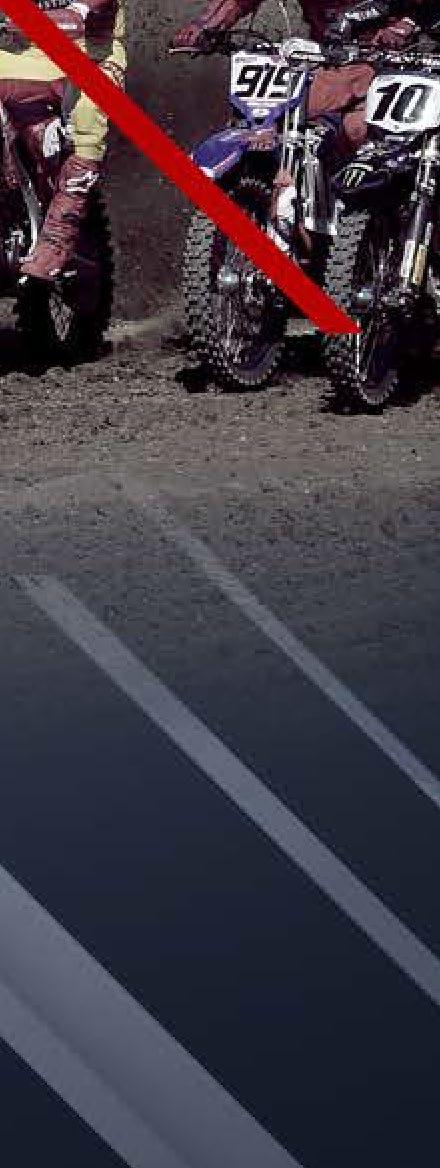
ONE OF THE HIGHLIGHTS OF THE YOUTH MOTOCROSS SEASON IS THE FIM JUNIOR MOTOCROSS WORLD CHAMPIONSHIP AND THIS YEAR, THE EVENT WAS HELD IN NORTH-WESTERN FRANCE AND WAS BROADCAST FOR THE FIRST TIME LIVE. BUT WHAT IS THIS RACE EXACTLY, AND WHAT IS IT ALL ABOUT? AND WHAT DOES IT MEAN TO EVERYONE WHO TAKES PART? TO HELP YOU GAIN AN INSIGHT, HERE’S ALL YOU NEED TO KNOW.
You’ve all heard of the Monster Energy FIM Motocross of Nations, right? Of course you have! It’s the biggest motocross race on the planet. Well, the FIM Junior Motocross World Championship is a similar event, for youth racers, but where it differs from the MXoN, is that the race also serves as a one-weekend, winner-takes-all individual World
Championship. In a nutshell, there are three categories: 65cc, 85cc and 125cc.
The 65cc class is classified as a World Cup whereas the other two categories are given World Championship status, and this year the event was held about thirty minutes-drive from the MXGP circuit of Ernée, at a track called Romagné. First impressions of the track were that this was a perfect venue for the stars of tomorrow to go racing; it was also typically French, in that the circuit was built in and around a steepsided valley where spectators could see pretty much the entire circuit.
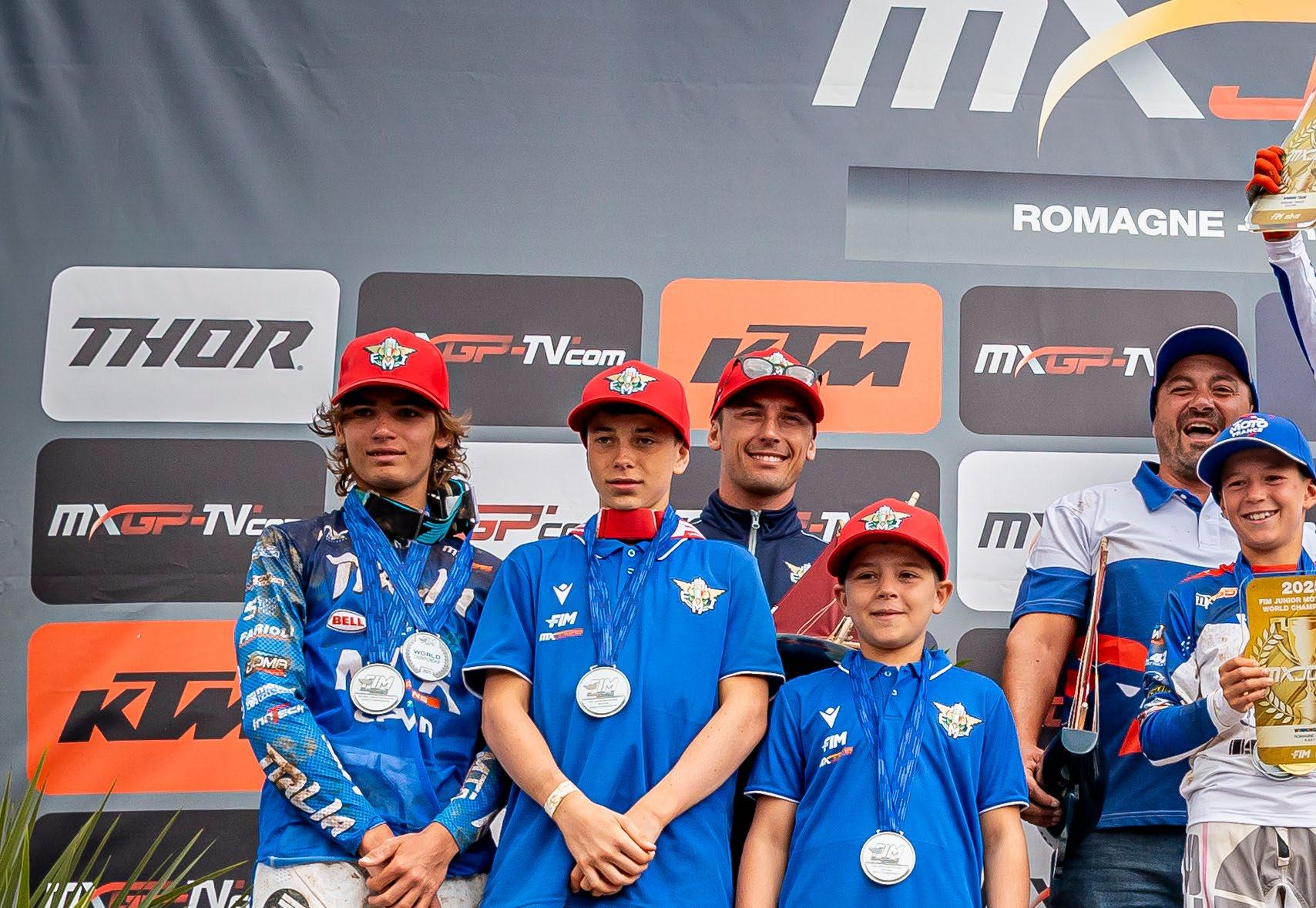
The first ever Junior World Championship was held on August 29/30th 1999 at Gaildorf and was run as a support race to the German 250cc Grand Prix, and in many ways was a teaser of things to come. On that occasion the ‘event’ only featured the 85cc class with the winner being a rider who would go on to win multiple GP’s and finish 2nd overall in the MX1 World Championship on two occasions in 2006 and 2007. He also finished 3rd in the 2014 MXGP season. That rider was Kevin Strijbos. Tyla Rattray, a future MX2 World Champion, placed 3rd overall at that same event. However, there was also a rider competing that day, who would eventually be known as ‘the fastest man on the planet’ and that rider was none other than James Stewart. ‘Stew’ finished 8th overall. The American returned the following year when the race was held in Switzerland at Roggenburg, and after placing 2nd in the first race, a no-score in race two meant he placed 6th overall.
In 2001, the FIM decided to give the event its own platform as opposed to piggy-backing the GP series, and for the first time, the 85cc class was joined by the 125cc category. The inaugural dualclass event took place in Spain at Talavera de la Reina where the 85cc class was won by American Suzuki rider, Broc Hepler. In the 125cc class, the
first four finishers were riders who would all go on to race the FIM Motocross World championship. Tanel Leok took the overall with a 1-2, from Jonathan Barragan, Rui Gonçalves and Davide Guarneri, and for Leok, it meant he was now a two-time Junior World Champion, having won the previous year in the 85cc class.
As for the 65cc class, the youngest category did not become part of the event until 2010, which meant all of the youth categories were now fully integrated into these championships. We could go on stating winners and events year-by-year, something which would take an eternity, so instead we will highlight some of the past winners, and you will notice that over the years, we have been graced with some of the biggest stars that our sport of motocross has ever seen, on both sides of the Atlantic.
In 2003, American Kawasaki rider Ryan Villopoto won the 85cc class in Italy and a year later, Zach Osborne made it back-to-back US victories when he won the 85cc class in Latvia. Ken Roczen and Jeffrey Herlings won the 85cc class in successive years in 2007/’08, with Eli Tomac winning the 125cc class when it was held in New Zealand in 2009. Other riders who have taken a Junior World Championship title include Jorge Prado, now a four-time world champion who was victorious
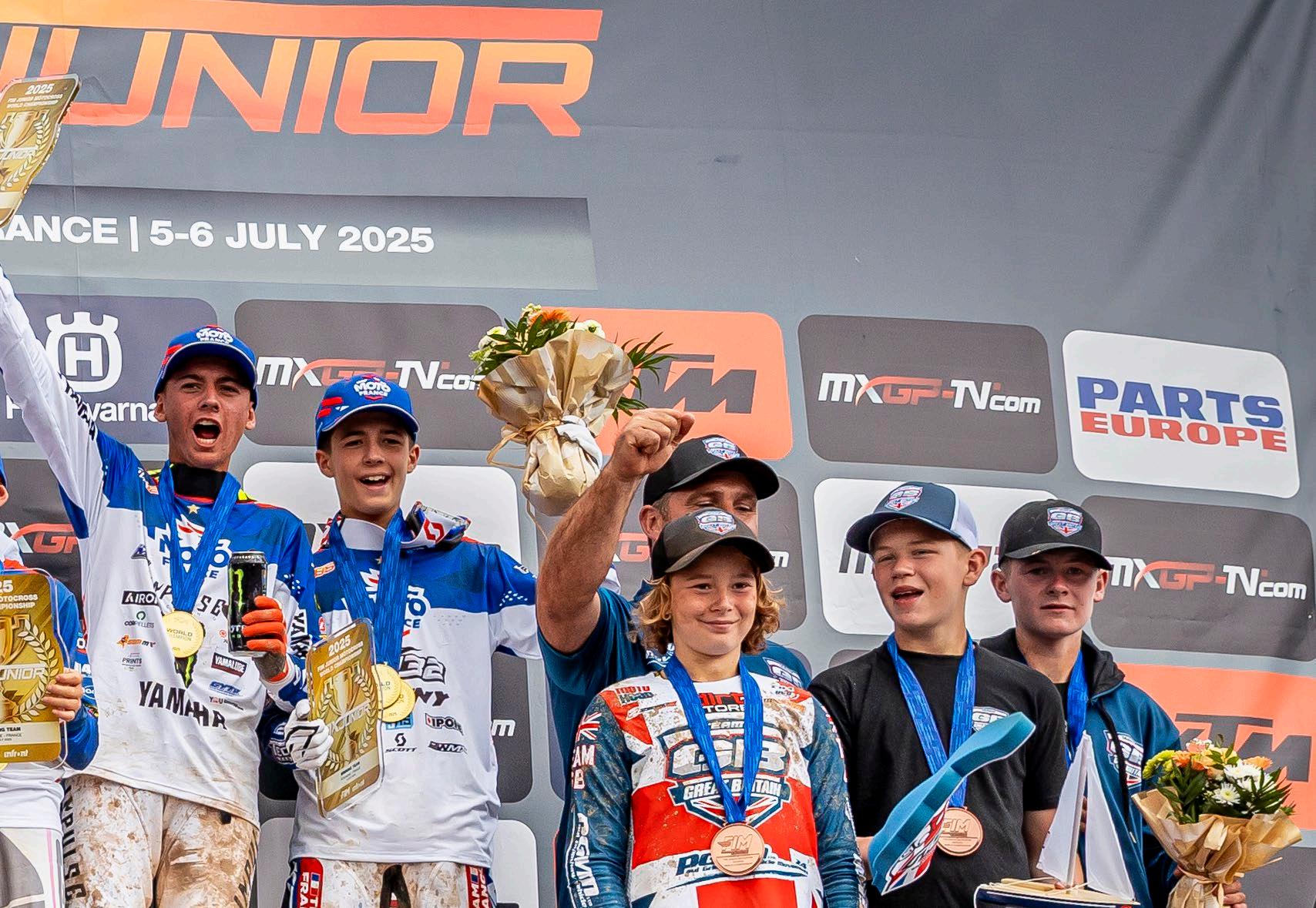
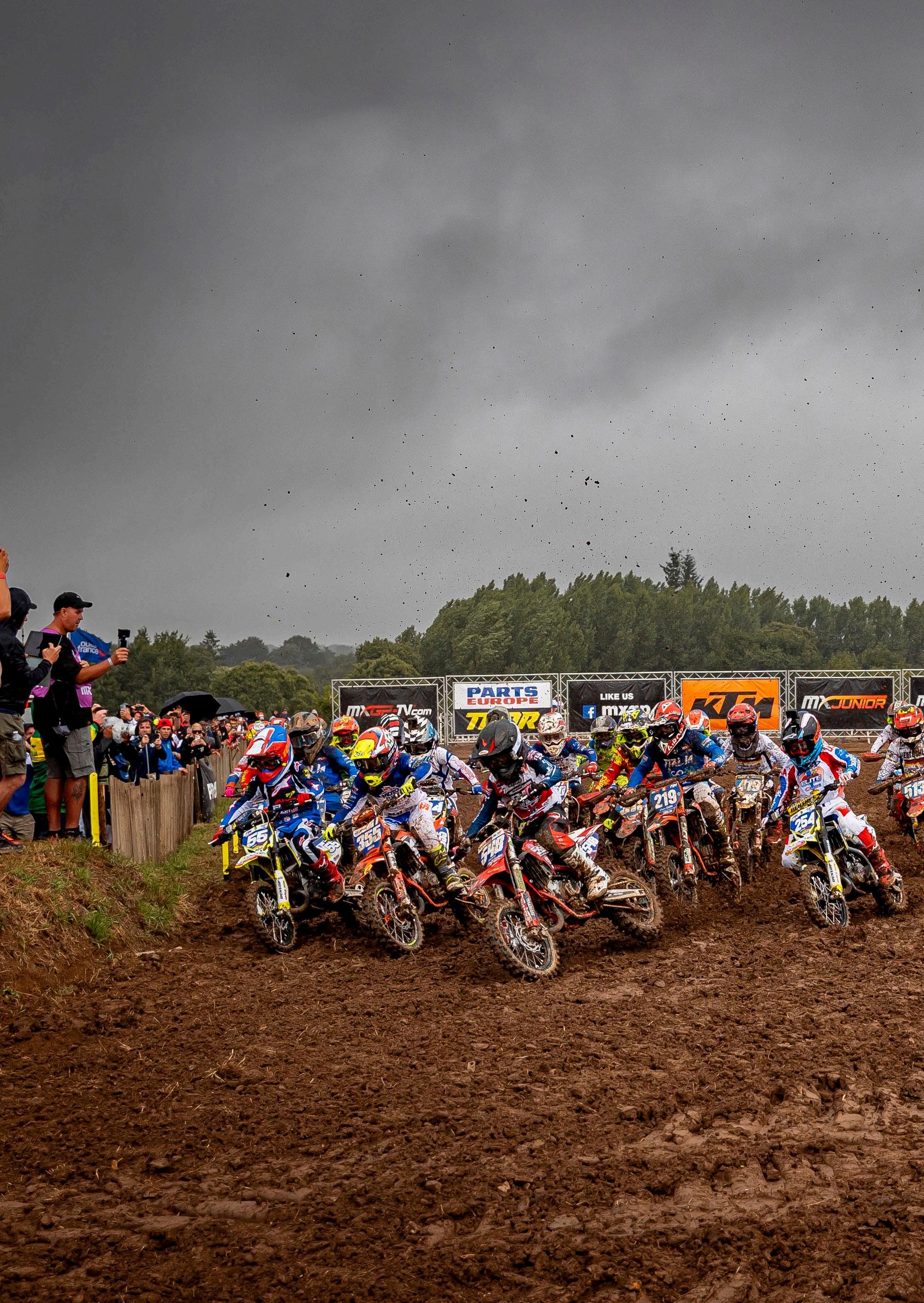
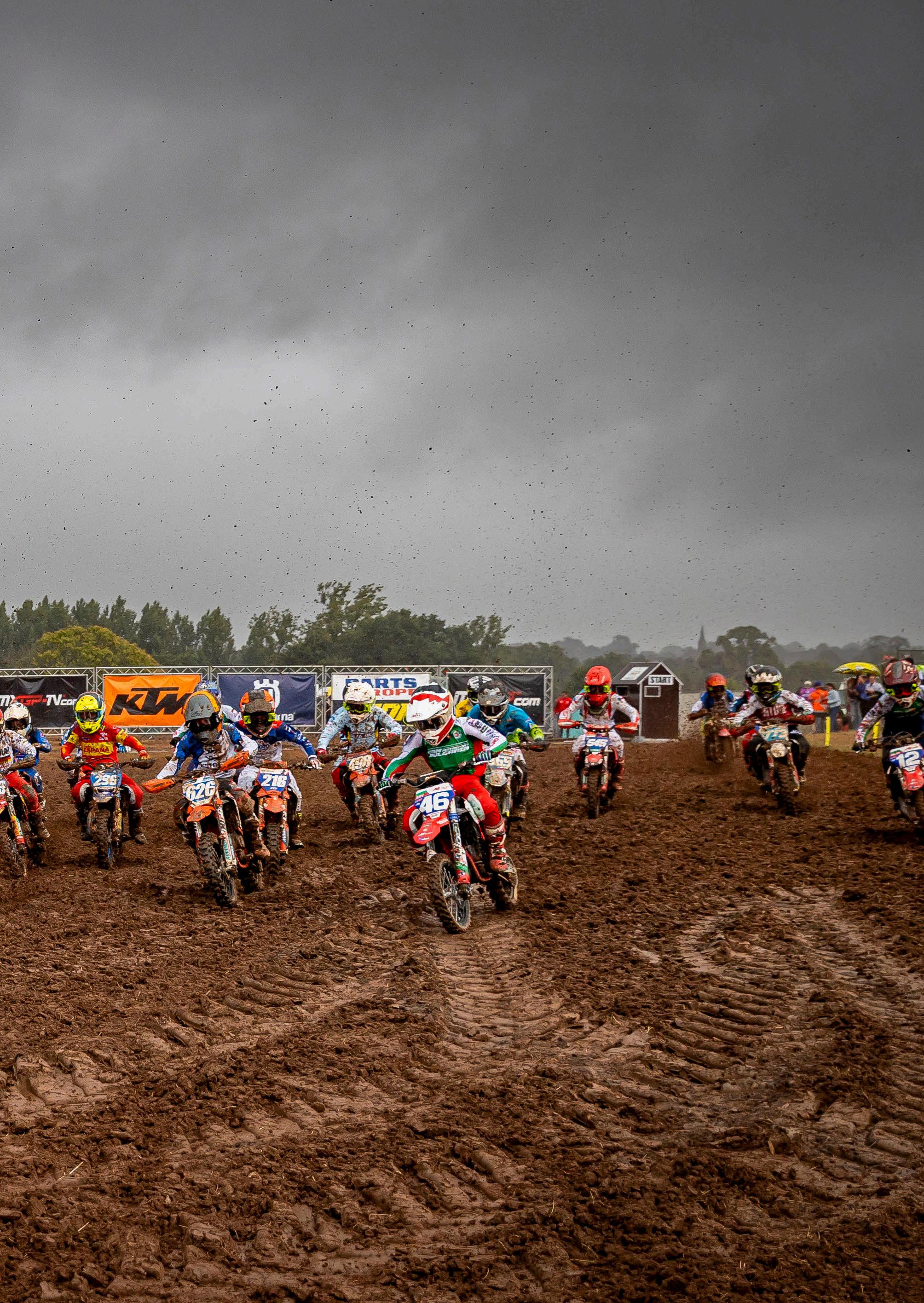
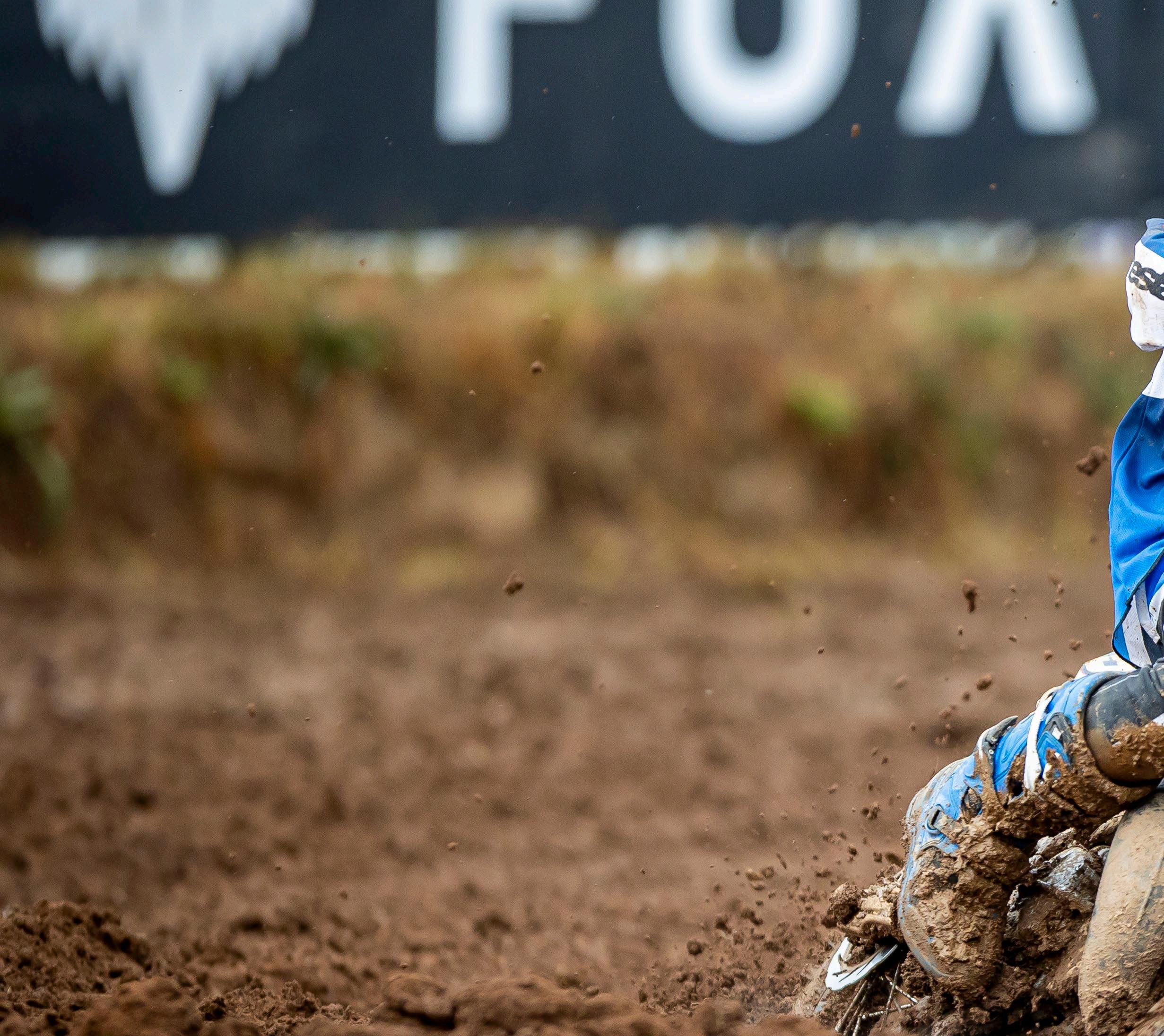
in the 65cc class in 2011, Tim Gajser (125cc) in 2012, Pauls Jonass (125cc) 2013, Maxime Renaux (125cc) 2015 and Jago Geerts (125cc) in 2016. In short, the Junior World Championship is a showcase of future talent and every one of the riders mentioned have gone on to be successful at the very top of the sport.
In recent years the Junior’s has doubled-up as a youth MXoN, so as well as the individual World Championship, there is also the matter of national pride. However, unlike the MXoN, where there are three riders per team, there is no minimum or maximum number of participants per nation. We will explain the scoring system later on in the piece.
This year saw the 26th edition of the event when you count back to the 85cc event which was run
back in 1999, and since then we have seen sixtytwo world champions crowned from nineteen different nations, across all three classes. The United States had the most wins coming into Romagné with nine riders having claimed a Junior World title. From the 65cc class there had been fourteen winners prior to 2025, with twenty-five in the 85cc class and twenty-three in the 125cc class. In Romagné, we were going to crown three more.
If you’ve never been to this event before, then it really is a must, because in many ways, the Junior World Championship is kind of a throwback to racing as we knew it when we all first started out. This year saw 240 entrants from 34 different nations, and despite the status of the event, there was a real family atmosphere about the whole thing. Just as you probably went to your local club race, or two-day national weekend race, families were parked up in their campers, kids were running
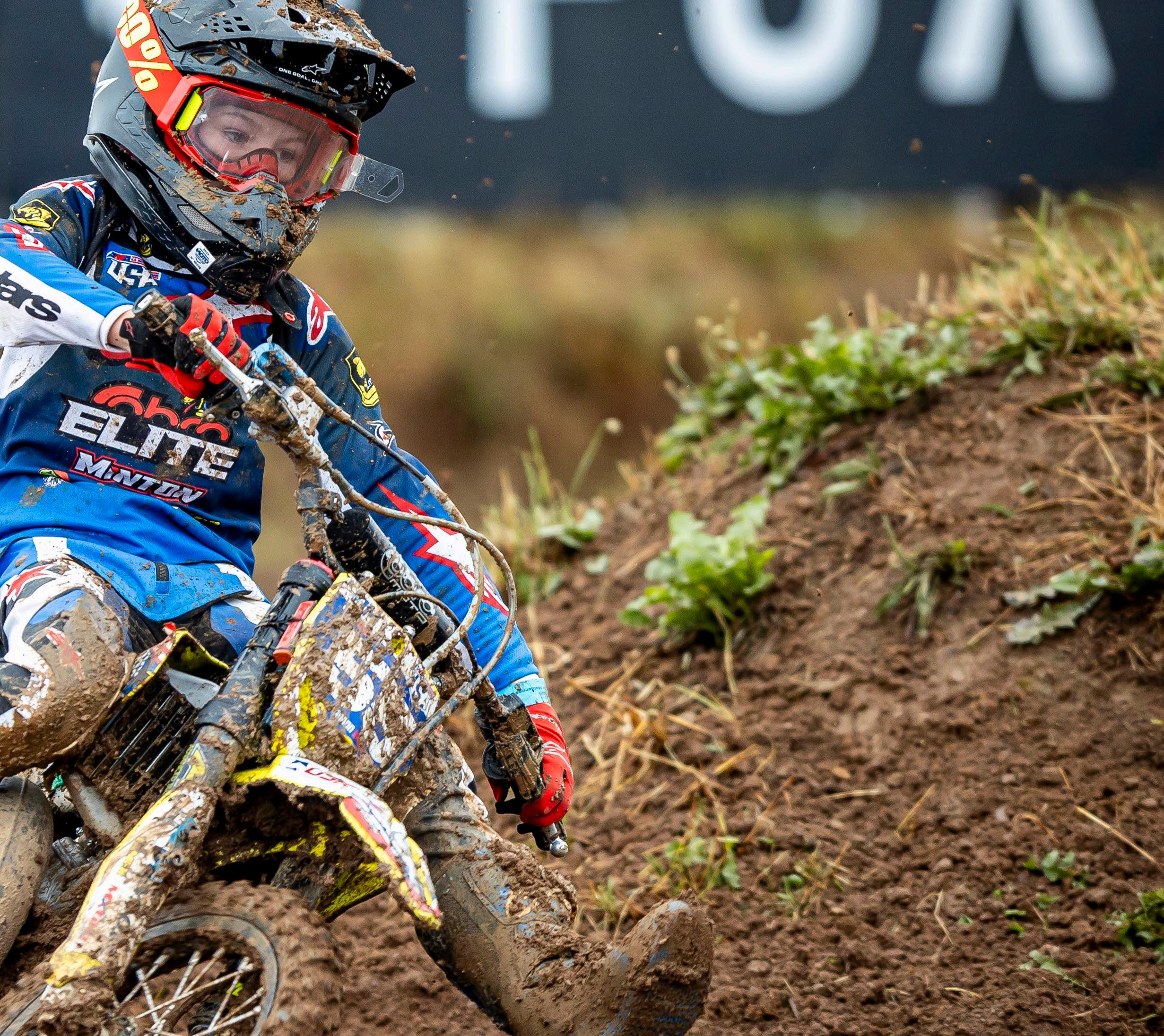
around on scooters, BMX’s, playing football and from that side it was quite nostalgic, magical even.
There is also the other side where you really get to see the federations who take this event a bit more seriously, like the French for instance. The FFM provided a central hub with their rig, huge awning and hospitality. Why? Well, basically, the FFM is possibly the biggest investor in future talent than anywhere else in the world, which is why France have been so successful at recent MXoN events, with six victories in the past ten years, with fivein-a-row from 2014-2018, and again in 2023. They also incorporate regular ride/training days where the youth integrate with the senior riders, giving them a real feel for what is to come, if they continue to do well. The contrast between those who want to take part to see how they stack up between the more established teams and federations is pretty stark.
The Juniors is not only open to the Europeanbased riders, far from it, and this year we saw riders from as far away as the USA, Australia, New Zealand, Argentina, Uganda, Thailand, Chile, South Africa, Turkey and Madagascar all taking part. The Americans in particular, look forward to this event and that is mostly down to the Team Manager Jeff Cernic, who is a massive supporter of the JWC, giving young American kids and their families the opportunity to experience a different culture to what they are used to on the other side of the world. Normally, once you’ve ridden it, you don’t tend to go back. Obviously, James Stewart was an exception having raced it twice, and on this occasion, we had a three-time visitor in the form of 85cc rider Easton Graves, which was cool to see.
The American’s were taken care of across the paddock, with KTM providing a rig for the riders who represent the Austrian brand, so too the
New Zealand rider Phoenix Van Dusschoten, who was able to park his GASGAS under the tent as well. Same for the Australian contingent, under the watchful eye of Ross Beaton, brother of Jed. For the Cobra Moto riders in the 65cc class, BUD Racing stepped up on their weekend off, providing their race rig as a logistical base for those who needed it.
Team Great Britain once again arrived with the unwavering support of the team manager, Dave Willett and his coaching staff, and over the past couple of years, there has been a real push to kickstart the British effort in order to get them and the riders noticed on the world stage. In recent years, there has been a real lack of top level European and World Championship riders consistently coming through the ranks hoping to compete at the highest level, but with Willett and his crew, the enthusiasm is there for all to see. The former racer has built up quite a hefty contact list in recent years, who step-up to the plate time and time again to support the British effort, and this year they had the privilege of the use of a rig not too dissimilar to what you see in the MXGP paddock used by Kawasaki and HRC. When you’re dealing with 13-14 riders and parents, that hospitality area and team-meeting place is the perfect unit to bring the team together, and maybe even make the riders feel appreciated and supported.
Before any of this could get underway, the presentation of the teams is something which gets everybody in the mood. On Friday, the podium was the backdrop to introduce every rider and team to the public, and was hosted by MXGP’s own Lisa Leyland, along with Radka Mazakova, who is a long-time presenter of the Juniors over the years. The weather was great, the skies blue and cloudless with temperatures in the early thirties. A great atmosphere, the air filled with enthusiasm, and of course the biggest cheer was saved for the French. With all the pleasantries out of the way, it was time to go to work.
Saturday was Qualifying day, and with dry conditions, the track was absolutely perfect. Unlike the MXoN where gate pick is done by ballot, the Juniors qualify via a Timed Practice session. The top eighteen riders from each class go directly to the main races, leaving everyone below the cutoff to face the nervy prospect of a Last Chance Qualifying Race, with the first four riders going through. The riders in 3rd and 4th though are reserves, in case someone is injured or arrives at the waiting zone too late for the race. By the end of Saturday, we knew who the favourites were and what to expect. What we didn’t expect though, was for the weather to turn out the way it did, and that was a real shame.
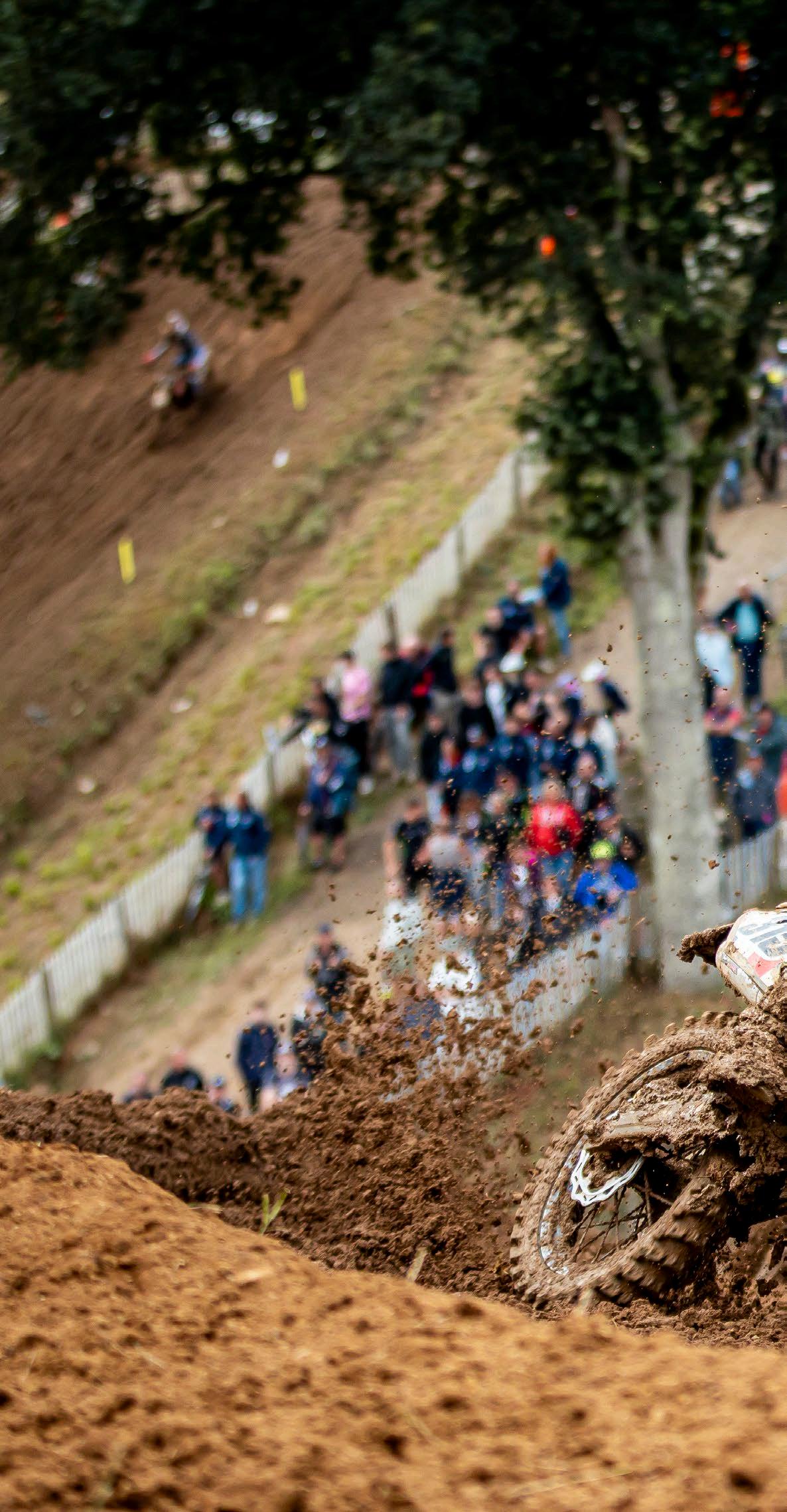
When all was said and done, Team France came away with the Nations win, with the lowest score of 4 points:
The 65cc riders only managed to run one race, due to the weather conditions, and even that first race was red flagged with a lap to go. Anyway, Mathys AGULLO was the highest French finisher in 2nd and so France was awarded 2 points for his efforts. In the 85cc class, Rafael MENNILLO took the overall win (1 point) and Mano Faure took the win (1 point) in the 125cc championship, leaving France with the low total of 4 points.
In 2024, Mathys Agullo finished 13th in the EMX65 Championship at Loket and 19th at the 65cc Junior World Cup, but his improvements have been massive since then. In the regional qualifiers for the
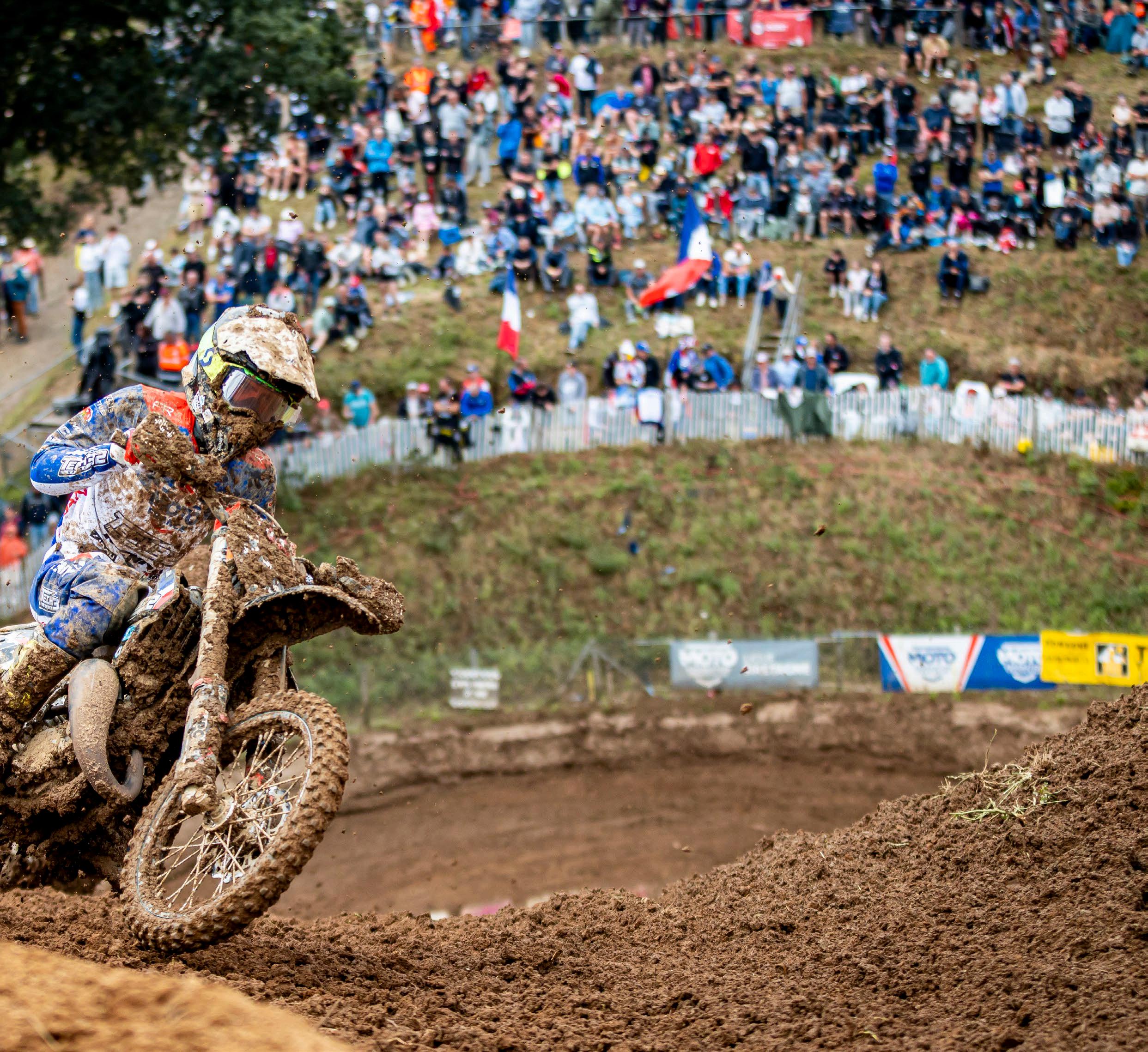
EMX Championship, Agullo went 2-2 behind fellow French kid Arthur Annelot, who won both races, so both riders were already on our radar. Agullo’s 2nd in the first race saw him awarded with the silver medal for 2nd overall, and a few weeks later Agullo was crowned EMX65 Champion in Loket with a double race victory.
The first 85cc race was a real dust up between two French riders; Enzo Herzogenrath placed 2nd in Group A in Timed Practice as Rafael Mennillo topped Group B, but the favourite ‘realistically’ was Lucas Leok. When the Estonian fell to 8th in Race 1, the battle for supremacy was between the two French riders, and despite the lead changing several times throughout the 20 min + 2 Lap race, it
was eventually Herzogenrath who took the win from Mennillo by 1.7 seconds.
When the race one winner went off-track on the opening lap at the start of race two, his title chances evaporated in the blink of an eye, and with Mennillo in 2nd, he knew it would be enough to be crowned 85cc World Champion. Even more impressive was the fact that three weeks earlier, he had broken his collarbone, and one week before the JWC, came back to win the French Elite title. All in all, a good couple of weeks for the ‘315’. Prior to this weekend, there had only ever been three French world champions – Jordi TIXIER (2010), Maxime RENAUX (2015) and Mathis VALIN (2023) – and so Mennillo adds his name to that list as the first 85cc French World Champion.
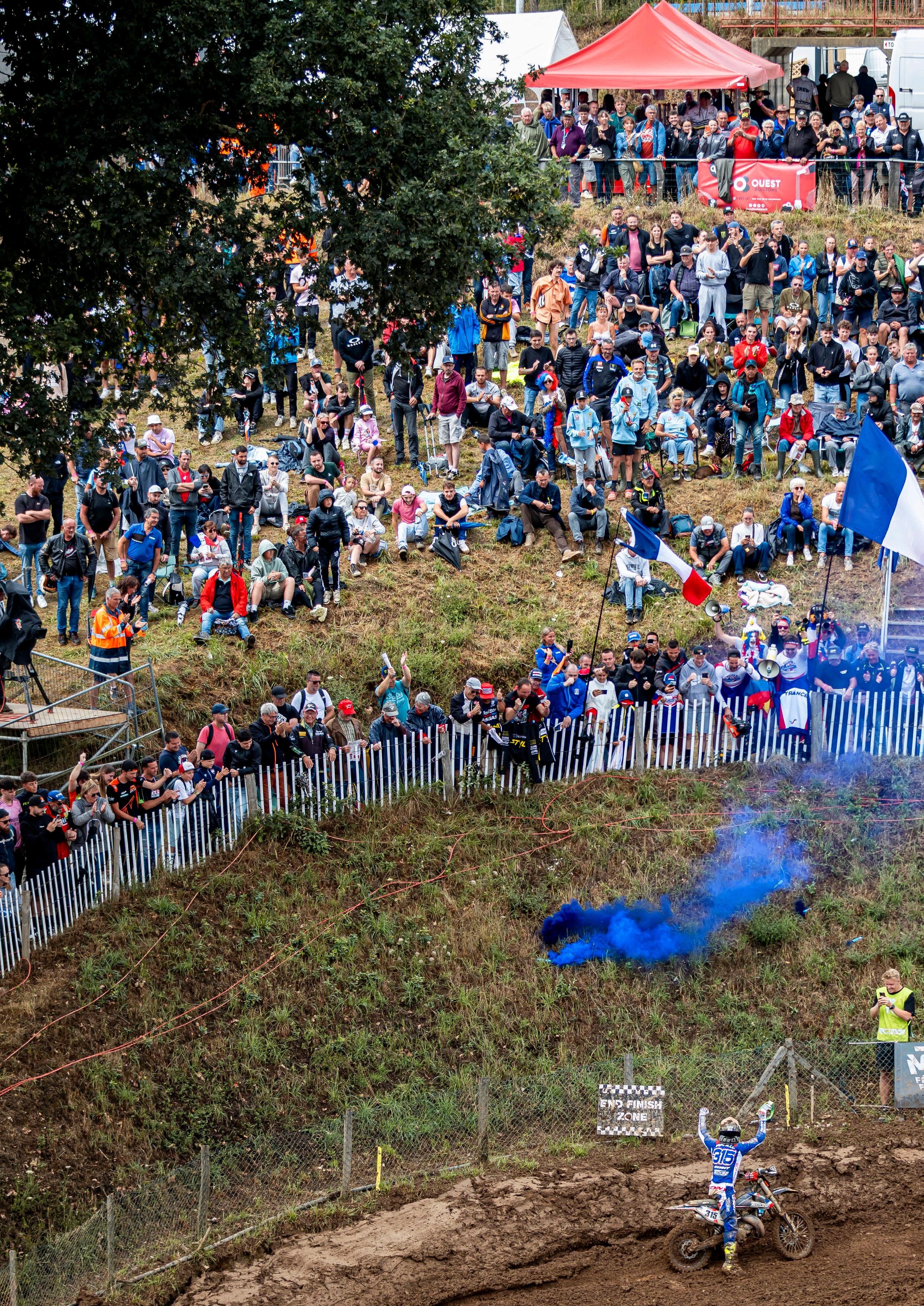
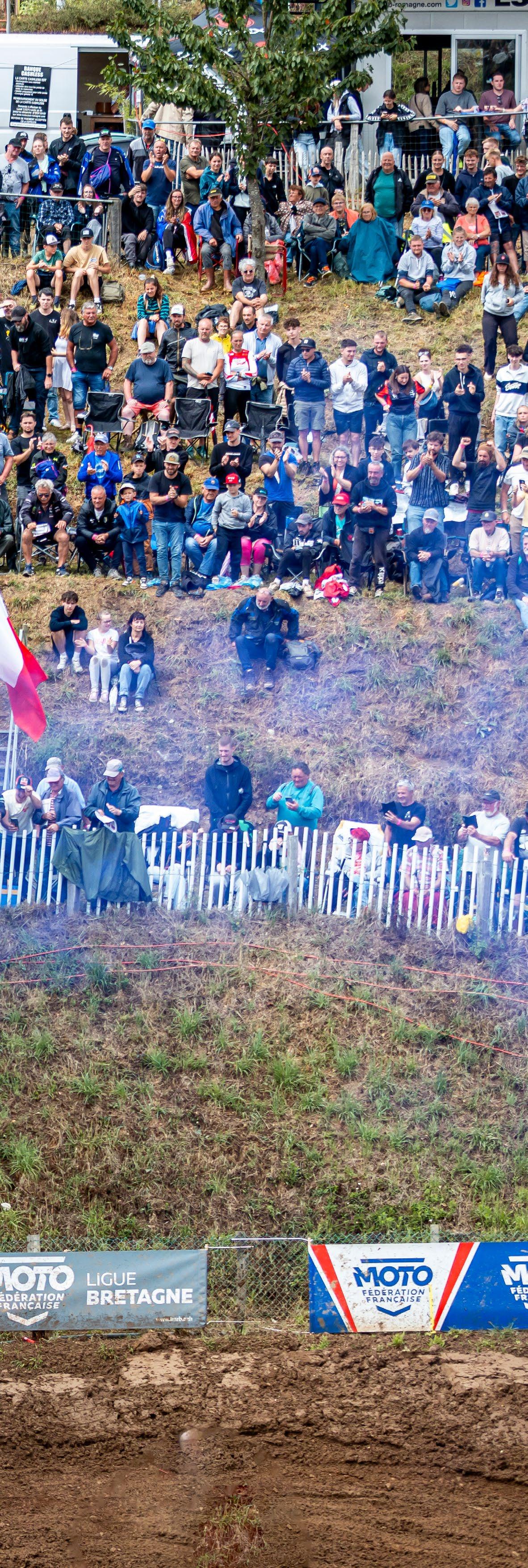
Mano Faure is a rider we are used to seeing on a regular basis in the EMX125 Championship, presented by FMF Racing, so in many ways were not too surprised to see him up there fighting for the win. Especially when he had arrived at the Juniors with six overall victories, with three of those in a row. Faure won race one and was leading the second race before he fell, eventually coming home in 3rd, and his 1-3 scores were enough to earn him the 125cc Junior World Championship.
Prior to this weekend, Faure’s history with this event was pretty vanilla, in that in 2021 he finished 10th in the 85cc class with 11-10 scores. In 2022 he was 19th overall after only finishing 11th in race two, and as a first-timer in the 125cc class in 2023 he placed 22nd after picking up 0-16 scores
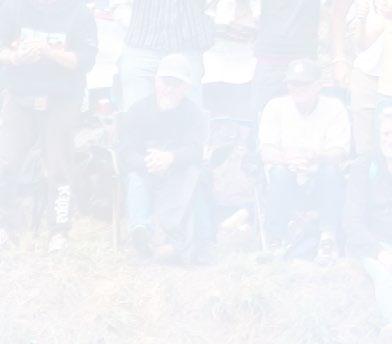
in Romania. By the time the 2024 edition came around in Holland, Faure was already side lined with a broken femur, so this one, at home was going to be an important race for him. Add to that, the MJC Yamaha team he races for in EMX125 is situated about 30 minutes up the road. No pressure there then! By winning the 125cc title, he became the fourth French rider to win in the 125cc class, and the fifth after seeing Rafael Mennillo take the fourth win for the home nation. Faure is also the 65th world champion to be crowned from these championships.
Rounding out the podium was Italy in 2nd and Great Britain with 3rd, for the second year running. In the 65cc class the star performer for Italy was Daniel CORDA who was 6th overall with Francesco ASSINI taking 7th in the 85cc class as Filippo MANTOVANI claimed 2nd in the 125’s, a total of 15 points. As for Great Britain, 4th overall in the 65cc class for Cohen JAGIELSKI, with Harley MARCZAK picking up 10th overall in the 85’s with Charlie RICHMOND 8th overall in the 125’s a total of 22 points. The USA (34) and Latvia (46) rounded out the top five overall positions.
For the USA the long ride home was made slightly sweeter by the fact that in the 65cc class they had two riders finish on the podium. Kannon Zabojnik won the only race, to become the 65cc Junior World Cup winner thus securing the gold medal for the USA. Not only was it America’s third gold in the class in the history of the event, since 2010, it was the first since Aiden TIJERO’s victory at Jinin, Czech Republic in 2013. It was also the first for Cobra
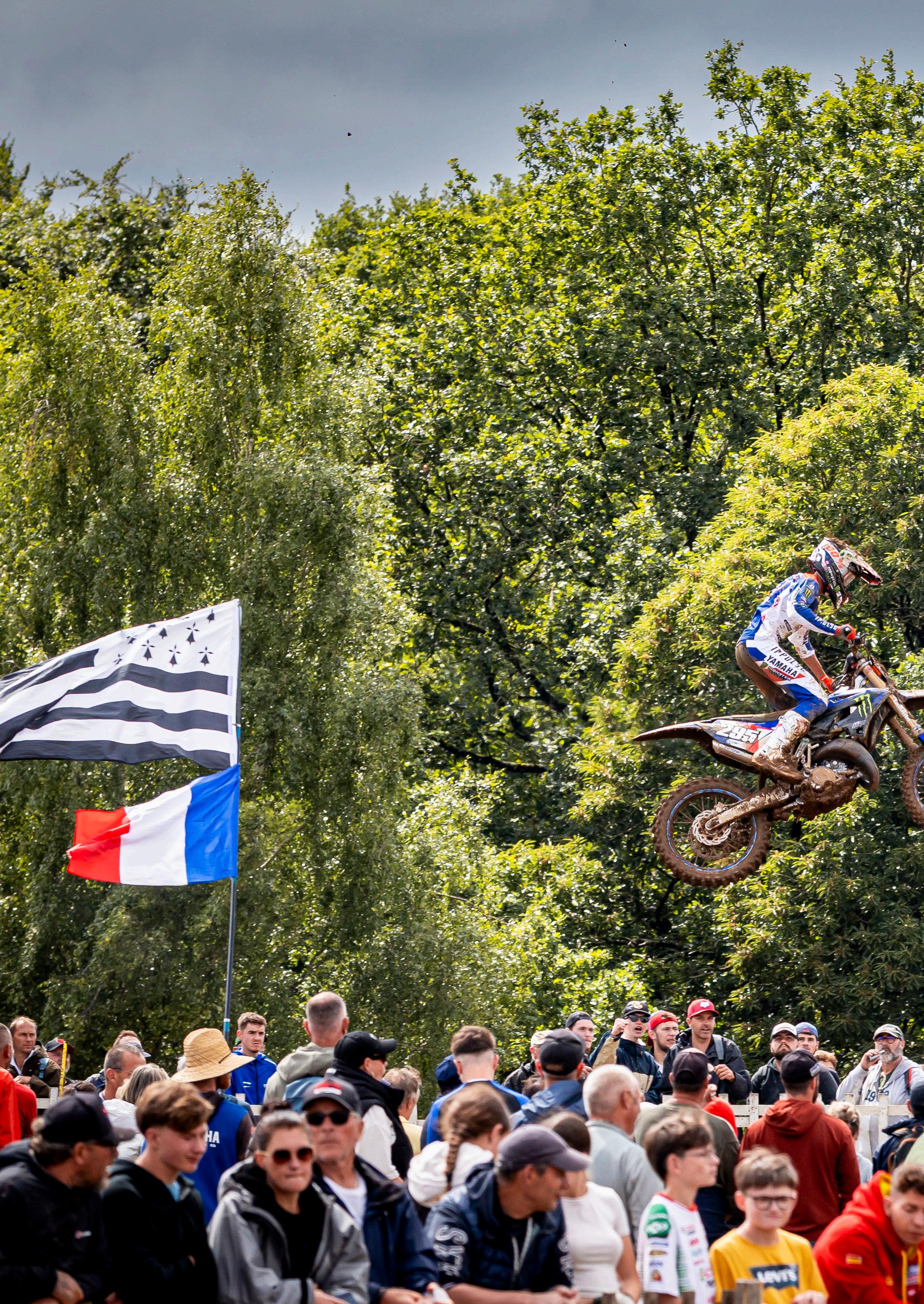
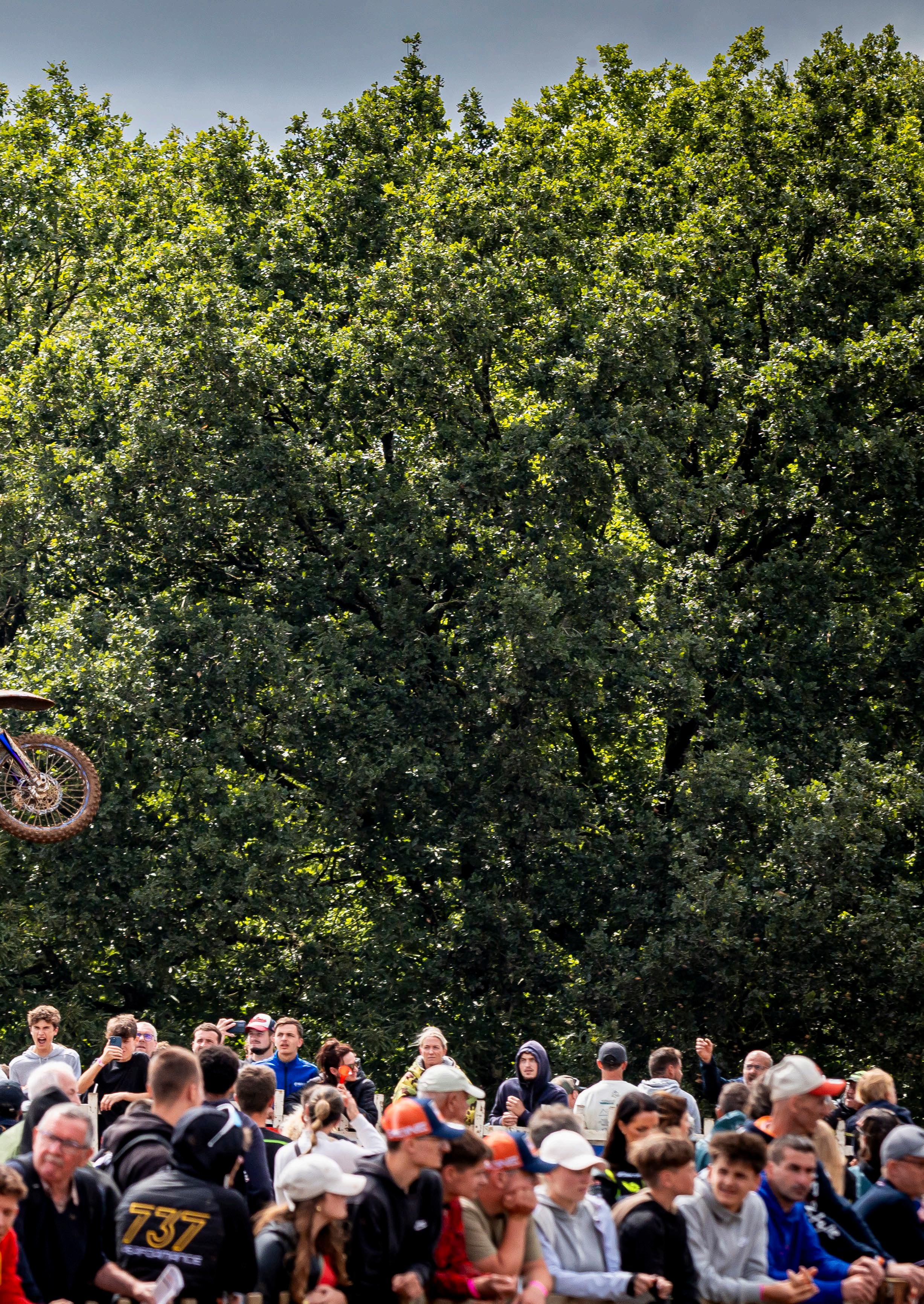
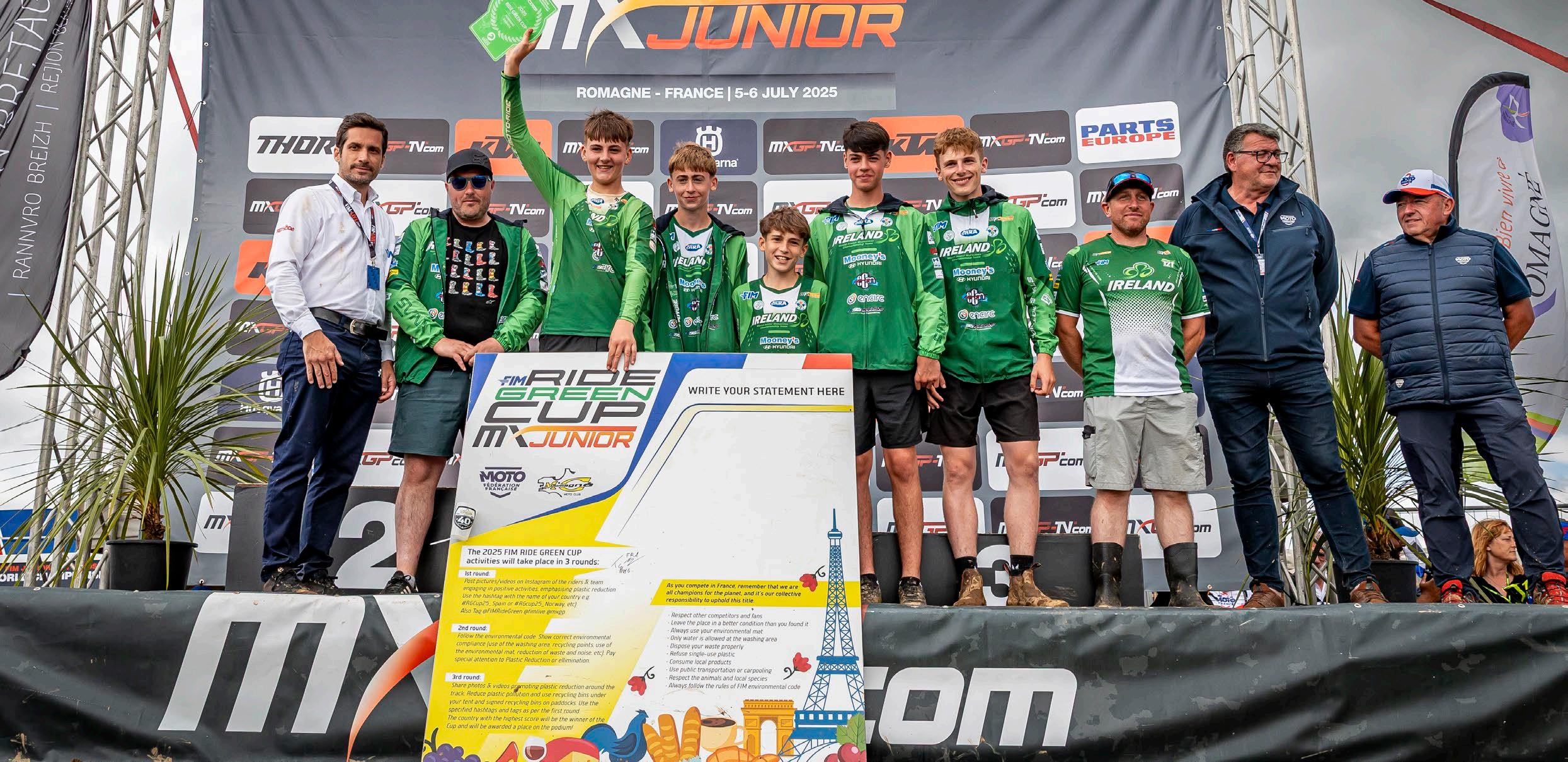
MOTO, ending Austria’s dominance in the class where KTM have ten wins and Husqvarna have four. Zabojnik became the fifteenth 65cc Junior winner and the tenth American to win a Junior World title. Joining him on the podium was fellow Cobra MOTO racer, Levi GEIS, who took 3rd overall.
Just like in any MXGP weekend, the Junior World Championship awards FOX Holeshots to those lucky enough to cross the stripe first. As there was only one 65cc race due to the weather conditions, the FOX Holeshot black plate was awarded to eventual 65cc World Cup winner, Kannon ZABOJNIK. The 85cc class saw Latvia’s Martins CIRULIS (Husqvarna) in Race 1 and Lucas LEOK (KTM) of Estonia in Race 2 collect the FOX Holeshot awards, whilst in the 125cc class, both black plates went to Mano FAURE on his way to winning the 125cc World Championship title.
For the past few years, the FIM has used its platform to try and educate the youth of today to be more proactive when it comes to looking after the environment, and that has resulted in creating the Ride Green Cup. One of the Ride Green representatives on hand in France to help deliver the message was Nikos PSIMMENOS, who explained in more detail what the initiative is all about:
‘The Ride Green Cup is a fun way to show your commitment about environmental protection. It’s not only about racing, we have young people around us, 250 riders from all over the world, so we want
to educate them and bring them the message that environment matters and sustainability is something that we should support, if we want to be future champions, we should respect our planet first.’
‘We have the young riders here, we have the pioneers of the sport, so we want to educate them to bring the message that everything that we do counts as an action, so all together, bringing all the efforts together is a very significant part of the FIM and this is our future goal, to have everyone around sustainability, also the promoters, the riders, the teams; the parents even should be part of this initiative.’
‘Inside the paddock we have a board, that all teams should sign, we invite all riders to bring all the team members to sign it, we have all the dedicated information on it, they should also post pictures on Instagram, on Social Media, and the best thing wins. We are evaluating all the posts, we are evaluating also what they do under their tents (to see) if they support and respect the environmental code, so all this together are evaluated from a Jury and we have a special plate so the team can be on the podium as a winner, and this is the idea.’
As a result of how their team behaved and operated over the course of the weekend, the Ride Green Cup was awarded to Team Ireland, who were deemed to be the most environmentally friendly in the paddock, and even if they did not qualify for the main races, their impact went far beyond the race itself, and as a result, the team was awarded with a green ‘Ride Green’ plate for their special efforts.
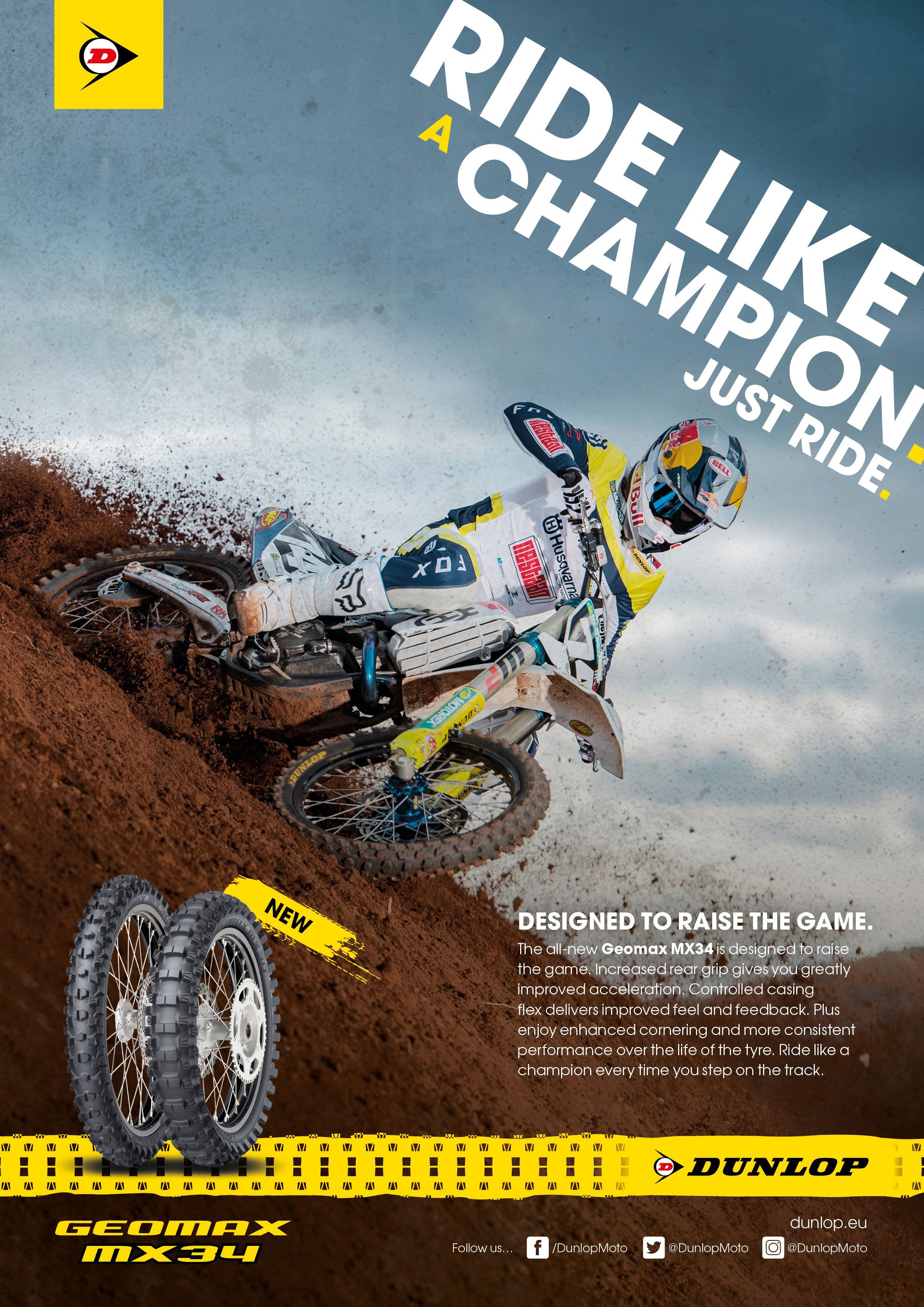
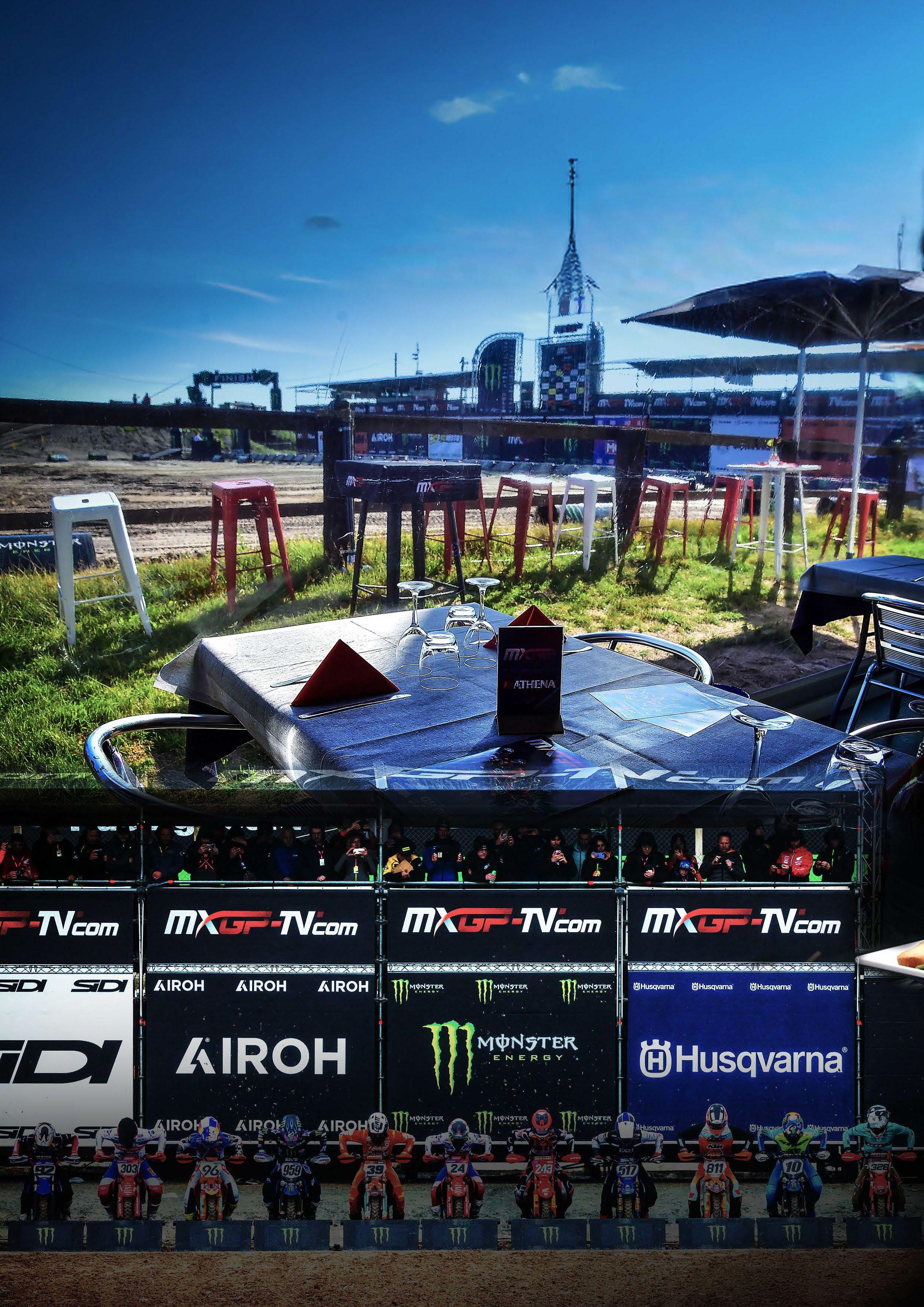




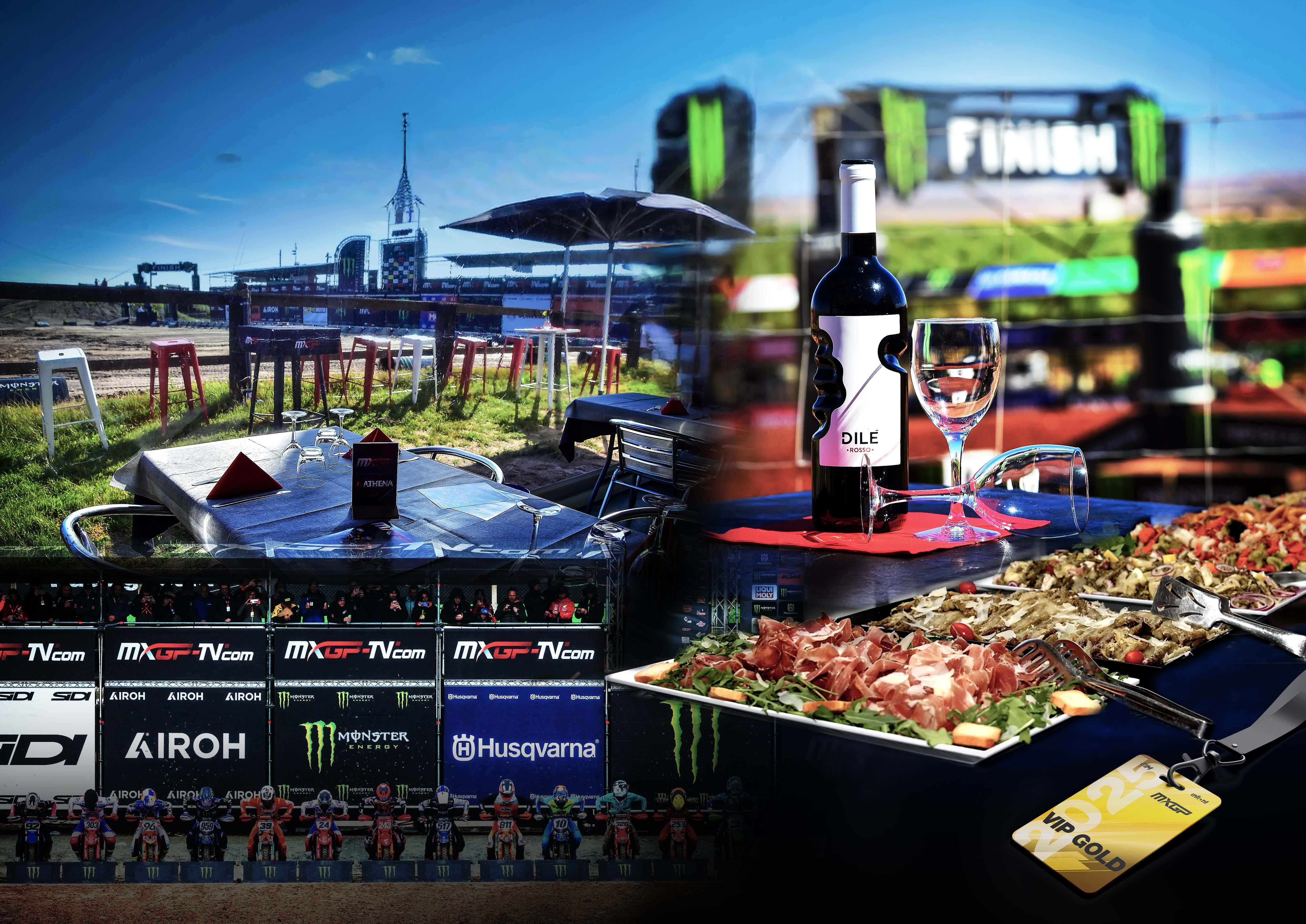
THE MOTOCROSS WORLD IS PAYING TRIBUTE TO FRANCESCO ZERBI, A TOWERING FIGURE WHOSE LEADERSHIP HELPED TRANSFORM THE SPORT ON A GLOBAL SCALE. ZERBI, WHO SERVED AS PRESIDENT OF THE FÉDÉRATION INTERNATIONALE DE MOTOCYCLISME (FIM) FROM 1995 TO 2006, PASSED AWAY IN JUNE 2025 AT THE AGE OF 92.
Under his guidance, motocross evolved from an amateur pastime into a modern, professional sport. Giuseppe Luongo, President of Infront Moto Racing (formerly Youthstream) and the long-time promoter of the FIM Motocross World Championship (MXGP), worked closely with Zerbi during this pivotal era. In a recent interview, Luongo offered personal refl ections on Zerbi’s character and recounted how their partnership drove motocross into the future.
These insights, combined with offi cial tributes, paint a picture of a leader “born a President” and highlight the lasting impact of his vision on the sport.
Giuseppe Luongo remembers Francesco Zerbi fi rst and foremost as a natural leader. “Mr. Zerbi was an exceptional person, I always said
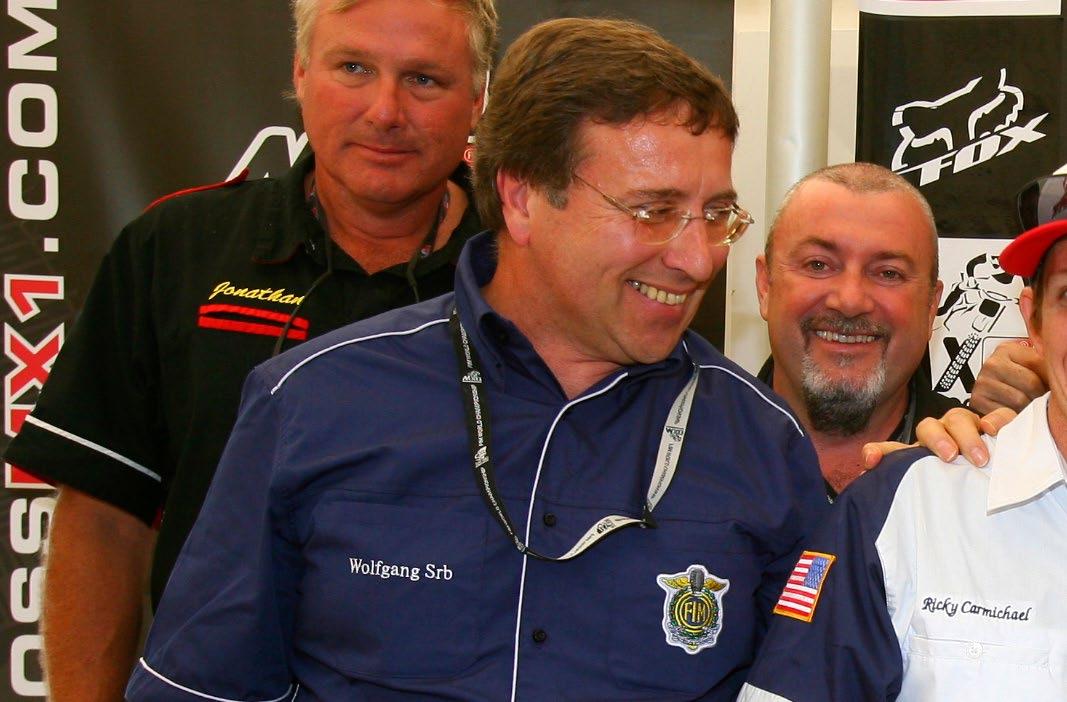
he was born a President,” Luongo remarks, recalling the class and charisma Zerbi carried as FIM’s leader. Zerbi had an innate ability to draw on the expertise of those around him while still charting a clear vision for the future of motorcycle sport. According to Luongo, Zerbi “knew exactly how to use the knowledge of his collaborators and partners, and he had the vision to bring motorcycle sports into the future.” This combination of personal charm, strategic thinking and willingness to listen made Zerbi a true leader.
One personal memory in particular captures Zerbi’s leadership style. Luongo recounts a pivotal meeting years ago when a major change in motocross was being debated. Initially, Zerbi’s opinion differed from Luongo’s and FIM Motocross Commission director Wolfgang Srb’s proposal. Luongo met privately with Zerbi beforehand to explain the reasoning and benefits behind their idea. Zerbi listened intently and came to understand their perspective, yet he said nothing at first. “One hour later, when we had the official meeting with Mr. Zerbi, Dr. Srb and other FIM board members,” Luongo recalls, “he came out with our idea as if it was his own idea.” Zerbi was not interested in claiming credit, but in making the right decision for the sport. “This is a true President,” Luongo
reflects. “A President who creates a good team around him, listens to them and then makes their idea as if it was his own.” The anecdote speaks volumes about Zerbi’s character: he was secure enough in his leadership to elevate team ideas above personal ego, thus empowering his collaborators and ensuring the best outcomes for motocross.
The partnership between FIM and Luongo’s organization (then known as Action Group, later Youthstream, now Infront Moto Racing) was founded on mutual trust and a relentless drive to modernise motocross. “The most important [thing] with him was the truth, because he works on honesty,” Luongo says of Zerbi’s approach. Transparency and integrity were expected on all sides. Every time a change was proposed for the sport, Luongo had to present the idea to Zerbi with full honesty about its pros, cons and expected outcomes. Zerbi would scrutinize the details, but once convinced of a plan’s merit, he gave it his full support.
Zerbi’s professionalism also set the tone for others. He was extremely precise in meetings and famously punctual. “He was always on time, and he expected everyone to be on time,”
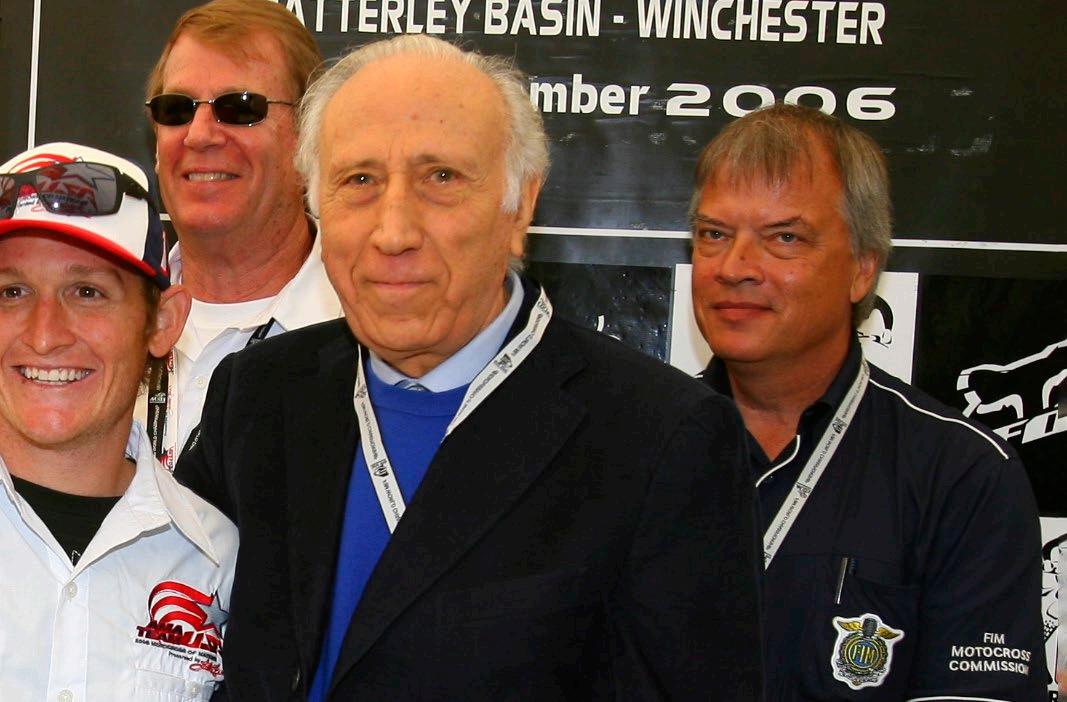
Luongo notes. “If somebody was 5 minutes late, he would cancel the meeting.” This discipline might seem strict, but Luongo admired it; he shares that it matched his own style and “I learned a lot from him.” By demanding professionalism from everyone, Zerbi elevated the standards of conduct within the sport’s administration. It created an environment where promoter and federation could collaborate effi ciently and respectfully. Luongo emphasises that he and Zerbi maintained a direct line of communication and “always respected the role of each other.” The promoter and the FIM worked hand-in-hand, with all key decisions made in mutual agreement. This alignment at the institutional level, guided by Zerbi’s leadership, was crucial in advancing their common goals for motocross.
“MR. ZERBI WAS AN EXCEPTIONAL PERSON, I ALWAYS SAID HE WAS BORN A PRESIDENT”

During Zerbi’s tenure, motocross underwent a dramatic evolution. What had long been an amateur-oriented sport was systematically transformed into a professional, internationally televised series, yet without losing the camaraderie and close-knit spirit that make motocross feel like one big family. Luongo identifi es the early years of this transformation as some of the most challenging and ultimately rewarding times he faced alongside Zerbi. “The most complex challenge we faced was at the very beginning, where we transformed the sport from amateur to professional,” Luongo explains. Many traditionalists resisted changes like the introduction of live television coverage, modern infrastructure and a more commercial approach. Convincing everyone of the need to “change the vision of the sport completely” required tenacity and a clear message. Zerbi’s support was pivotal in pushing through these reforms. His leadership “marked a turning point in the global management of the sport, introducing a more professional and structured approach to international motorcycling governance”, as one offi cial tribute noted. In practice, this meant bringing motocross up to the standards of other world-class motorsports.
Luongo points out that essentially “all the decisions we made during that time with Dr. Zerbi” paved the way for the MXGP we know today. Indeed, many of the features now taken
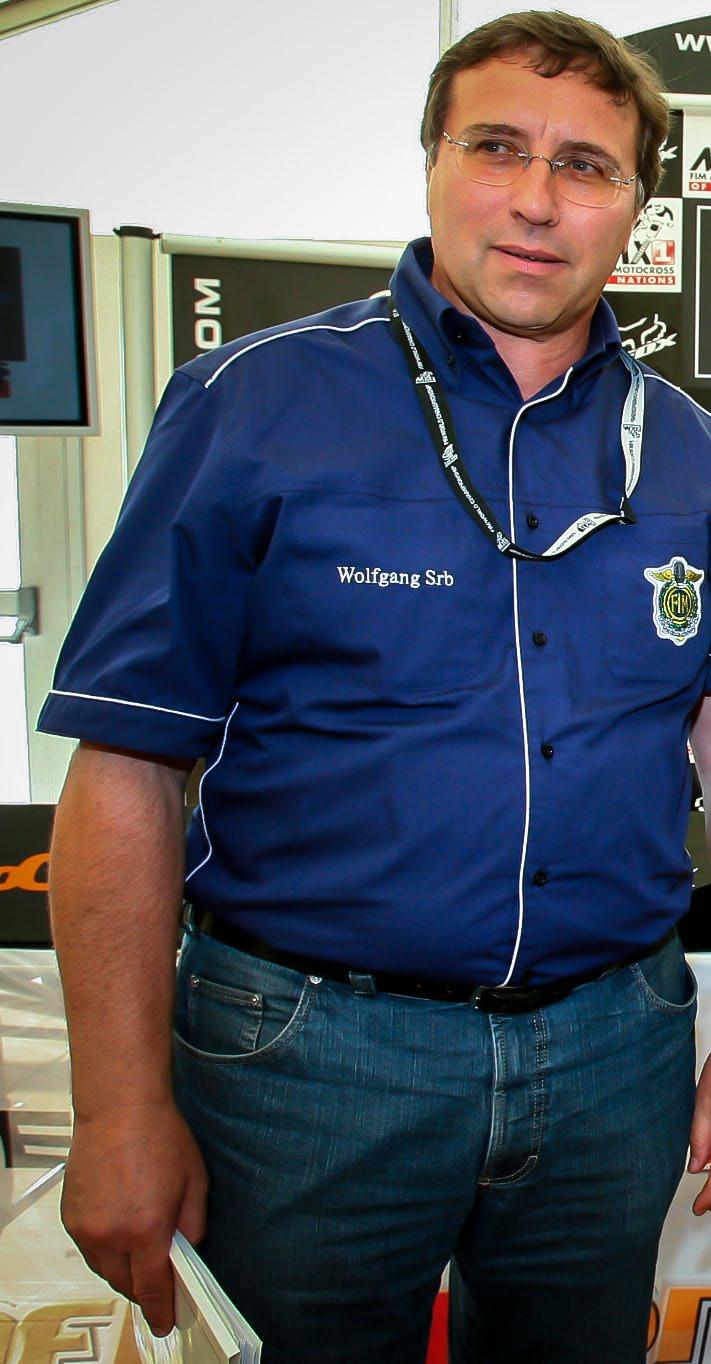
for granted in Grand Prix motocross were initiated under Zerbi’s watch. Some of the key developments in the MXGP World Championship during the Zerbi-Luongo era included:
• Professional race infrastructures: Upgrading facilities from the paddock to the pit lane, ensuring teams had world-class setups and spectators had better viewing areas.
• Enhanced hospitality and VIP experiences: The introduction of high-quality hospitality units and the “skybox” VIP lounges at tracks gave sponsors and guests new ways to engage with the sport, raising motocross’s profi le.
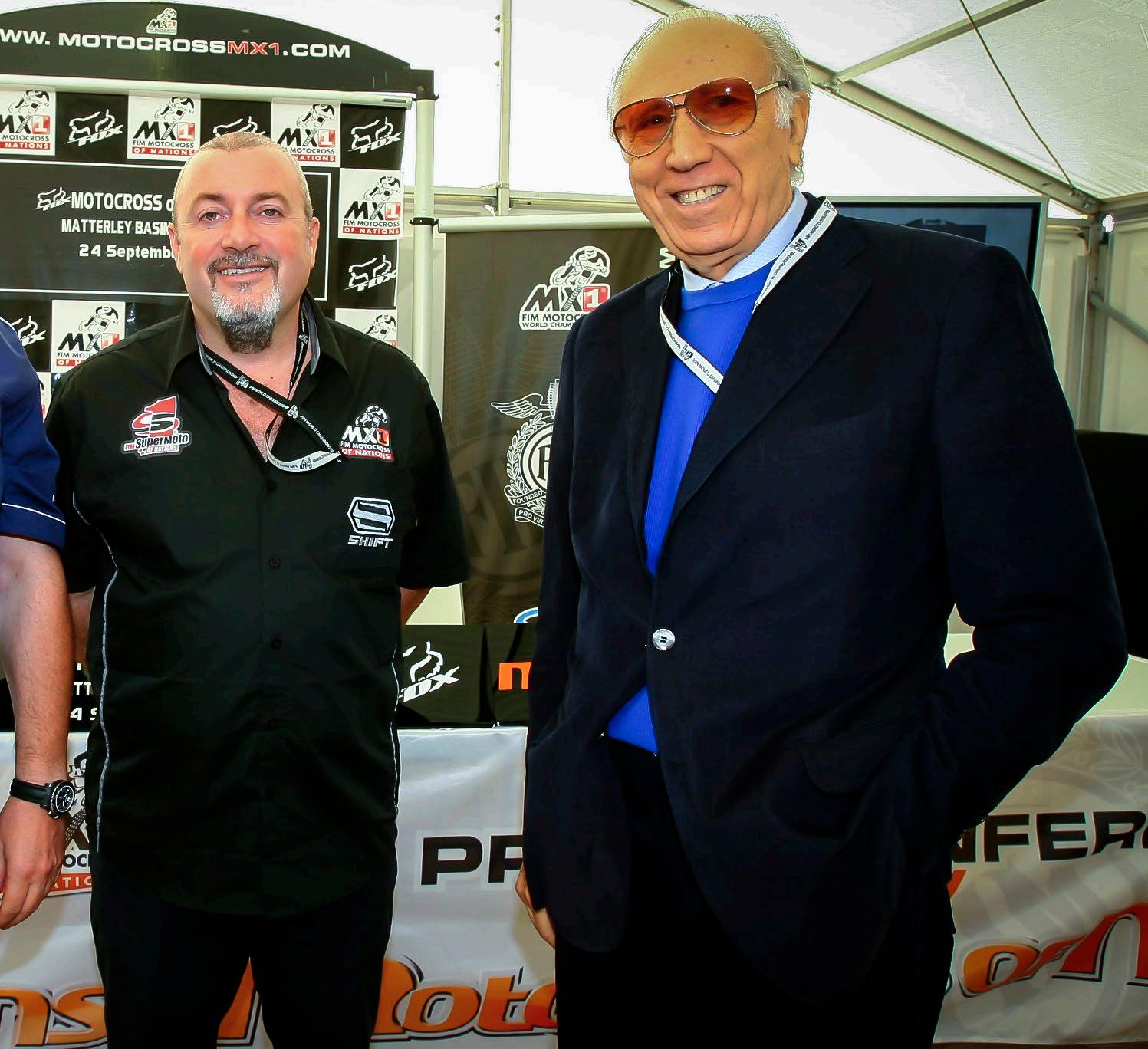
• Modernised sport regulations: Sport rules were refined to be clearer and more fair, in line with international standards, reinforcing the FIM’s commitment to integrity and safety in competition.
• Television and media coverage: Perhaps most significantly, motocross entered the television era. MXGP struck deals to broadcast races worldwide, vastly expanding the sport’s audience and appeal. This media revolution not only brought new fans but also attracted sponsors and elevated riders’ profiles.
Looking back, Luongo marvels that changes which “now all look normal” in today’s MXGP were once radical ideas that met with
opposition. It was through the shared vision and persistence of Zerbi, Luongo, and key stakeholders (including manufacturers and team partners) that these ideas became reality. By the end of Zerbi’s FIM presidency in 2006, the FIM Motocross World Championship had been firmly set on a modern, professional course. The groundwork laid in those years positioned MXGP as a truly global series, something that continues strong to this day.
Even as they pushed motocross into a new era, Zerbi and Luongo remained mindful of the sport’s grassroots and traditions. “For both of us, the respect of the roots of motocross was
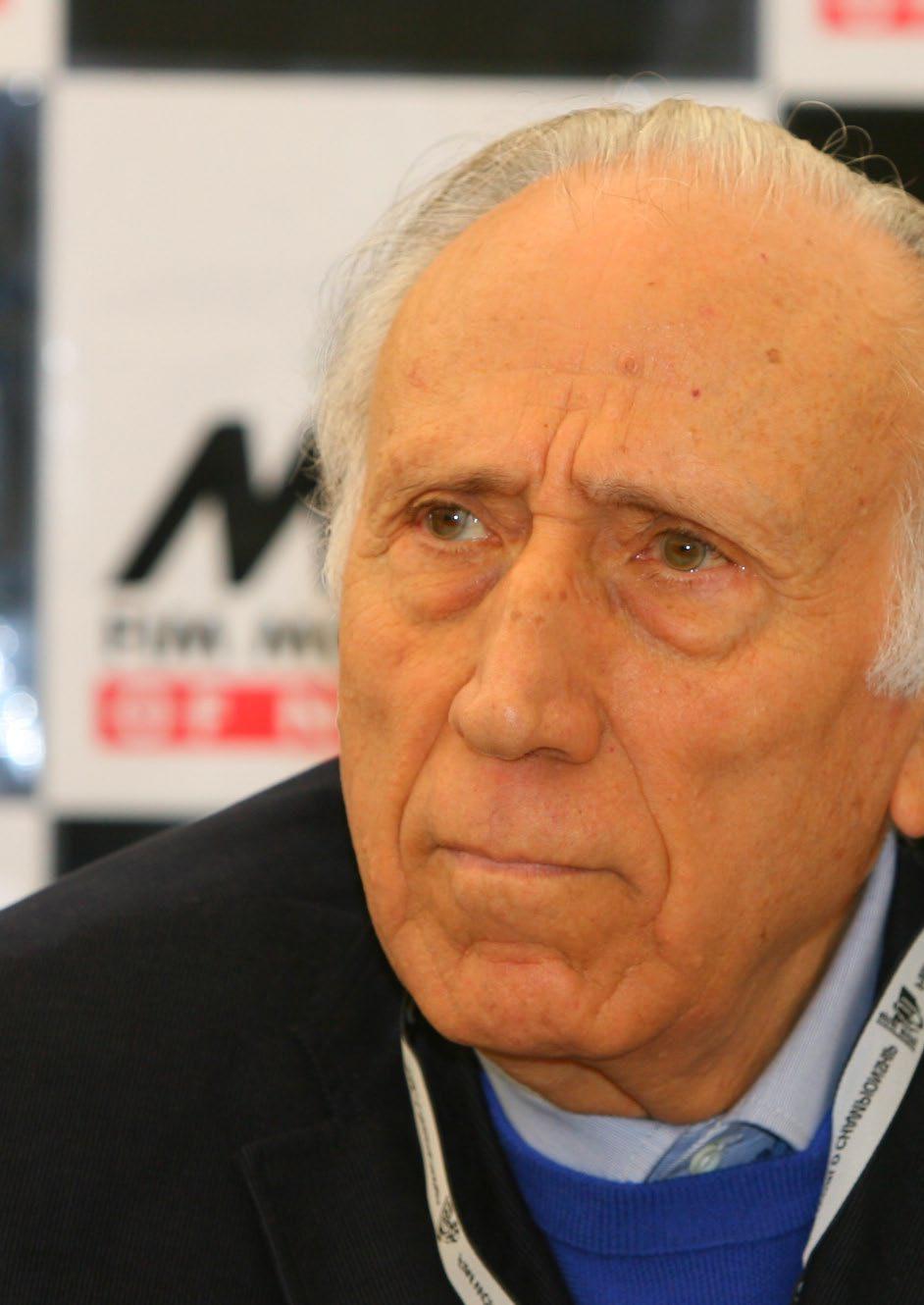
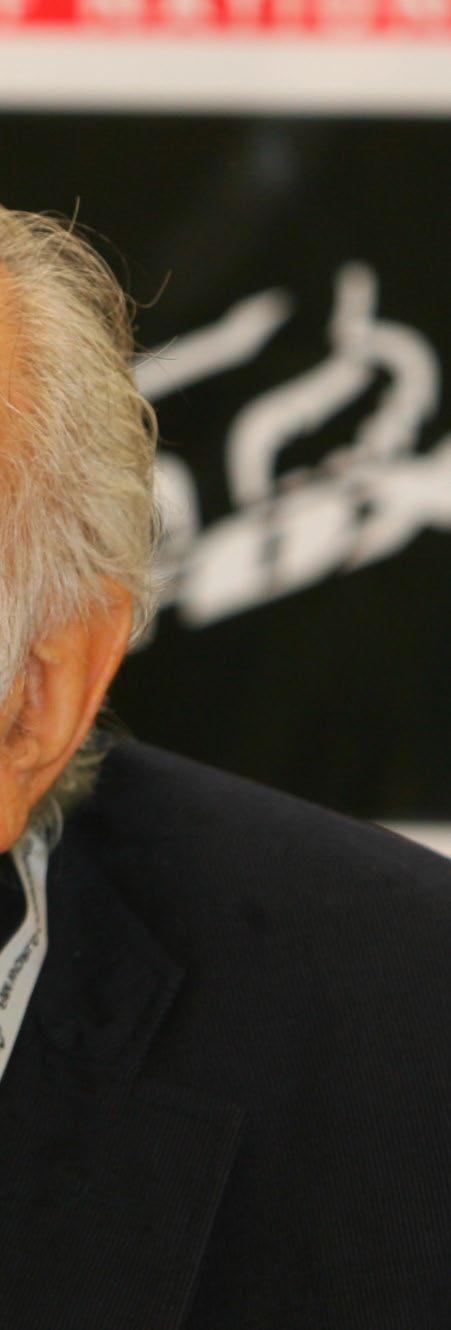
very important because our sport lives and grows thanks to the fans, riders and all the volunteers,” says Luongo. They understood that motocross had a passionate existing community, from die-hard fans to amateur club racers and volunteers who run events; and that any modernisation had to keep this core spirit intact. Zerbi was careful to preserve the heritage and authenticity that make motocross unique.
At the same time, he knew that “in modern times we needed the evolution and media,” as Luongo puts it. Finding the right balance between respecting tradition and embracing innovation became a guiding principle. Zerbi often spoke of motocross as a living ecosystem, a “balance between professionals, manufacturers, teams, riders, media, fans and volunteers.” Each element had to be respected and considered. Changes were implemented gradually and thoughtfully, ensuring that fans and grassroots participants felt included even as the championship expanded its professional reach. This approach helped avoid alienating the traditional motocross community during the sport’s evolution which was vital. “Motocross is a balance,” Luongo emphasises, and Zerbi “understood this very well.” It’s a philosophy that continues to guide MXGP leadership today: honour the past and the passionate people who built the sport, even as you innovate for new generations of riders and fans.
One of Francesco Zerbi’s most important contributions – and a key to the sport’s success – was his ability to unify different stakeholders in the motorcycling world. Prior to his tenure, there was often friction among the various parties that make international racing possible. “At that time,” Luongo recalls, “all the parties saw the other parties as competitors, not as partners.” National federations, promoters, manufacturers and teams each tended to focus on their own interests. Zerbi recognised that this mentality was holding the sport back. As FIM President, he worked tirelessly to foster a spirit of partnership. His vision was to make the FIM, national federations, promoters and manufacturers work as partners because together we would be able to reach much higher goals than separately, Luongo explains.
In motocross, this meant bringing everyone to the table to serve the common goal of growing the sport. Zerbi’s tenure saw improved collaboration between the FIM and promoters like Youthstream, but also with the industry, motorcycle manufacturers and sponsors and local organizers around the world. By aligning interests and reducing infighting, the sport could
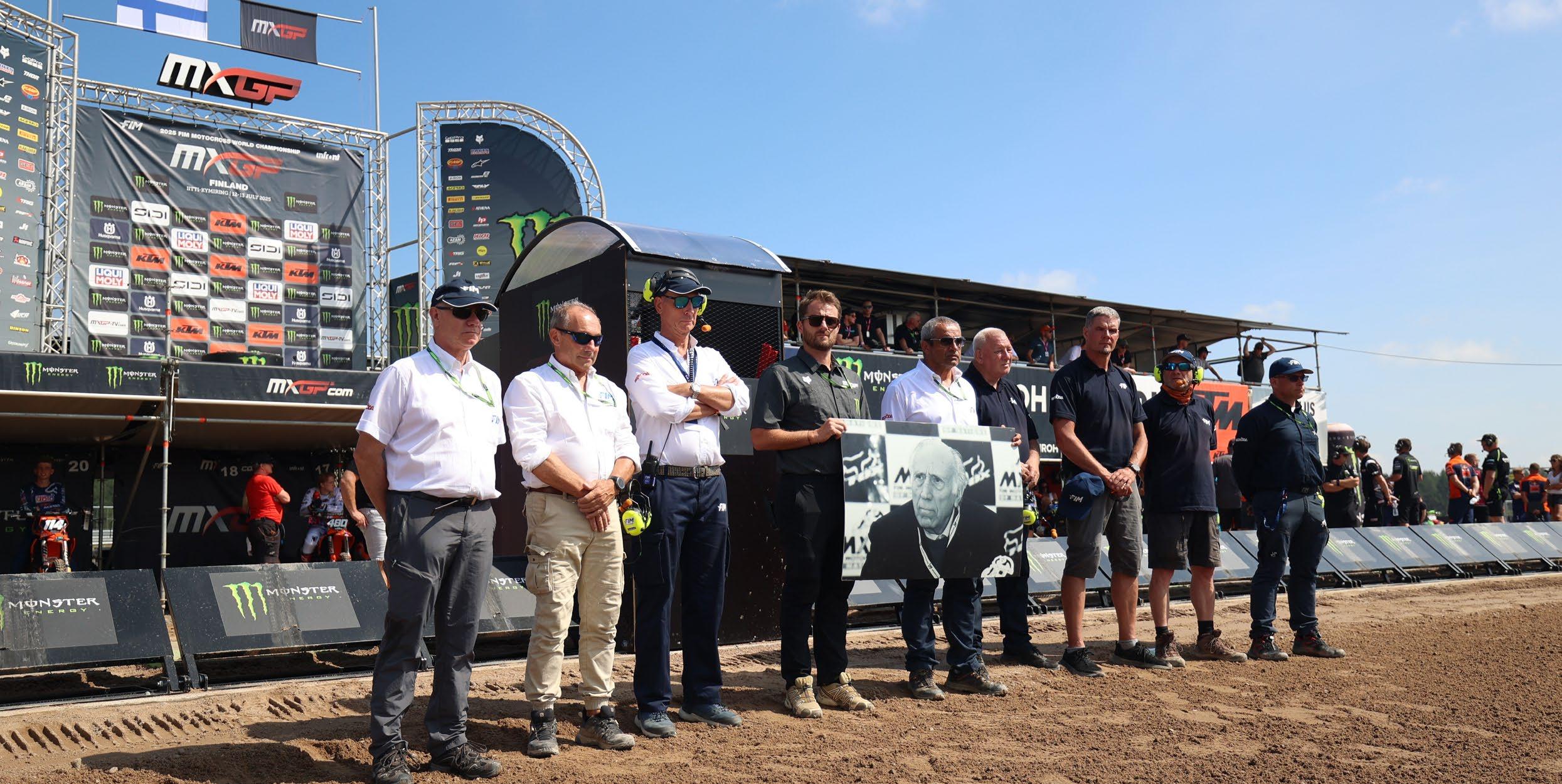
advance more rapidly. The results of Zerbi’s unifying approach are evident today: “and the results today we see with MotoGP and MXGP,” says Luongo, noting that the two premiere motorcycle racing series (road racing and motocross) both flourished through cooperation. In fact, one of Zerbi’s hallmark achievements was supporting the creation of a strong continental union in Europe (the UEM, now known as FIM Europe) to further organize and harmonise motorcycle sport governance. His efforts to bridge gaps and encourage dialogue have had a lasting impact, creating a more cohesive global motorcycling community.
Francesco Zerbi’s legacy in motocross and motorcycling is profound and enduring. Those who work in the sport today, even if they never met Zerbi, are beneficiaries of the structures and innovations he put in place. “What today we see as normal was created and developed while he was leading the FIM,” Luongo points out. Indeed, many aspects of professional motocross, from the way races are run, to the fan experience, to the cooperation behind the scenes, can be traced back to initiatives from Zerbi’s presidency time. He not only modernised motocross but also helped give motorcycle sport in general “a modern face,” as current Italian federation president Giovanni Copioli observed. Under Zerbi’s guidance, the FIM as an institution gained greater authority and credibility, all while maintaining the core principle of fairness that underpins
all competition. In Luongo’s words, Zerbi’s mission was “to modernise all motorcycle sports, bring authority and media, and to maintain the fairness of the sport, which are the roots of FIM.” That mission has undeniably been accomplished in motocross, where the sport’s integrity and appeal to fans remain strong even as it has scaled up globally.
In the wake of Zerbi’s passing, tributes have poured in from across the motorcycling world. At the recent MXGP of Finland, as well as the FIM Junior Motocross World Championship, a solemn minute of silence was observed in Zerbi’s honour. Riders, teams, officials and fans stood together to pay respects; a poignant reminder of the deep influence Zerbi had on the community. Summing up Zerbi’s impact is no easy task, but perhaps it’s best captured by the sentiment shared in Infront Moto Racing’s official memorial announcement: Zerbi’s “vision, leadership, and unwavering passion leave an indelible legacy that will continue to inspire for decades”. From Giuseppe Luongo’s personal reflections to the institutional accolades, it is clear that Francesco Zerbi will be remembered as an extraordinary leader. His foresight in blending tradition with innovation and uniting people under a common goal, has forever changed motocross and helped secure a bright future for the sport he loved.

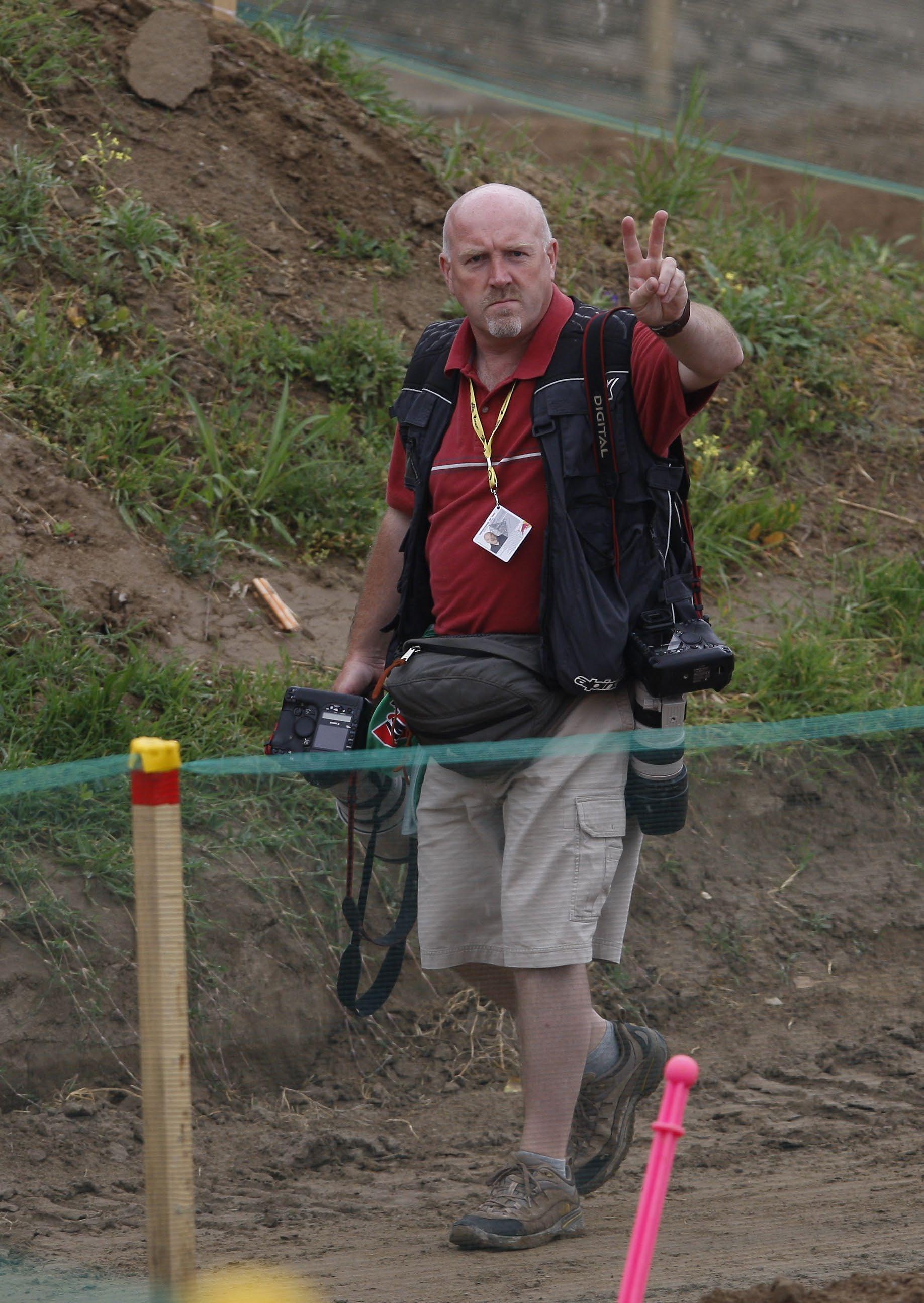
FOR MOTOCROSS FANS OF A CERTAIN AGE, ESPECIALLY THOSE COMING FROM GREAT BRITAIN, THERE IS ONE NAME THAT HAS STOOD ABOVE ALL OTHERS IN MOTOCROSS PHOTOGRAPHY FOR THE BEST PART OF 40 YEARS. STILL ABLE TO CAPTURE THE VERY BEST IMAGES OF OUR BEAUTIFUL SPORT, RAY ARCHER IS NEARING THE END OF A REMARKABLE TRACKSIDE CAREER AT THE TOP OF WORLD MOTOCROSS.
While his 1980s contemporary Jack Burnicle may also have been a writer, and in later years also a commentator, Ray Archer stuck to what he loved the most and kept on clicking to give us years of beautiful shots for whoever he worked for. As a teenager in the 1990s, your writer here would have had Ray’s name on most of those bedroom posters that featured the icons of the time – Stefan Everts, Alessandro Puzar, Greg Albertyn, Dave Thorpe, Donny Schmit, Sebastien Tortelli, hell even our very own Paul Malin in Cadbury’s Boost colours (just… please… don’t tell him!).
The man from the north-east of England – as evident by his accent that is unique to that part of the UK – has been a real pleasure to get acquainted with over the last couple of years since I joined the MXGP crew. Not a hint of ego but still proud of his work, cuttingly direct but never in a nasty way, never really smiling but clearly cheerful. It was great to sit down with Ray and talk about his life around Motocross. He is the perfect character to keep the engine room of the sport turning. It’s not about him, it’s about those at the end of the lens.
Ray started off with scrambling, as it was called way back when in the UK, even though his father “would
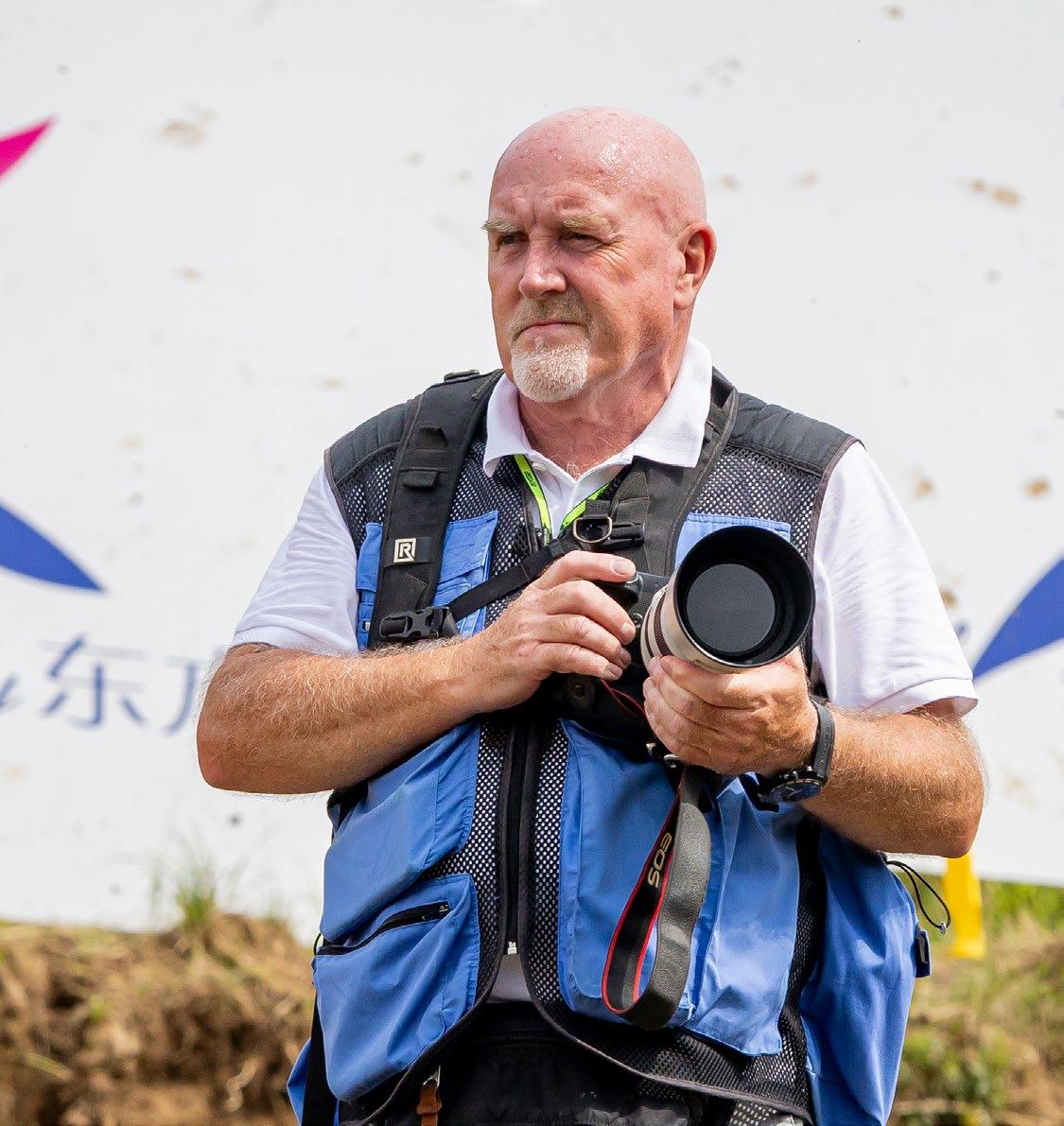
never let me have a motorbike, but when I started work as a trainee surveyor with the local council, I bought myself a Maico, in about 1977 or ‘78.” The German brand was indeed the ideal clubman’s machine back then. Smooth in power and sweet in handling, they never won a world title but sold millions of dirt bikes at the time.
“I knew someone that was into Speedway, but that was too dangerous, so I started scrambling, did that until about 1980. I was never any good, and I started to lose interest when I broke my thumb, but I just started enjoying taking photographs of the bikes. The photography took over the Motocross, you didn’t get that Monday morning achy, achy feeling that everybody has after a day’s racing. I was always passionate about it. Anybody fast, I would always look at them and wonder how they did it!”
Ray started to branch out with his photographs, that clearly turned people’s heads. After four or five years, he made the decision to quit the day job and do the photography full time. Starting with British Championships and working his way to the likes of Le Touquet and the Scheveningen Beach Race in the Netherlands, he speculatively

sent a few photos to British magazines like Dirt Bike Rider in the UK. One of the biggest publications, the weekly all-discipline newspaper Motor Cycle News, picked him up to cover 500cc Grands Prix, the biggest class at the time with a rash of top-level British riders, from the end of Honda’s first World Champion Graham Noyce’s career through to three-time World Champion Dave Thorpe, four-time runner-up Kurt Nicoll, and a whole host of privateers who went to every round. Success, and therefore national interest in Motocross, was at an all-time high at the time, and Motocross riders regularly picked up the paper’s “Man of the Year” award when road racers from the UK, in what is now MotoGP, simply couldn’t match that level of success.
By the time he was in his early thirties, Ray’s reputation at the start of the 1990s had grown to the point of being the first choice for some of the top brands in the sport. With colour printing becoming the norm for a media industry still emerging from the black-andwhite photograph age, the images needed to be better, and Ray was the man for many. “Two ex-Motor Cycle News guys were doing the press for Suzuki, so they called me up and got me to take photos for them, in the early ‘90s, and that was when they took on Mike Healey.” The colourful American had taken the #2 plate to the yellow bikes after narrowly missing the world title in 1991 on a KTM, but the move wasn’t a good one and he never won another GP race. However, his character was perfect for any media outlet, and Ray made sure it came out through his images. “He was
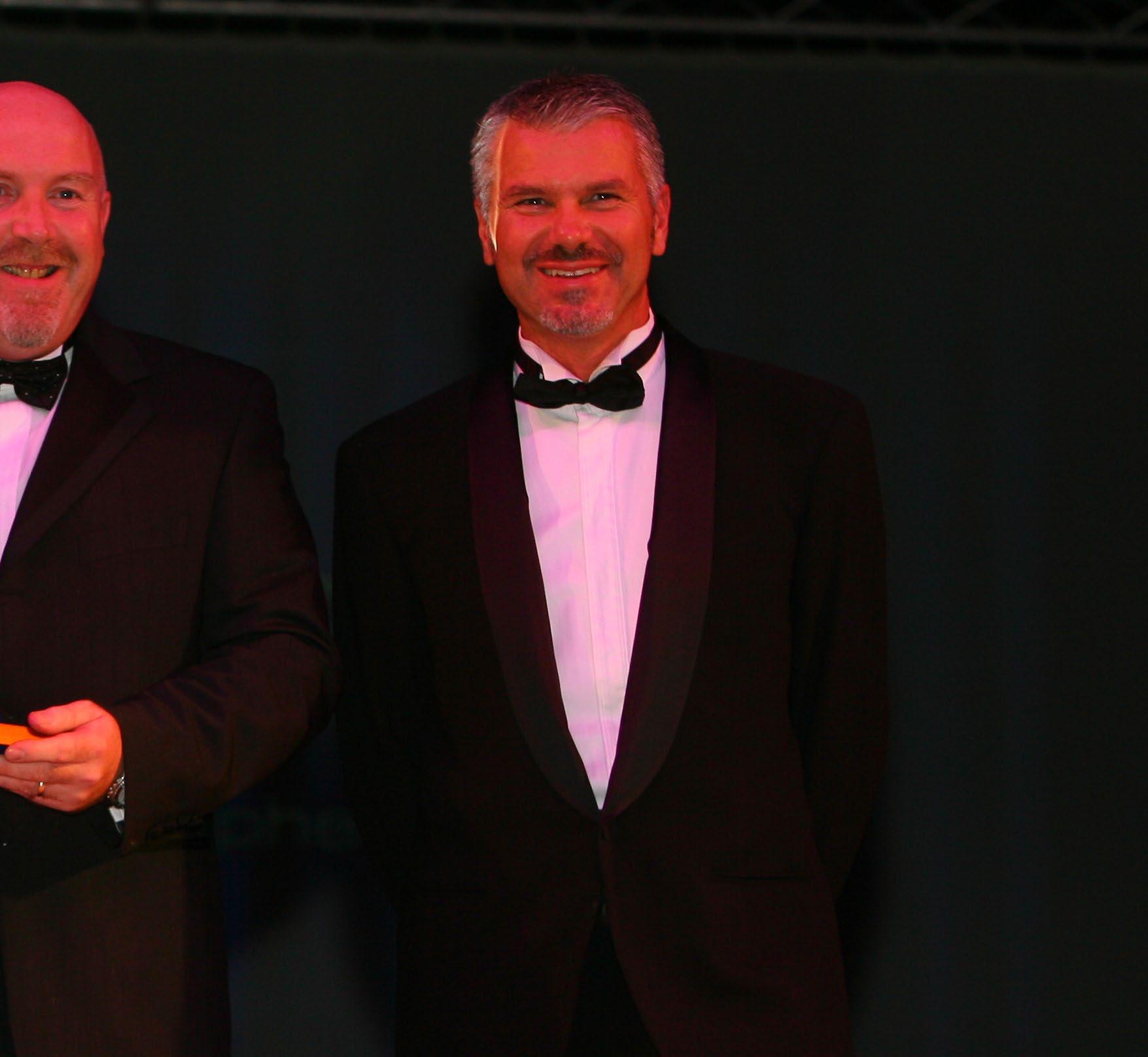
a rebel, so anything he did or said had to be run through [Team Manager] Sylvain Geboers to check if we could use it, or change it!”
He worked for an agency where “One side of the room was Suzuki, the other side was Yamaha. It was in the UK, so it was easy for me, but everything I took was kept separate, even if it went to the same address. One envelope for Yamaha, one for Suzuki, just to save confusion! Suzuki was my longestserving client, for 27 years, right up until the factory team stopped. Then in 1995 I started working for factory Kawasaki, with team boss Alec Wright and then Jan de Groot. Lots of great riders, and the relationships built from there.”
At the end of the 1990s, through the Suzuki connection, he got a contract with their tobacco sponsor Winfield, one of the last before the widespread ban for that kind of sponsorship. It led to an early move towards what would become the next stage of photography and media.
“I picked up a contract with Winfield, and they were involved with British American Racing.” The BAR team was starting in Formula 1 at the time and tried to rebel by having two unidentical cars for promoting different brands. The FIA blocked the move, resulting in the famous ‘zipped-up’ livery of the two designs combined. “They insisted I used
digital images, so I bought a digital camera which cost me £14,800. [New MX bikes at the time were only just pushing the £6k mark!]. It had a 128MB memory card, one spare battery, so I could take up to two pictures on it. People were saying I was crazy, I had to take a guy from England to the first GP at Valkenswaard
with me to show me how to use it. I didn’t know how to use a computer at all until then. Everyone who said I was crazy to buy it, within two months they were asking me for advice! It only took about three months for that camera to pay for itself, it just went crazy. It grew so quickly because it was so much easier for the papers and magazines, who were basically printing on toilet paper then, to get the cover photos into place from the digital camera, with plenty good enough quality for that outlet.”
“Before digital, for Suzuki as an example, I would get home to Newcastle by Monday morning, straight into the laboratory before 9:30 to develop the film, go back at 11:00, pick out the best of the colour transparencies, mount them, caption them, then a sheet of 20 would go by courier to Japan on Monday afternoon. They would get it Tuesday or Wednesday, pick out their ten favourites, make 100 duplicates of those ten, and send 100 couriers around the world, so on Friday morning, everyone’s gotten photographs from Suzuki. That was the same for Honda, Kawasaki, Yamaha… and now, you can do it all from your hotel room!”
The digital camera was upgraded after a few years, as Ray learned how to store the files. He has thousands of burnt CDs full of images from those early digital days, as storage was one of the major challenges due to spare hard drives being so expensive. Can you imagine the shots on those CDs?! Motocross history, right there, in storage…
So what, for an experienced shooter like Ray, constitutes a good Motocross photograph? “I hate shooting corners,” he says immediately, without a hint of sarcasm, “normally there’s just advertising there now. I’ll shoot it if there’s loads of roost, like a big dirt wall or berm, or a plume

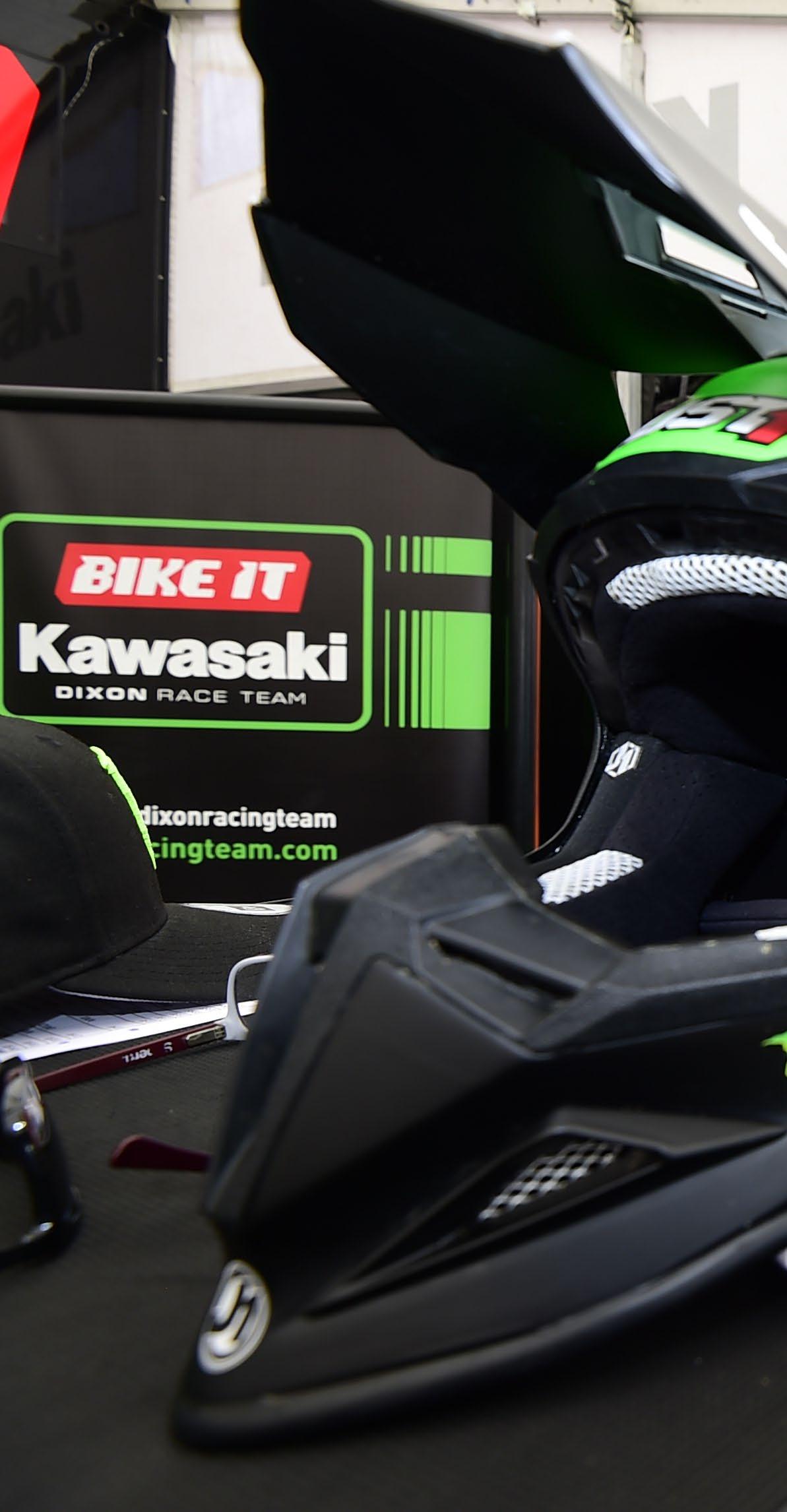
of sand that’s shooting down the rider’s necks, which they hate, but usually I find the crowd, and put the action in front of the crowd. I try to make every shot look like there’s tens of thousands of people watching. Sometimes people complain that I crop too tight, but it’s to make sure that you get the bike, the product, and not the structures around the track, or the bridges. Making sure the bikes are in focus. If you work for the Japanese factories, they are only interested in seeing their bike, their logo. Other companies, they are looking for their components, their sprockets or handlebars, their stickers. So, I shoot tight with a long lens so the background is thrown out but the bike is razor sharp. That’s my style and how I’ve always shot. I’ll share this with anybody, it’s not rocket science, but with a heavy workload and lots of people to shoot for, you can’t mess around
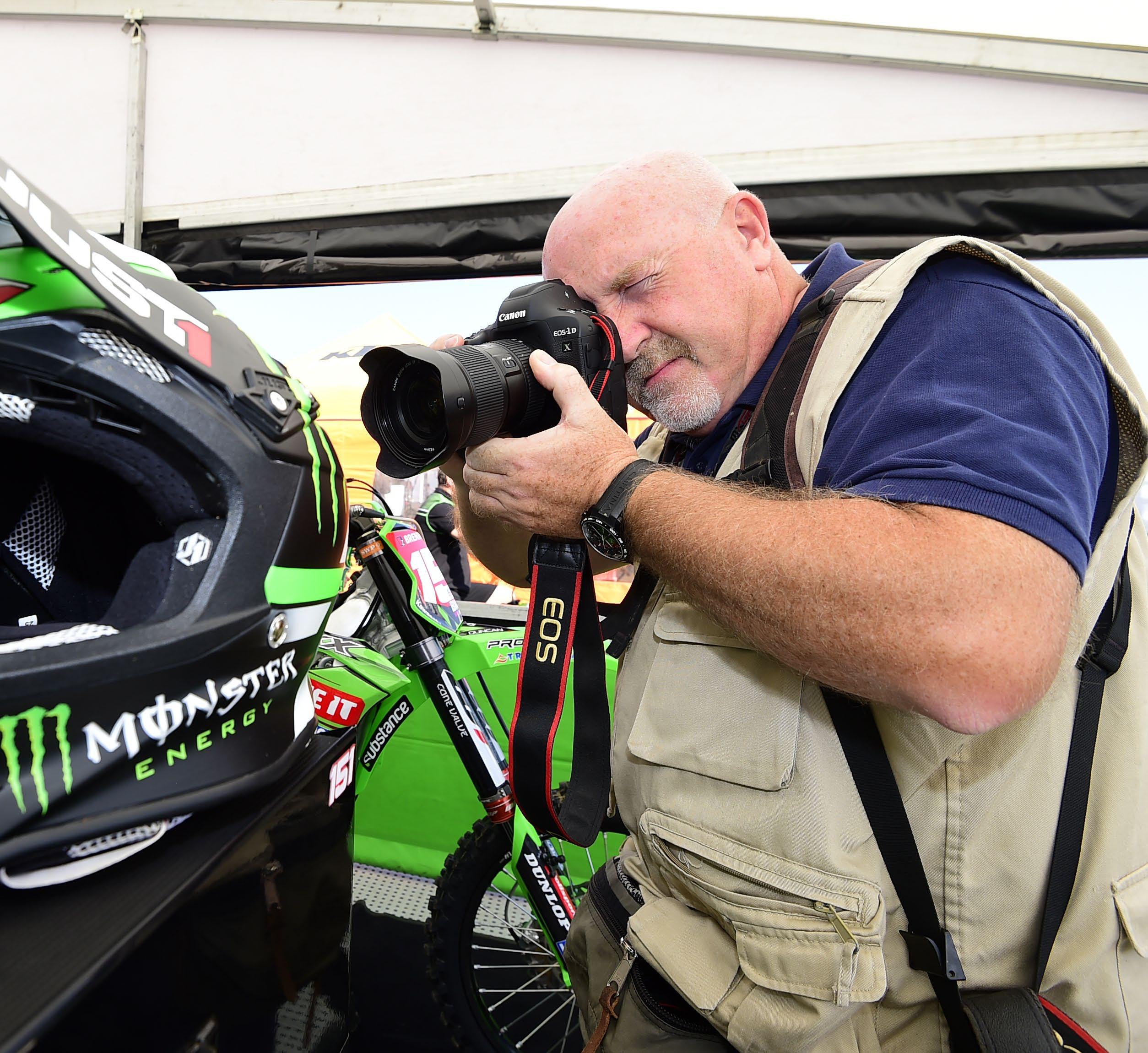
with settings too much or you’ll never get all the photos taken.”
The man says it’s not rocket science, but people in the industry say otherwise. A young photographer recently confided that he looked for where Ray was going, because it wasn’t usually where everyone else was going to be. The eye for where to get that shot is everything, and if you happen to ever stand in front of Ray’s camera, he will let you know about it! It is true that he won’t usually be part of a crowd, at least not for long, and you get the feeling it’s not that everyone else is wrong, it’s that he is right.
Ray has been there and done it, seen it all. Does he have any favourite anecdotes, or favourite shots? As usual, the answer doesn’t come with much hesitation. “I worked at a mid-week Belgian International in Keiheuvel, and I was meant to see Dave Thorpe there so I stayed out, but Honda wouldn’t let him ride because he was fighting for the Championship. Eric Geboers was there, and he had been out with Danny ‘Magoo’ Chandler, when he was racing in Europe.” As a note, this dates the story to 1985, the only year when Magoo raced the 500cc GPs before he was tragically paralysed the following year in a European Supercross. “Eric owned a nightclub, so they had been partying, drinking, and making bets. One of the bets involved a forfeit, where the loser had to shave his head into a Mohican. They weren’t
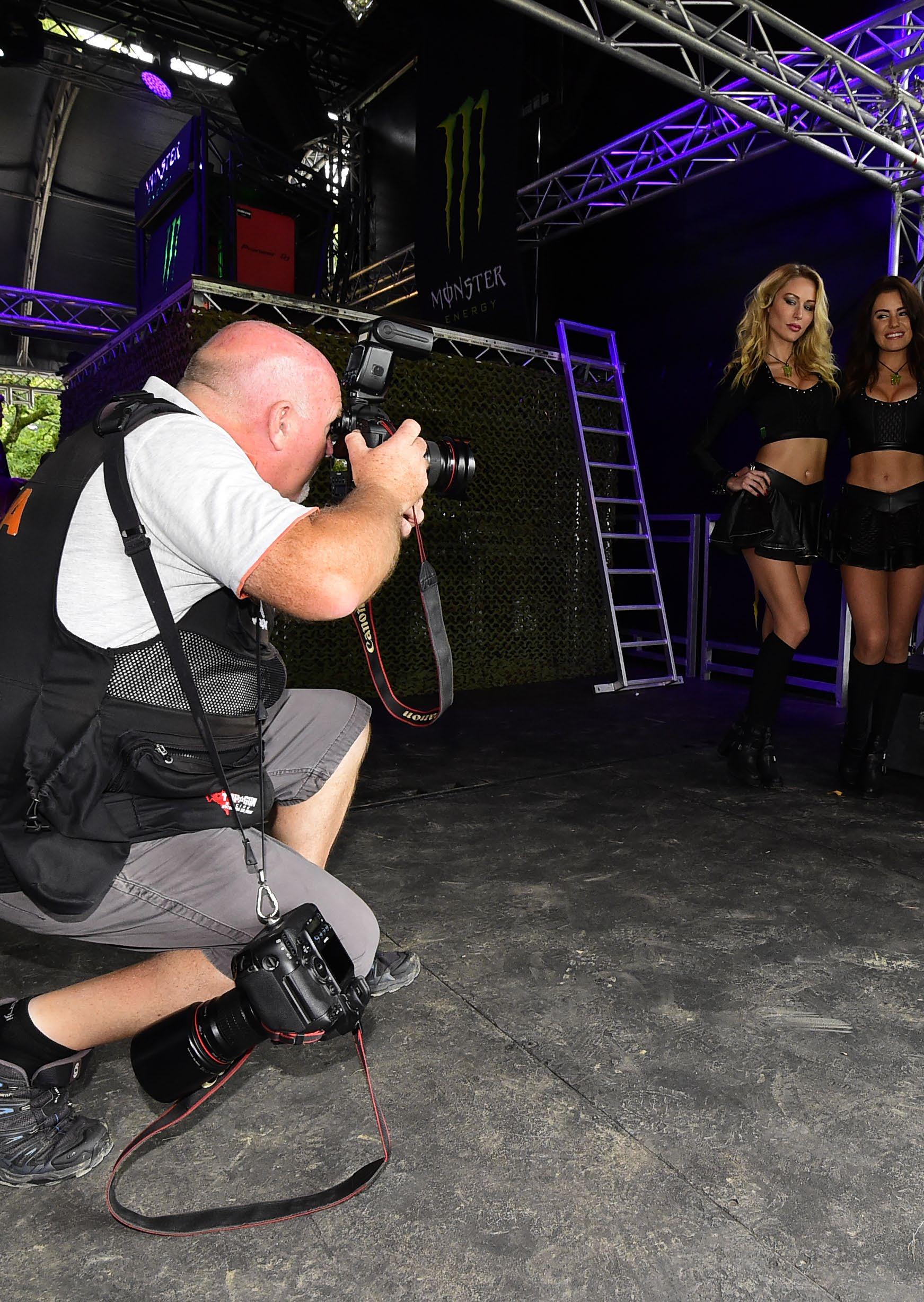

racing either, but just hanging out, hungover, at the track. And Chandler is just a friendly American guy, so he’s there with a mohawk and I just shook my head. And he gave me the finger! Just one finger, with this ridiculous mohawk, slouched in a tiny chair, and this photograph has been everywhere since, even though few know the story behind it. Eric was such a funny character, they were two super guys. Chandler was a wild child, but still such a nice guy.”

THE BEAUTY OF PHOTOGRAPHY IS THAT YOU CAN SHOOT IT IN THE CAMERA WITH THE RIGHT FOCUS, THE RIGHT SETTINGS, AND MAKE A DIFFERENCE.”
“People don’t realise that it’s a business, it’s not just riding motorbikes. You’re promoting a brand, meeting the fans is all part of it. There are so many characters, even today. You get your robots, those that make money from it, and those that lose a lot of money doing it. Some would hide their money in a sock to take it back home, others would pay full corporation tax to stay clean and build on what they earned. And fair play to them, they risk their lives every week! My favourite riders were Pit Beirer, Tallon Vohland and Alex Puzar, just because they were throttle jockeys. Elbows always down, it was pinned, all the time, they didn’t back off. It’s a pleasure to photograph people like that.”
There is no bitterness from Ray towards the riders themselves, as could be the case with someone who didn’t race to a professional level. “I couldn’t do it, simple as that. I am happy with what I do, you get frustrated sometimes, but I don’t have to work in a factory, I’m in the fresh air all the time, some of it is strenuous and you work late hours. I enjoy the travel most of the time, I go back home because I’ve got a family, a life outside of this. You can stay out here, but I know so many people out here who don’t have a life. My wife would travel with me, and the kids would come with us, until she needed to stay home with the kids, so I would go home to see them, and that’s how it’s always been. My family is looking forward to having me around more often.”
“You earn respect. I don’t want any respect, I’m not at the races to be people’s friends. I
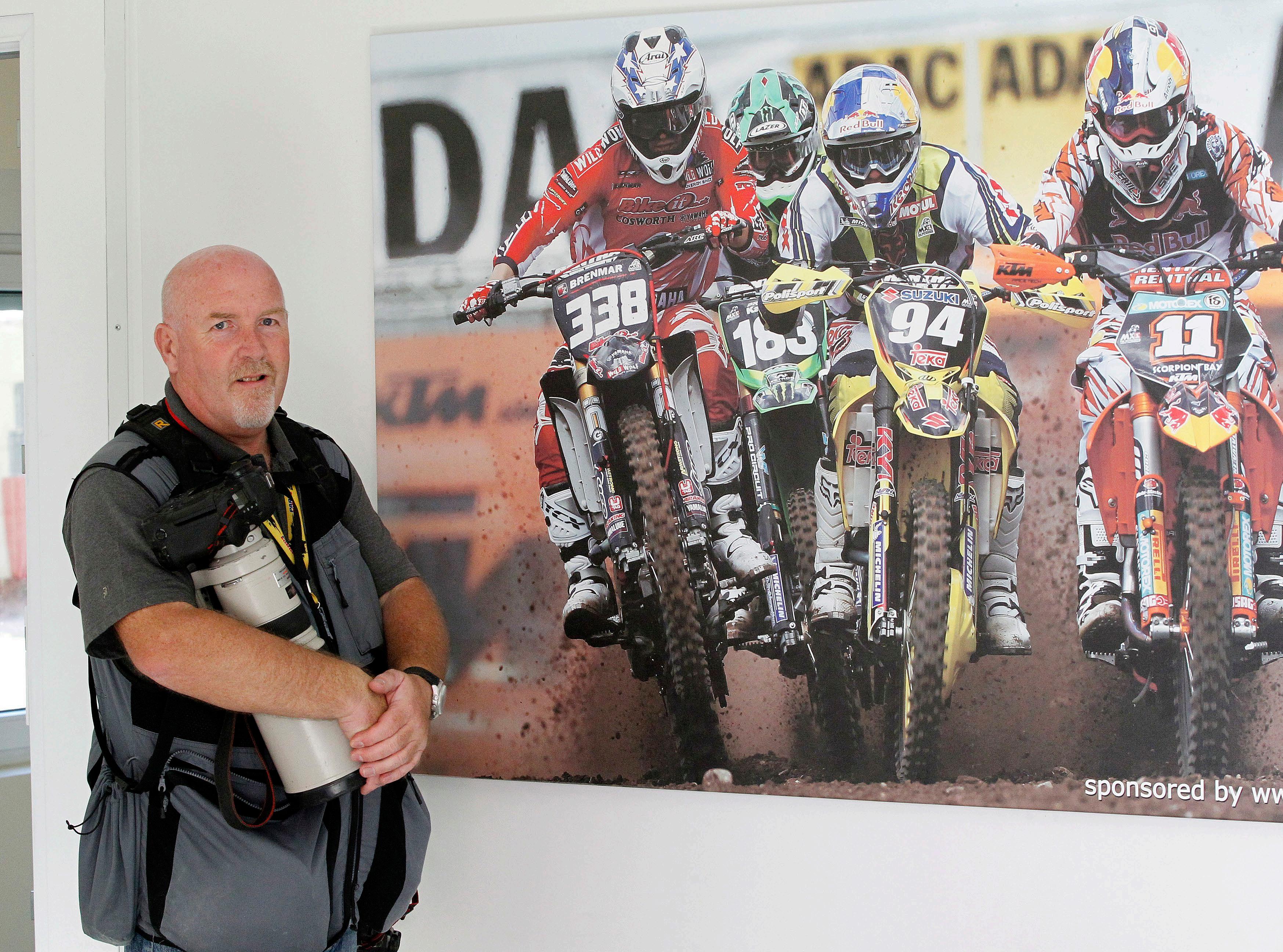
respect them, if they respect me then great. I’m trying to make them look good, and that’s where the job satisfaction comes in. If you write something, you can always end up annoying someone. If someone sees their photo in a magazine, or online now, they’re chuffed to bits. I’m a good guy! The writers are the bad guys [Thanks Ray!], the photographers are the good guys. Most people appreciate photographs, especially now, I put as much effort in now, to do a front cover or a poster, as for somebody that wants to post it on social media. I work just as hard, I haven’t really changed. A smart phone is so good, it’s a threat for everybody, and it depreciates the value of a photographer. The beauty of photography is that you can shoot it in the camera with the right focus, the right settings, and make a difference.”
So as he winds down in his last season of covering MXGP, although he’s not the kind of guy to make a big statement, how does one of the best in the business look back on his working life? “Listen, I’ve enjoyed it for all this time, otherwise I wouldn’t have continued, I would have had to get a real job. People ask
me, ‘What’s your real job?’, and I say ‘Oh I take motorbike photographs,’ and they say ‘You don’t work?!’ People don’t see that it’s 120-130 flights a year, more hours in the air than a pilot sometimes, that’s the job and the work part of it. I appreciated going to these places, seeing a lot, and I’ve still had a family and a good life.”
From someone who started out in what some call ‘the golden age’ of the sport, to see Ray Archer’s continued passion for Motocross burn on until 2025 is a refreshing sight, and he will be sorely missed in the media centres and trackside areas of the MXGP World Championship when he does finally hang up his media bib. Few people in the world would have seen the history of Motocross evolve through the last four decades as much as this man, and to be good enough at what you do to stay at the top for so long is surely a life goal all of its own.
Now then… how can one get in and plunder those archives…?

FROM CHAMPIONSHIP BATTLES ON THE WORLD STAGE TO LIFE BEYOND THE STARTING GATE, MARVIN MUSQUIN HAS EMBRACED A NEW CHAPTER AFTER HIS INCREDIBLE MOTOCROSS CAREER. IN THIS EXCLUSIVE INTERVIEW, LISA LEYLAND SITS DOWN WITH THE FRENCH LEGEND TO TALK ABOUT HIS TRANSITION AWAY FROM FULL-TIME RACING, WHAT KEEPS HIM BUSY NOW, AND HOW LIFE IN THE USA IS SHAPING HIS NEXT ADVENTURE.


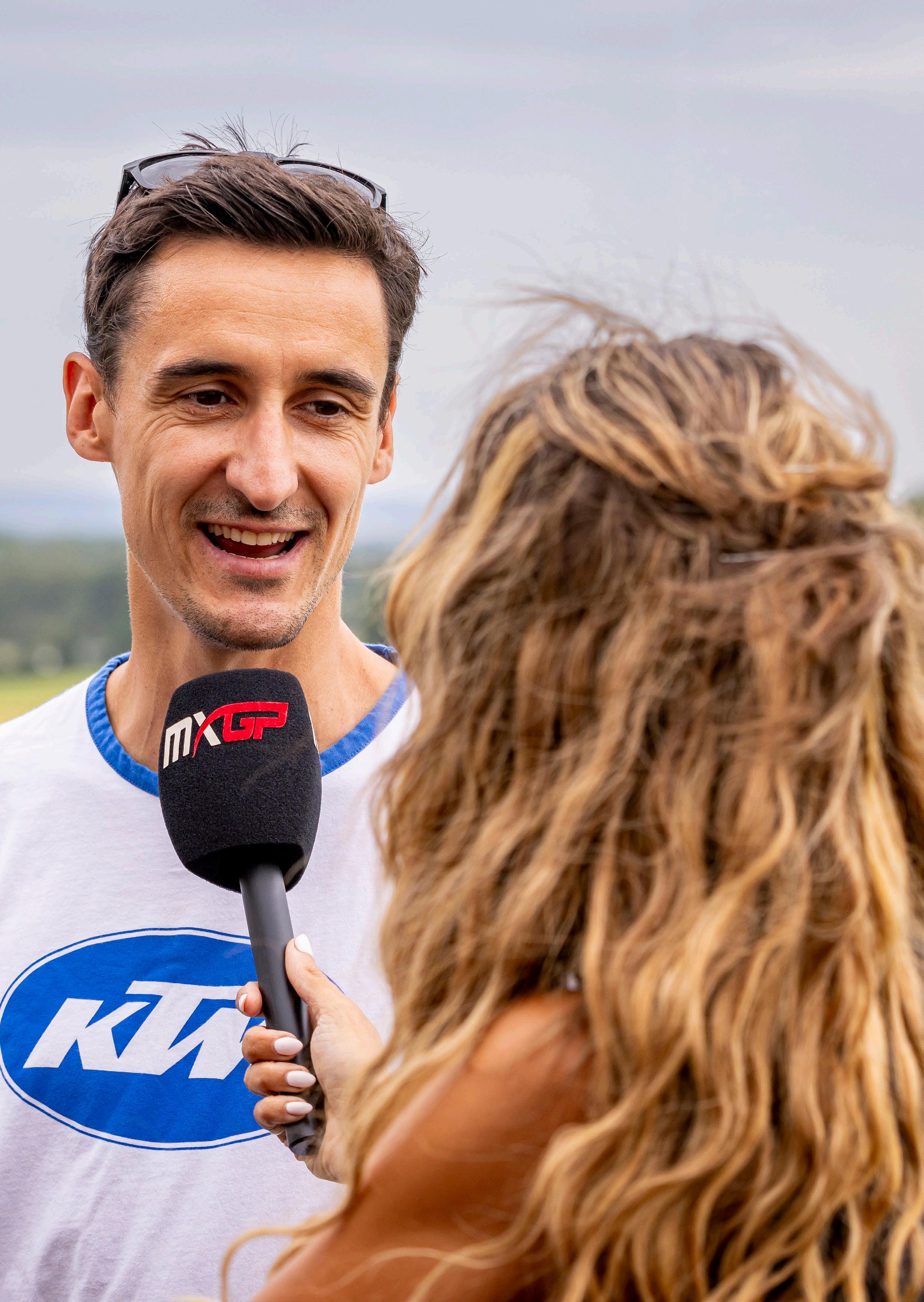
TODAY, PIT BEIRER IS KNOWN FOR HIS ROLE AS MOTORPSORTS DIRECTOR AT KTM, BUT BEFORE THAT, THE GERMAN WAS A FIERCE COMPETITOR IN THE FIM MOTOCROSS WORLD CHAMPIONSHIP, RACING THE LIKES OF STEFAN EVERTS AND GREG ALBERTIJN.
During his brief time in the 125cc class, Beirer placed 5th in the 1994 season, before heading into the premier 250cc class where he excelled even further. Third overall in ’97 and ’98, Beirer was one of the favourites heading into the ’99 season, having moved from Honda to Kawasaki, and it’s Pit Beirer’s Kawasaki SR250 which we will feature in this issue of MXGP Magazine.
When Pit Beirer moved from the 125cc class at the end of the 1994 season, he also switched brands from Suzuki to Honda, but after four years in red, and back-to-back bronze medals, it was time for another spring clean. Sebastien Tortelli had won the 1998 world championship racing for Jan de Groot’s JHK Kawasaki team, where he edged Stefan Everts to the world title in one of the most spectacular and dramatic season-fi nale’s ever, and when the Frenchman left for the USA at the end of the year, it was Beirer who replaced him at the Dutch-based team. By now the team was known as Winfi eld Kawasaki and Beirer would be teamed up with the Belgian, Marnicq Bervoets,
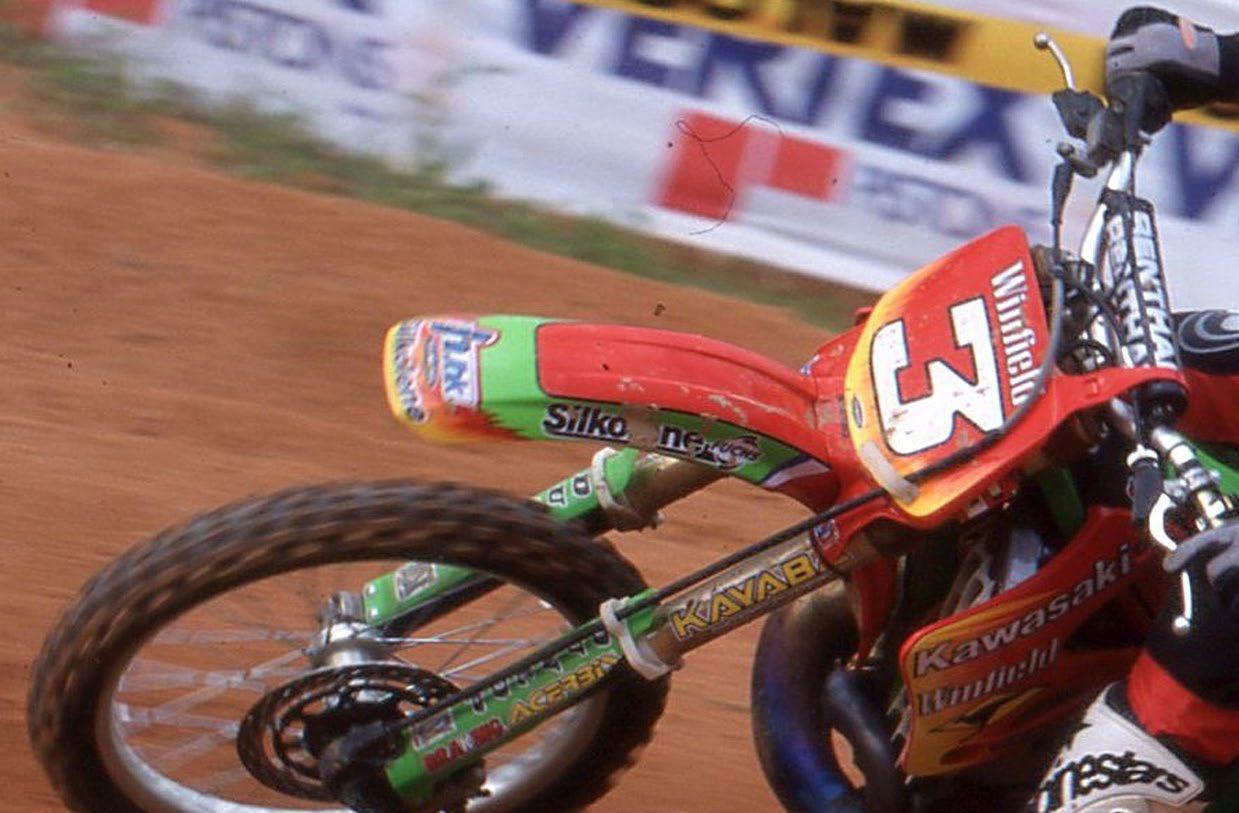
who had finished 2nd overall from ’95 to ’97 to Everts, and so on paper, this pairing would be one of the strongest to take to the grid.
Switching brands is never easy and often comes with new challenges; different chassis, ergonomics, engine and power characteristics and handling are all things that might make or break your new adventure. Winfield Kawasaki’s Chief Mechanic at the time was Paul Trevathan, who by now was a long-term member of the team, who not only remembers the first test with Pit at the end of the ’98 season heading into winter, but also sheds a light on some of the issues that arose by the time they tested again at the start of the season.
‘I think at that time, Honda were still struggling a little bit with the aluminium chassis, getting it right, and they were working flat out at that time to do that, if I remember correctly, and so I think the biggest thing that came across at the time for Pit, was the engine and the stability of the Kawasaki. That was the part that was big time different for him. Jan was the torque monster, he liked to make a torquey bike, like all of the northern European tuners at that time. And that was a big thing that Kawasaki had at that time, especially the ones that Jan built. They had horsepower; don’t get me wrong, but
even the horsepower, if I remember rightly, the max hp lasted about 1500 rpm, so quite a lot for a 2 stroke in those days, and I do remember Pit being like ‘bloody hell, this thing is a monster!’ So, that was what I took from his first impressions; that, and just the stability of it.’
With the first pre-winter tests completed and a resounding success, the team went away and began to prepare the finer details of the engines in order to come out firing on all cylinders, to be ready for the new season. However, there was a slight problem when it came to the next test, and the first of the season, as Paul Trevathan points out:
‘At the first test, we were with the trick KYB stuff (from ’98) that was like the first pressurised system, on the forks especially; it was a work of art and they had shock bladders in it at that time, and of course you’d see that stuff later on. KYB were quite ahead of the game, but their costs were getting crazy, and I think a set of forks, was like $50,000. So, that was massive, for just one set! Around the same time, they’d had a change at KYB, so when Pit came back for the next test at the start of the season, there had been a change in the KYB philosophy and they bought in a completely different designer,
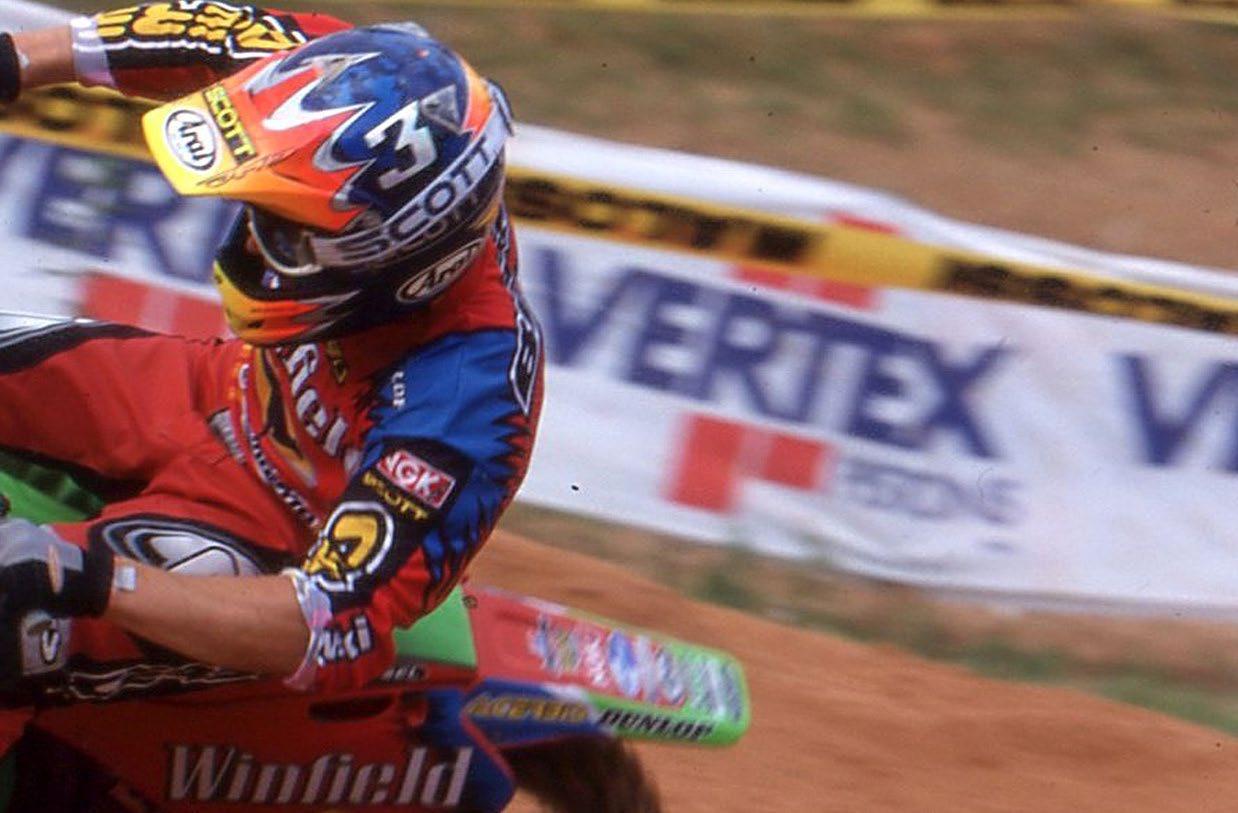
and he made the new front fork, and it was a disaster!’
‘It was a bit of a shocker for all of us at the beginning, and even at one point, I remember Pit even preferring the bloody standard suspension over it. But they (technicians) worked super hard and we got it going and it was pretty much ok. It had a feeling like some kind of hydraulic lock and it would just bounce off all the little braking bumps, acceleration bumps and it was bloody horrible. If you had a big impact, fi rst it would break through this feeling of harshness and then they actually worked quite okay. We were working bloody hard with them to try to get it sorted, but, we got it to work in the end and then it was actually pretty good. I still don’t believe it was good as the stuff we had the year
BEIRER WAS ONE OF THE FAVOURITES HEADING INTO THE ’99 SEASON

before, but it started to work, at least.’
As for the rest of the bike, it was about as factory as you could get at the end of the nineties, and boasted an array of trickery, as you can imagine, although, the chassis and swingarm were perhaps the only stock parts, but as Trevathan recalls, there was a way to bolster things up in order to offer up more rigidity:
‘That stuff was all pretty standard; we took a standard chassis and we just beefed it up with struts to get it quite a bit stiffer in the upright area and behind the headstock, and the top shock mount also. They bought out kits where we could just weld them to the chassis, so I would say it was a highly modifi ed STD chassis. It was more about the rigidity, a lot of struts, a lot of inserted welded plates on the uprights on the inside and things like that.’
The suspension was factory KYB front and rear, with factory pull rods. The cylinder and cylinder head were factory which also incorporated a factory piston and con-rod. The gearbox was factory with factory ratios, along with factorybalanced crankshafts.
The ignition was factory along with an option from Mitsubishi, with the carburettor of choice being Keihin, where they would fl it between 38 and 40mm, depending on conditions. Wheels and hubs were factory, including the spokes, with the hubs being aluminium. There were still some magnesium hubs ‘laying around’ but with

no way of knowing the mileage, the reliability and safety were called into question. But when the ally ones arrived from Japan anodised, they certainly looked the part. Brakes were factory Nissin with the front brake incorporating a Kevlar brake line, with larger discs at both ends, equipped with magnesium calliper holders.
With race-duration still at 45 minutes back then, bigger fuel tanks were the norm, but instead of opting for a beefed-up aluminium tank, Jan knew a guy who specialised in plastic fabrication and plastic welding, which led to a cheeky design where the fuel tank extended under the seat, creating a lower centre of gravity. There were bigger radiators, magnesium
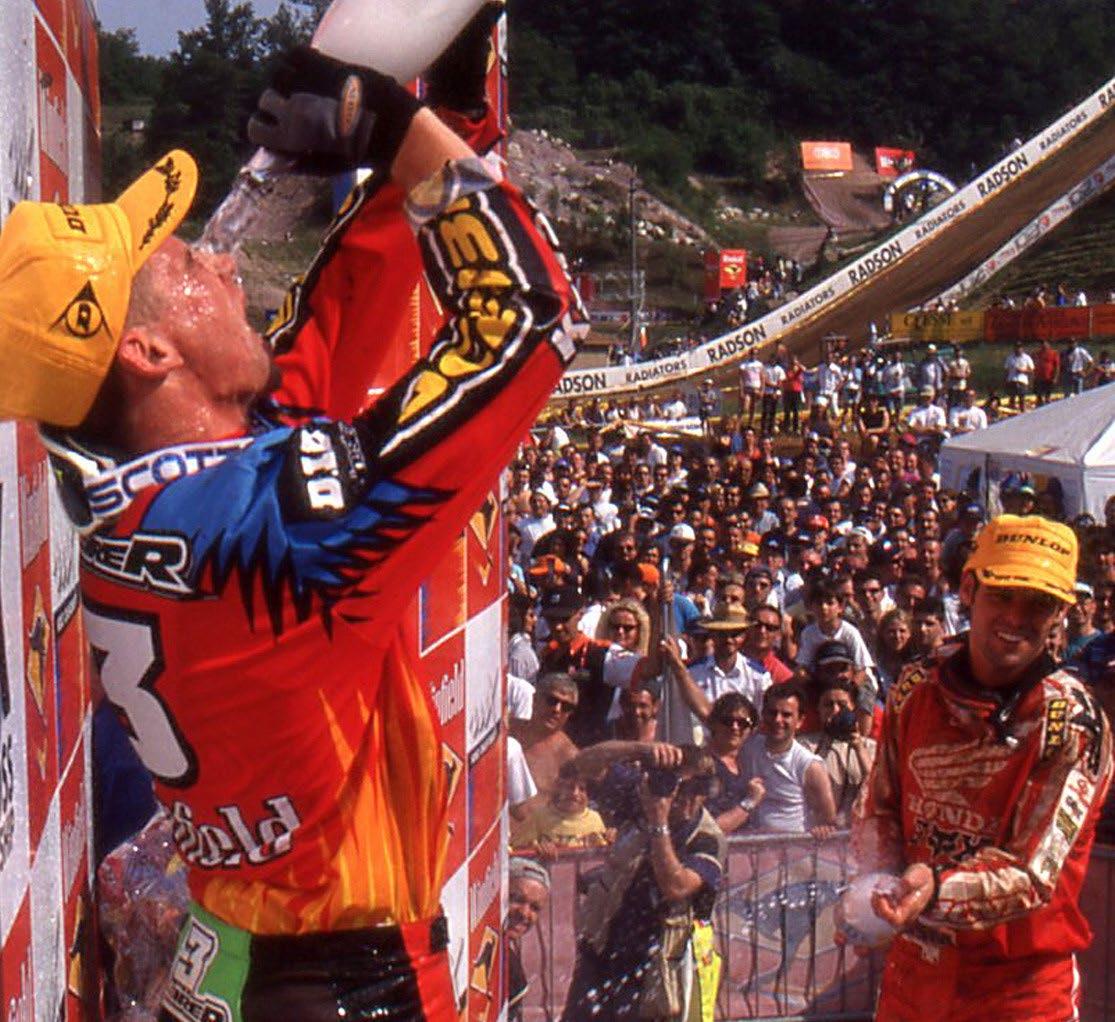
external covers, magnesium triple clamps and larger footpegs as well.
There were two very notable non-factory performance parts, and they were the exhaust and the intake. Northern Europe had a wealth of tuners and pipe manufacturers, and SPES from Belgium was the preferred pipe supplier, and with good reason, something which Trevathan remembers all too well:
‘Exhausts were SPES, and Pierrot Slegers was a legend. There was a story where, I think going back to ’95, when Kawasaki were pushing really hard to still use their own exhausts, and we sent over the SPES one as a sample of that to them, and I think 2 months
later they came up with an exhaust. We went testing and actually it was an international race, and Stefan Everts quite liked it and he actually rode with it, and Tallon Vohland at the time, didn’t. So, on Monday morning Pierrot phoned me and said ‘get in the van and get the bike down to me’. So, we shot down to see him and 2 hours later, he had something better again. We sent the Dyno curves over to Japan, and they said ‘PWAH, please send the exhaust,’ and eventually, we got the fax back saying ‘okay, Mr. Slechten can build the exhausts for Kawasaki.’
As for the intake, Jan had a very good relationship with Boyesen, and so this
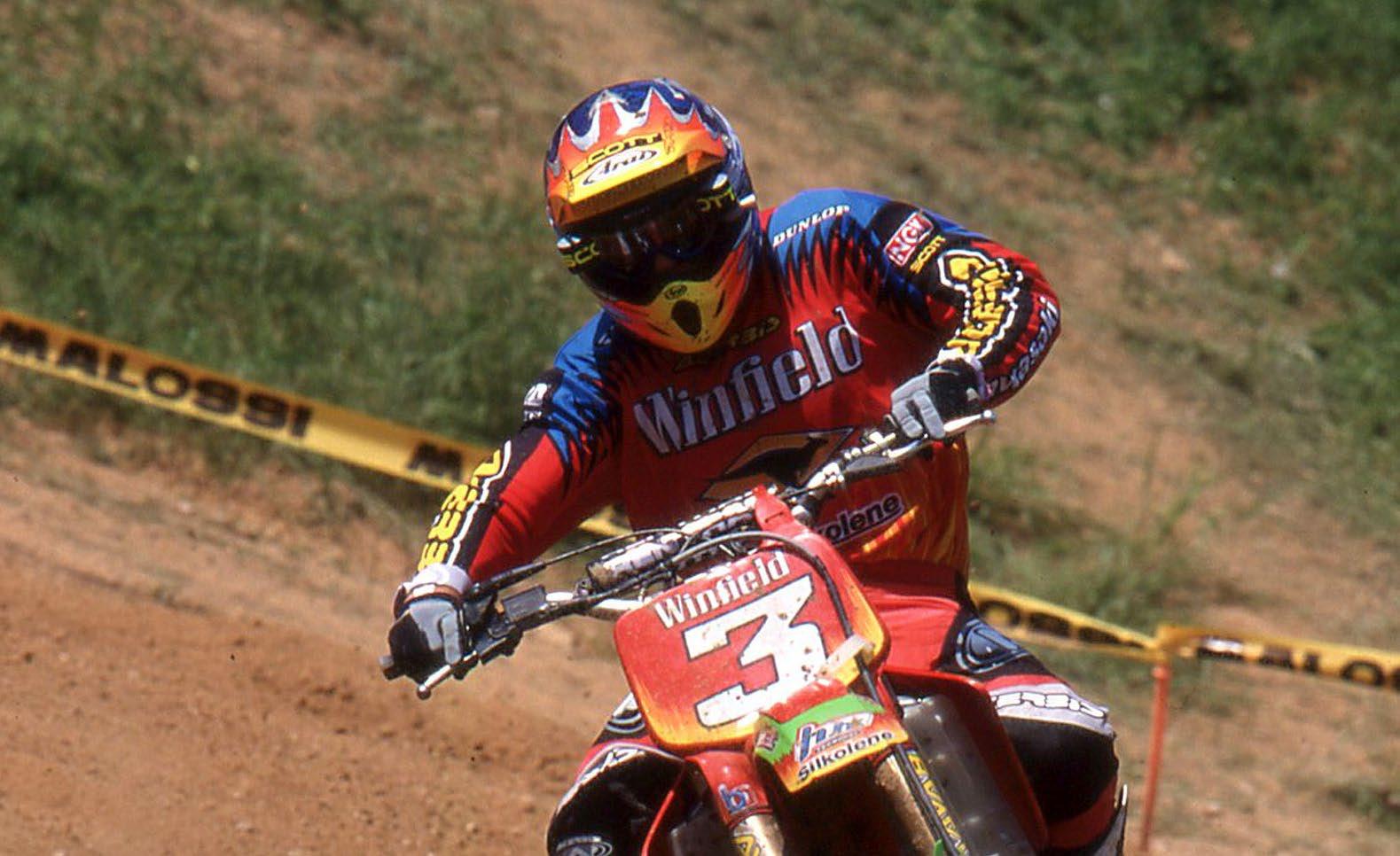
relationship continued to prosper out of good results and loyalty.
By now, Pit was fully immersed in this Kawasaki adventure and even moved to Belgium to be closer to the team. Whilst the season got off to a sluggish start for the German, by the time we’d reached rounds six, seven and eight, Beirer and his teammate Bervoets had emerged as the two title favourites.
That all changed when Marnicq fell in the first turn in France and badly sliced his palm, an injury which ruled him for a couple of rounds, ending his chance of another title. With Bervoets on the side lines, Beirer began to build his lead, and for now, the world title looked like it might be heading back to Germany.
However, a DNF in the first race in Czech Republic at Jinin, tightened things up and suddenly, there was a new contender in the form of Frederic Bolley and Honda. After 14 rounds, Beirer’s lead had been slashed to 6 points, and with the next GP heading to Germany, Beirer potentially sensed an opportunity to gain that home advantage and show his fans that he was still in this title race, and by doing so, would also show his main rival he still meant business.
Whilst challenging for the lead in the first race, Beirer crashed out hard, and his bike was too bent and destroyed to continue, and by the time the GP was done, there was a new championship leader. Bolley! The final round was in America, and history tells us that the Frenchman came away with the world title.
Fast forward to 2025 and Paul Trevathan is the crew chief for Pedro Acosta at Red Bull KTM Racing in MotoGP, and the Kiwi remembers a conversation in the hospitality at a race ‘where Pit started talking about those years, and the mental thing for him, is Gaildorf. That was the disaster, where he pins it down. Doesn’t remember all the other little things, but that one, he remembers as being the disaster, where it all went away.’
Devastating for Beirer, to lose the championship in the final two rounds after doing everything so right before then.
Kawasaki had won its first world title in 1995 with Stefan Everts, with Sebastien Tortelli adding the 125cc title, in 1996 and a 250cc title in 1998, and in 1999, Winfield Kawasaki had two riders fighting to become back-toback winners for Kawasaki. And whilst that didn’t happen, there is no doubt that the 1999 Kawasaki SR250 was a bike that could, or maybe even should have been a world beater.
Photos: Pascal Haudiquert

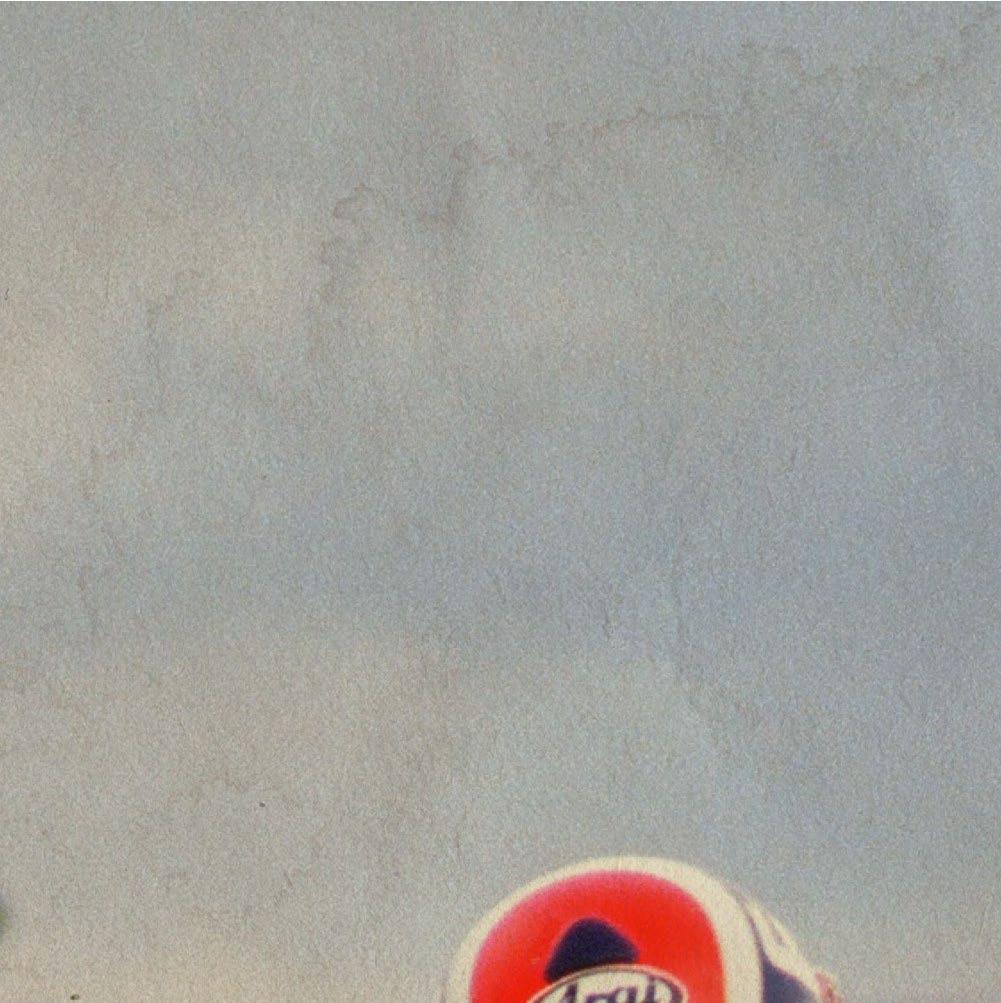
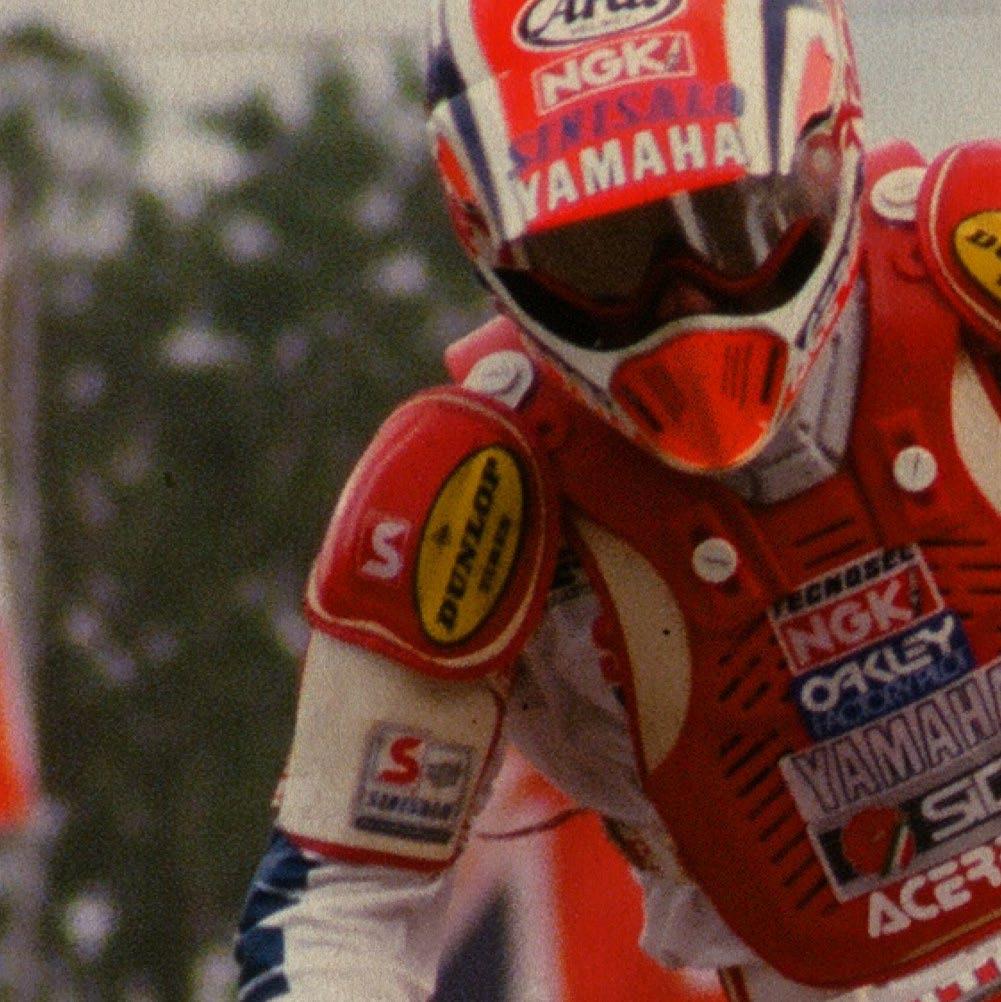
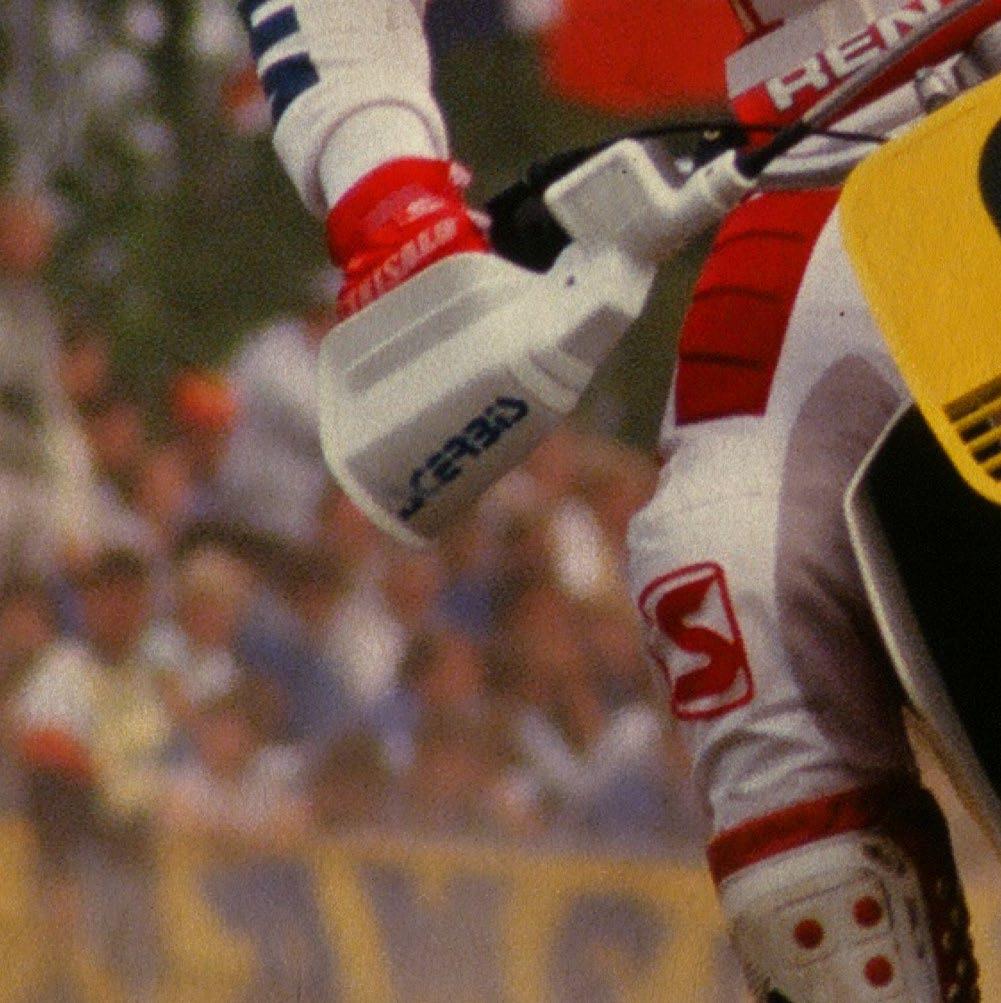

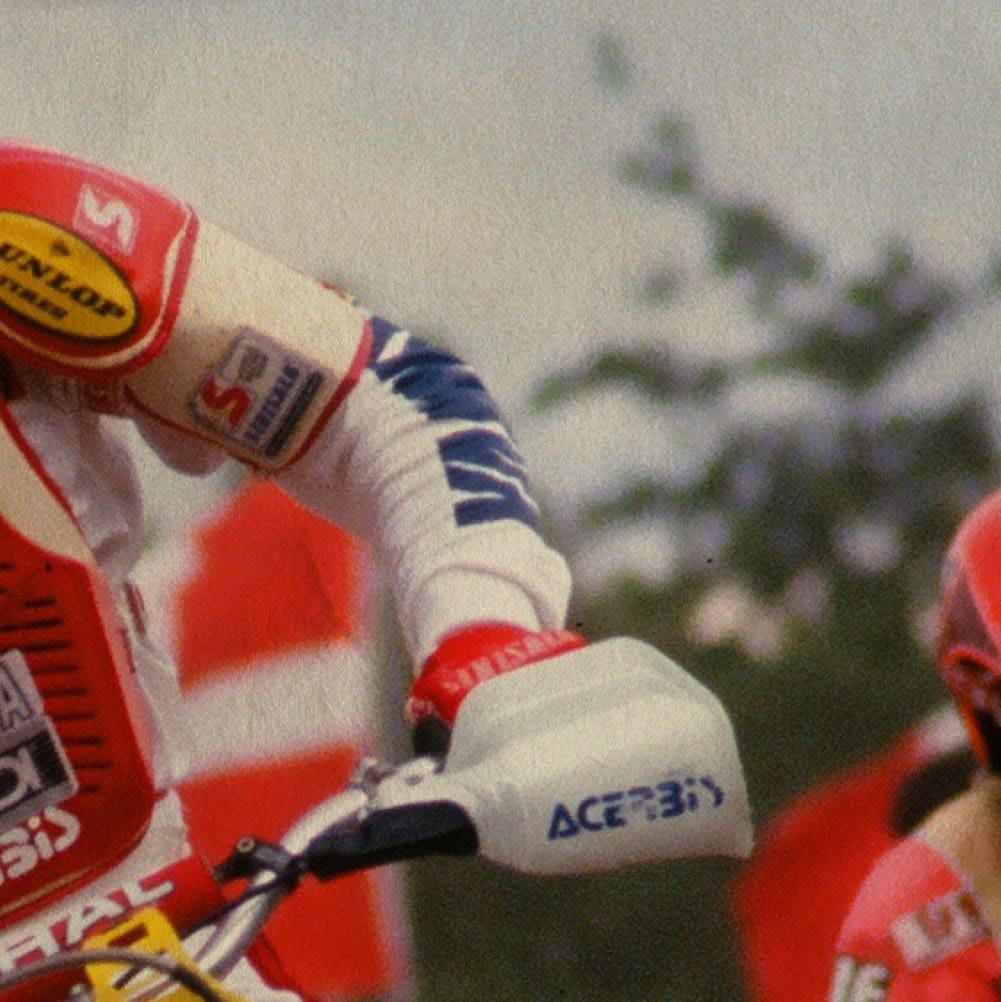
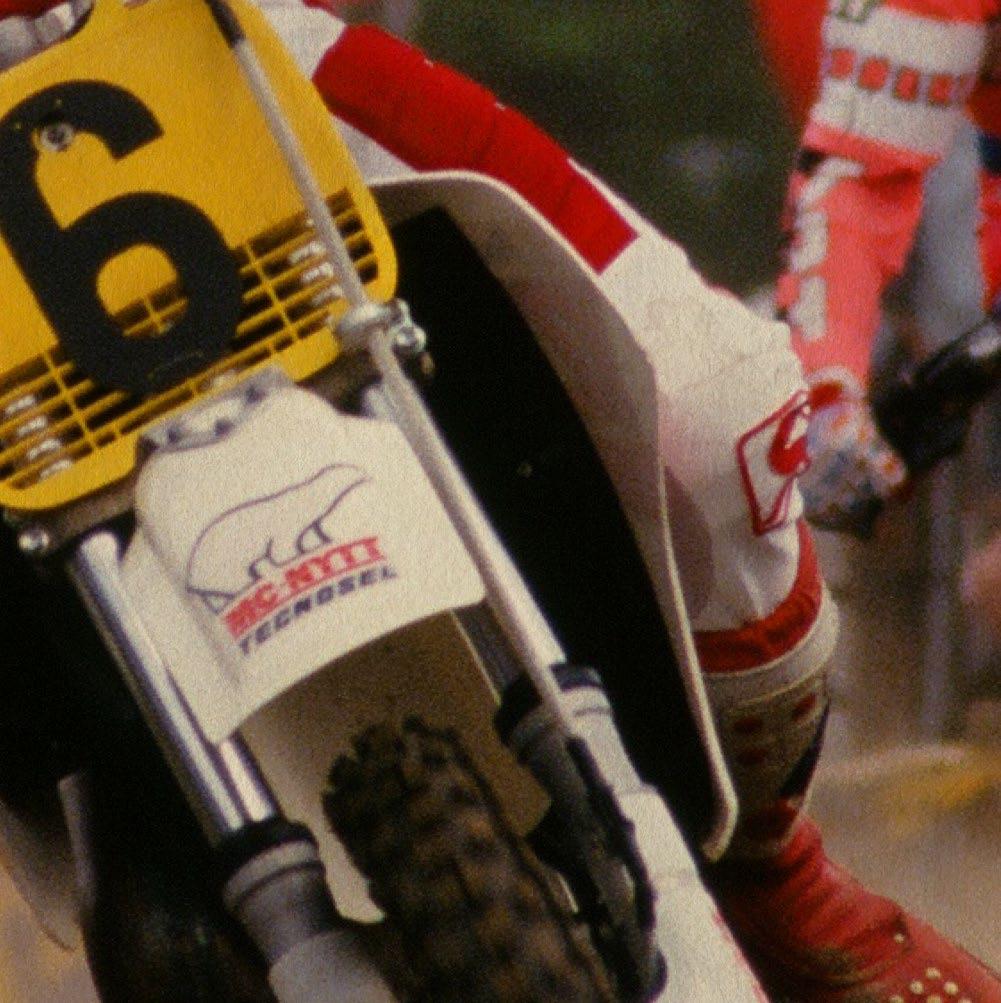
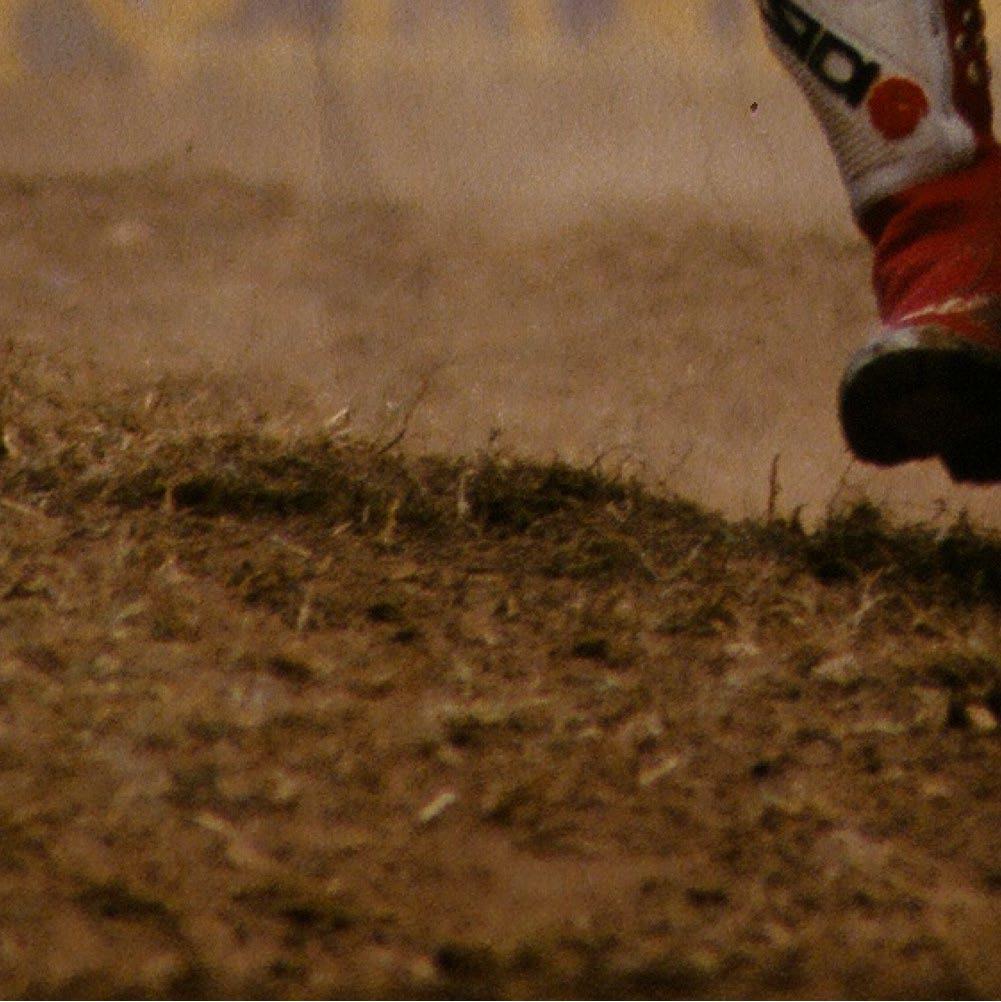
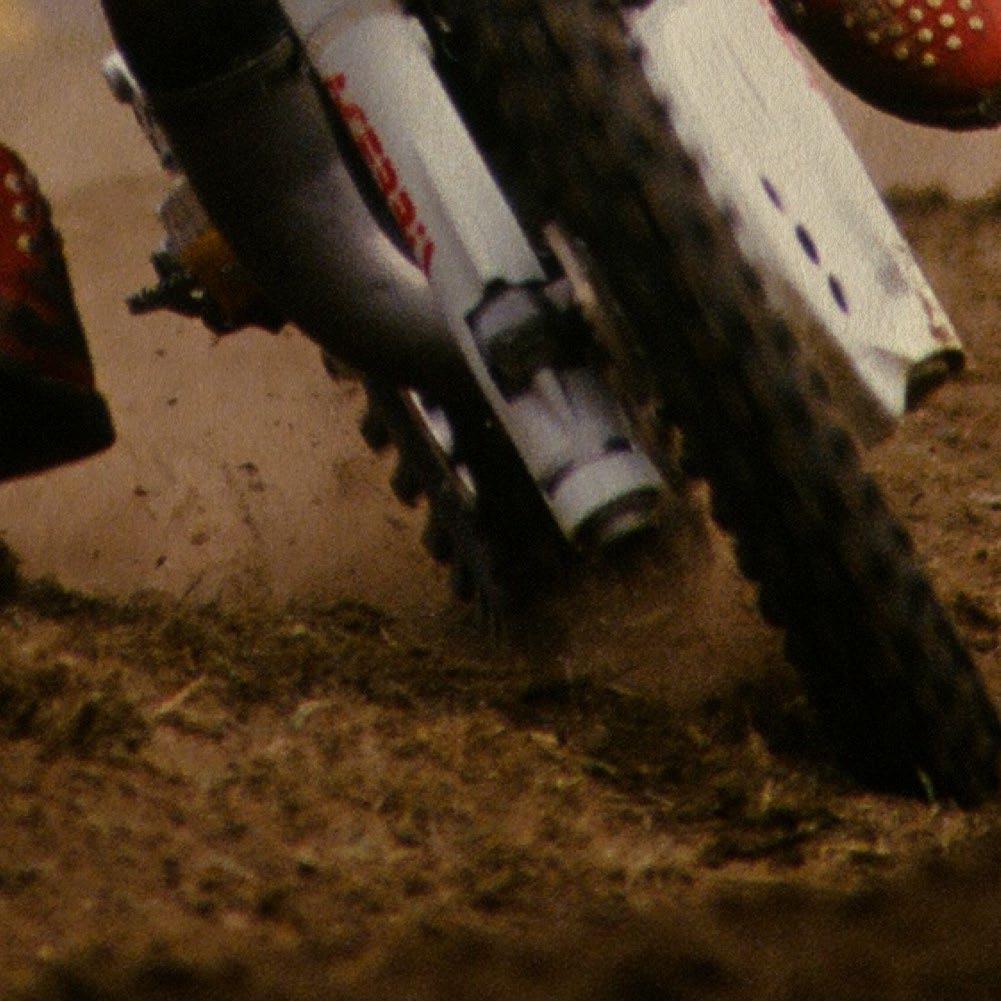


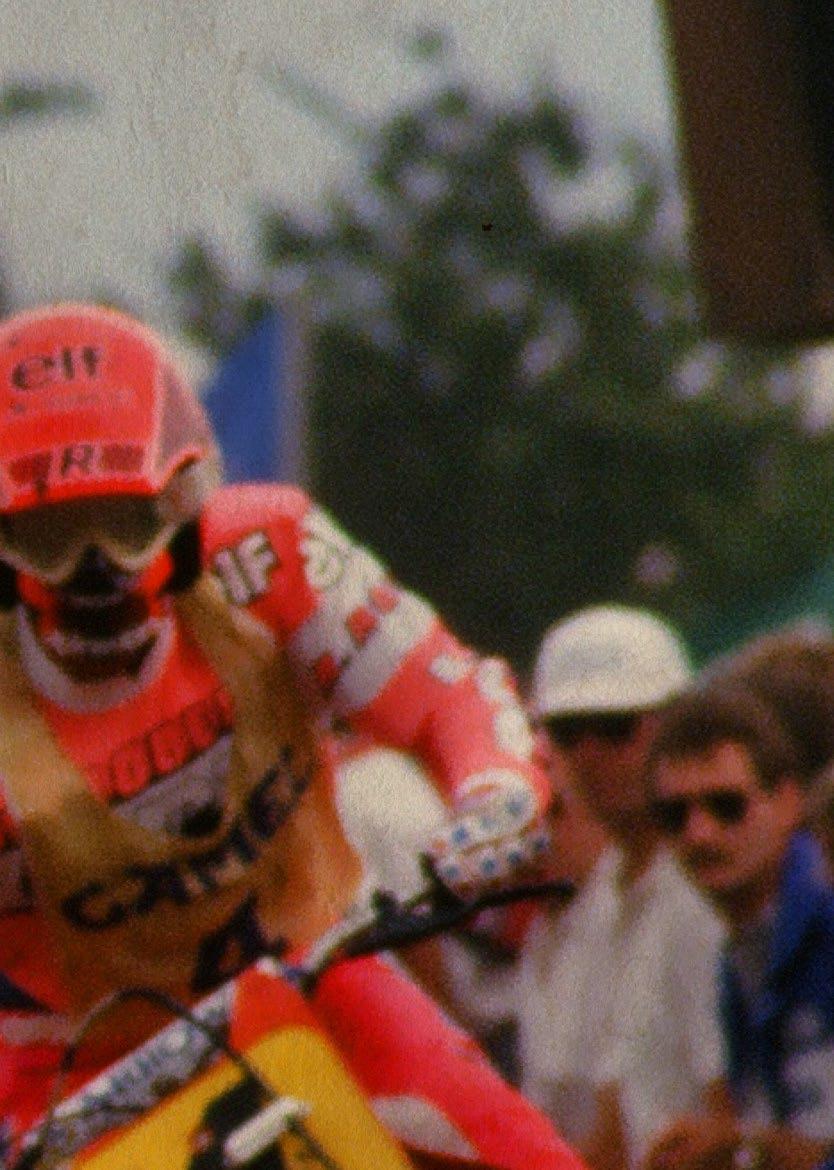
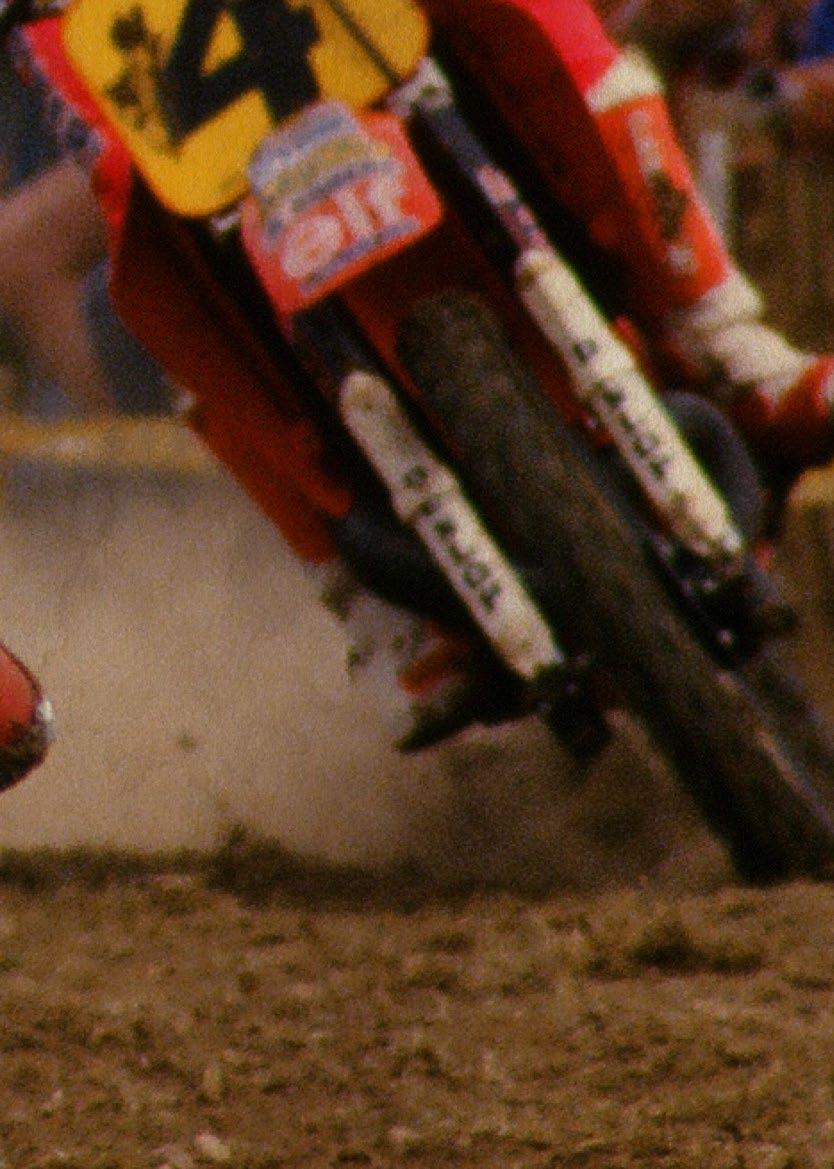

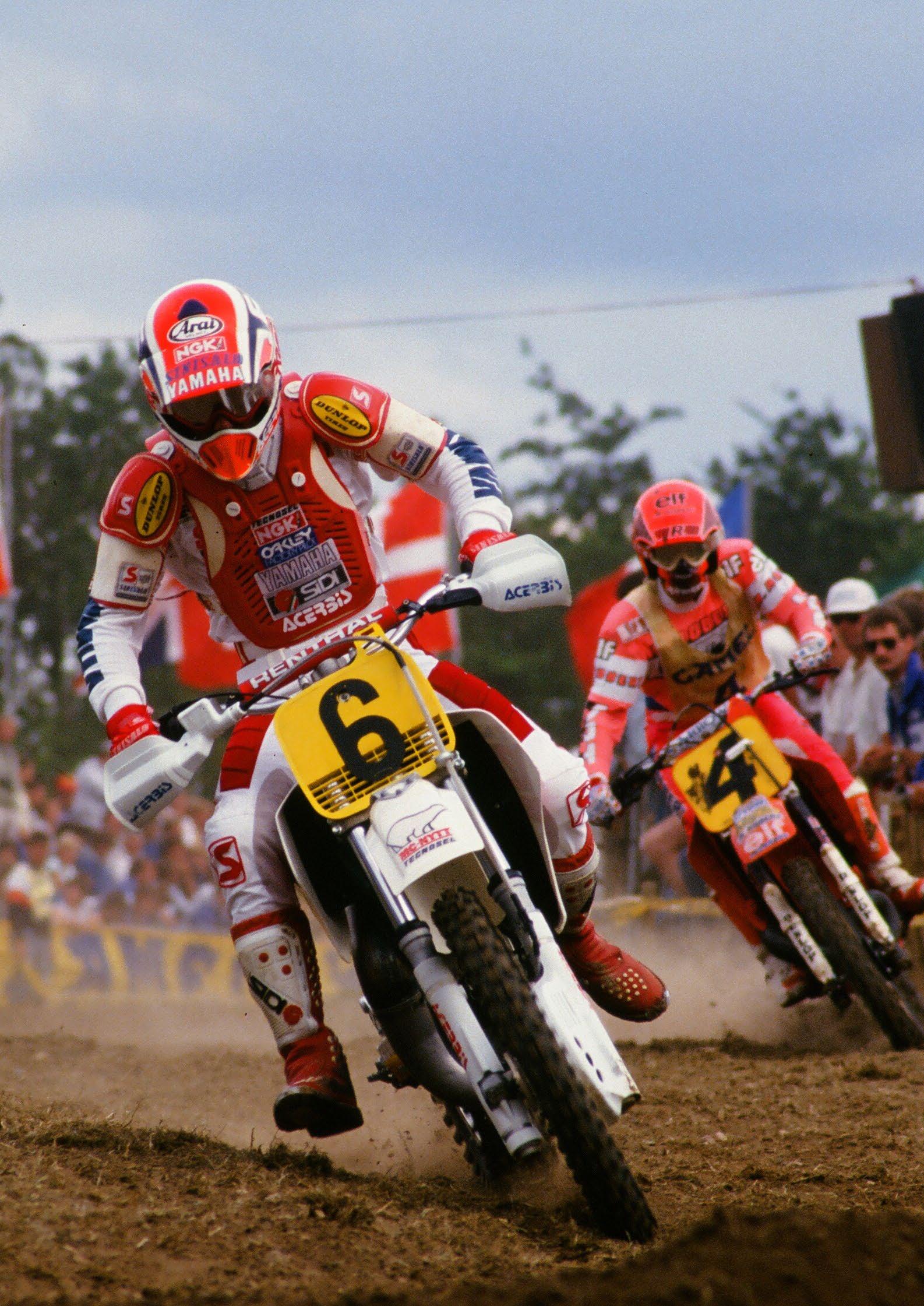


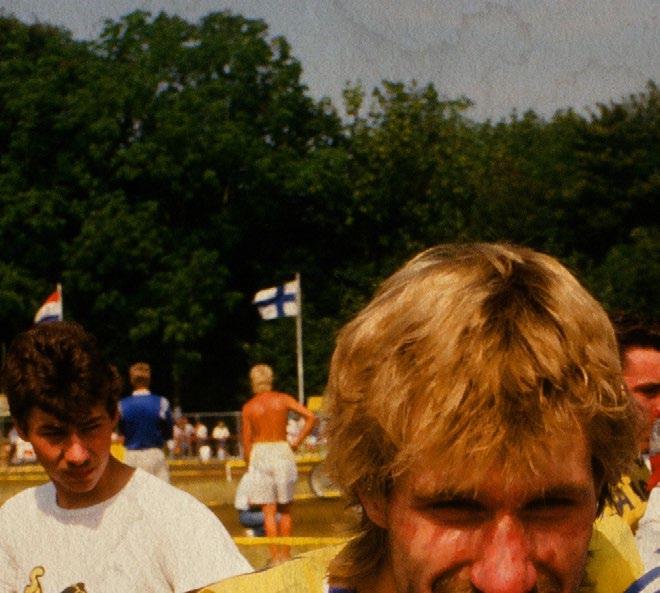
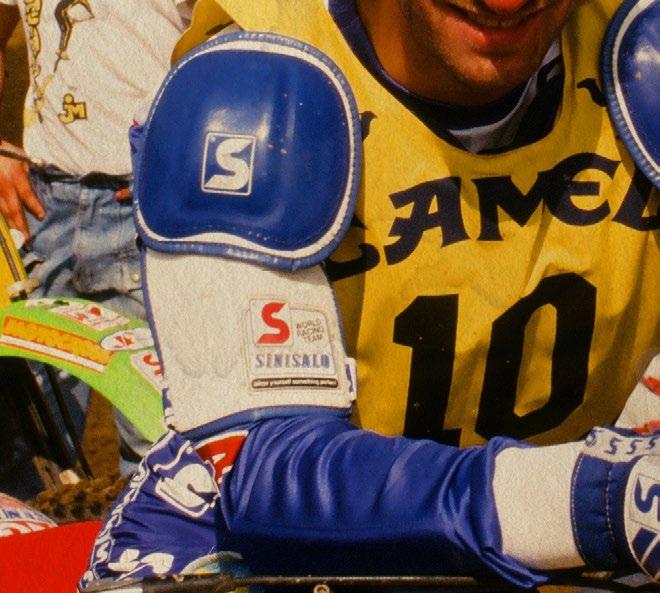


first time the Trophy of Nations with the Swedish team.






Born on 20th February 1964 at Malmo, Leif Persson was one of the latest Swedish talents to get a factory ride in the 500cc World Championship. He did all his career in this class and claimed his first national when he was only sixteen in the 500cc Junior Swedish series. Two years later when he turned eighteen, he entered for the first time some World Championship rounds but could only score one point during the Finish round of the series at Ruskeasanta. It was again on that track in Finland that he got his best result

SWEDISH RIDERS HAVE BEEN NUMEROUS TO RACE THE MOTOCROSS WORLD CHAMPIONSHIPS IN THE 80’S, AND LEIF PERSSON WAS ONE OF THE YOUNG PROSPECTS TO WALK IN THE FOOTSTEPS OF HAKAN CARLQVIST (500CC WORLD CHAMPION IN 1983). HE NEVER WON GP’S BUT SCORED SEVERAL PODIUMS IN THE 500CC CLASS AND STOOD ON crashed,
Riding a factory Husqvarna in 1984 he ended the season in the top 10 with a ninth position, after a consistent season as he scored points in eighteen races with fifteen top ten results. He also enjoyed the podium celebration at the Motocross of Nations with the Swedish team, third behind Team USA and Belgium, at one of his favourite tracks, Ruskeasanta in Finland. Thanks to these good results he signed with Yamaha for 1985, but he didn’t end the season so well with a big crash at the Cup de l’Avenir in Belgium, and later he broke his femur and collarbone during a sandy Dutch race. While practicing at the beginning of the ‘85 season he unfortunately crashed, broke again his collarbone and missed the first GP’s. He came back slowly and ended the season with a second overall at the Swiss and
final round of the series. he THE PODIUM OF THE 1984 MOTOCROSS OF NATIONS.


of the 1983 season, with a sixth position in one moto; scoring points in several occasions on his Husqvarna, he ended the championship in eighteenth position and had the opportunity to race for the
In 1986 he finally won for the first time a race during the Swedish GP at Vimmerby; it was his second GP podium after Austria, and after scoring points in twenty heats, he finished the season sixth of the championship. In 1987 Yamaha launched the famous YZM 500, a water cool prototype and Leif started the season with a prestigious win at the famous winter Enduro of Le Touquet; for the first time in the history of the race a newcomer beats all his rivals! In the World Championship he won a race for the second time in his career during the Swedish GP at Kristianstad, ending the event in second position behind Jacky Martens. Sixth in the final classification and Swedish champion for the third season in a row, he had to find another ride at the end of the year as Yamaha retired officially from the 500cc class.



He started the 1988 season on a KTM but he didn’t get great results and finally switched to Honda at mid-season with the support of a German shop. It didn’t really help him to get better results, even if he scored points in five of the last ten motos. 1989 would be the last season where he claimed some top results; in the top ten at eleven of


the first twelve races, he missed a couple of GP’s due to an injury but came back strongly with a third position at the final round of the championship at Wohlen, Switzerland. Eleventh in the standings he did a few GP’s in 1990 before retiring from


500 JUNIOR SWEDISH CHAMPION



the World Championship; he then remained active in the Swedish championship until

6TH IN THE 500 SWEDISH CHAMPIONSHIP








Text & photos: Pascal Haudiquert
1982: 42ND IN THE 500 WORLD CHAMPIONSHIP (HUSQVARNA)
: 18TH IN THE 500 WORLD CHAMPIONSHIP (HUSQVARNA)

4TH WITH TEAM SWEDEN AT THE 250 TROPHY OF NATIONS (SVEREPEC, CZECHOSLOVAKIA)
: 9TH IN THE 500 WORLD CHAMPIONSHIP (HUSQVARNA
2ND IN THE 500 SWEDISH CHAMPIONSHIP
: 9TH IN THE 500 WORLD CHAMPIONSHIP (YAMAHA)
500 SWEDEN CHAMPION
: 6TH IN THE 500 WORLD CHAMPIONSHIP (YAMAHA)
500 SWEDEN CHAMPION
500 SWEDEN CHAMPION


3RD WITH TEAM SWEDEN AT THE 500 MOTOCROSS OF NATIONS (RUSKEASANTA, FINLAND)
: 6TH IN THE 500 WORLD CHAMPIONSHIP (YAMAHA)
500 SWEDEN CHAMPION
WINNER OF LE TOUQUET ENDUROPALE
: 17TH IN THE 500 WORLD CHAMPIONSHIP (KTM)
: 11TH IN THE 500 WORLD CHAMPIONSHIP (HONDA)
: 20TH IN THE 500 WORLD CHAMPIONSHIP (HONDA) in 1993. CHAMPION






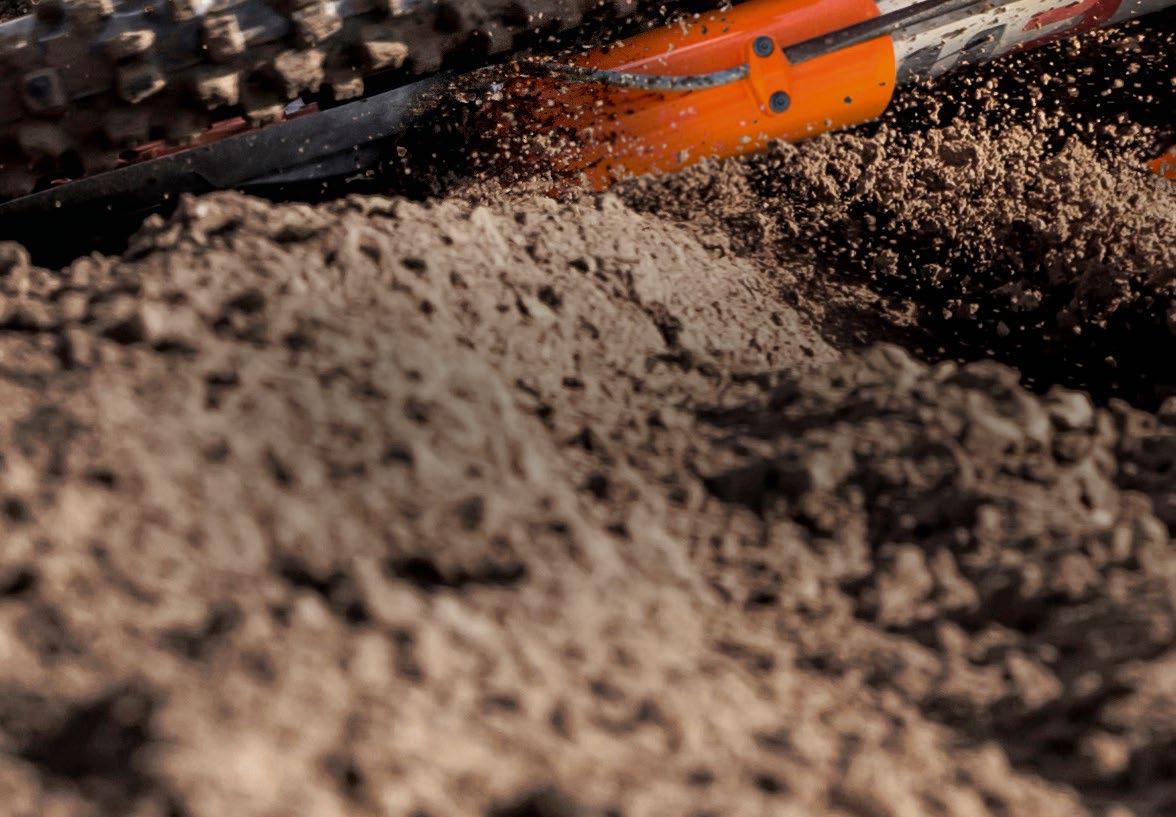
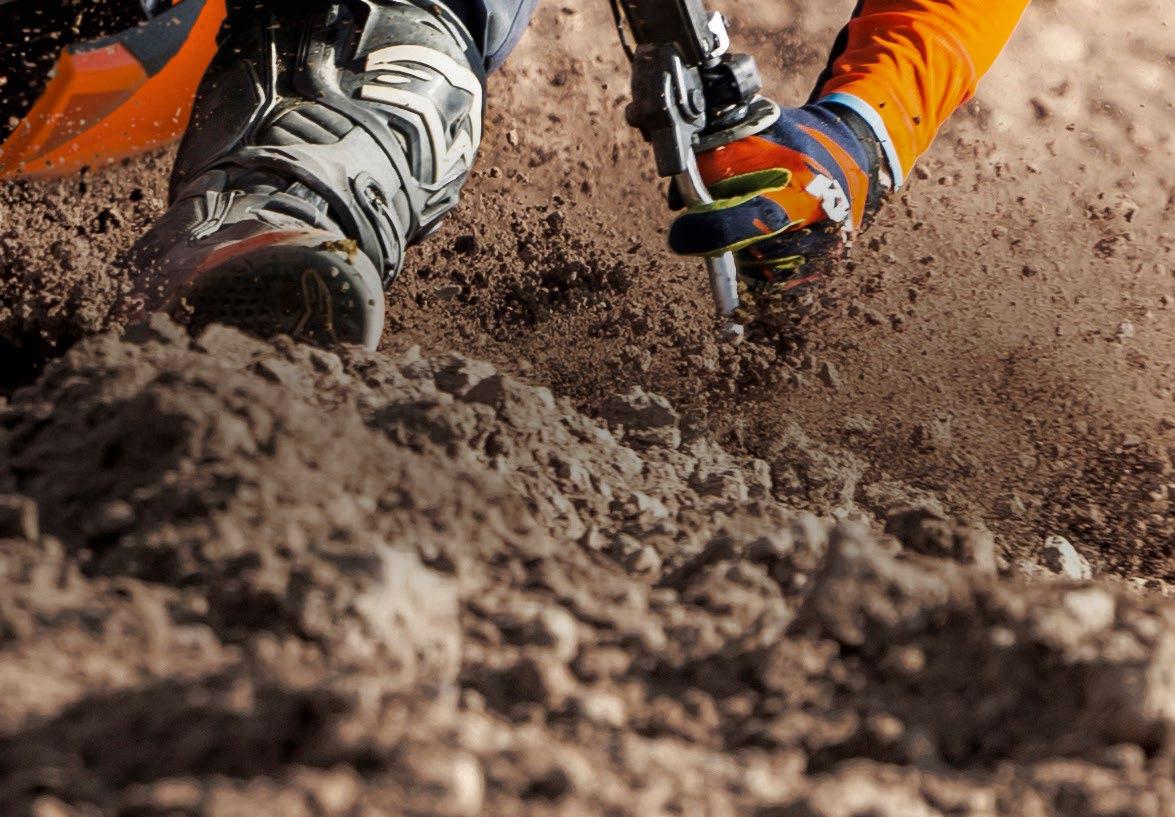


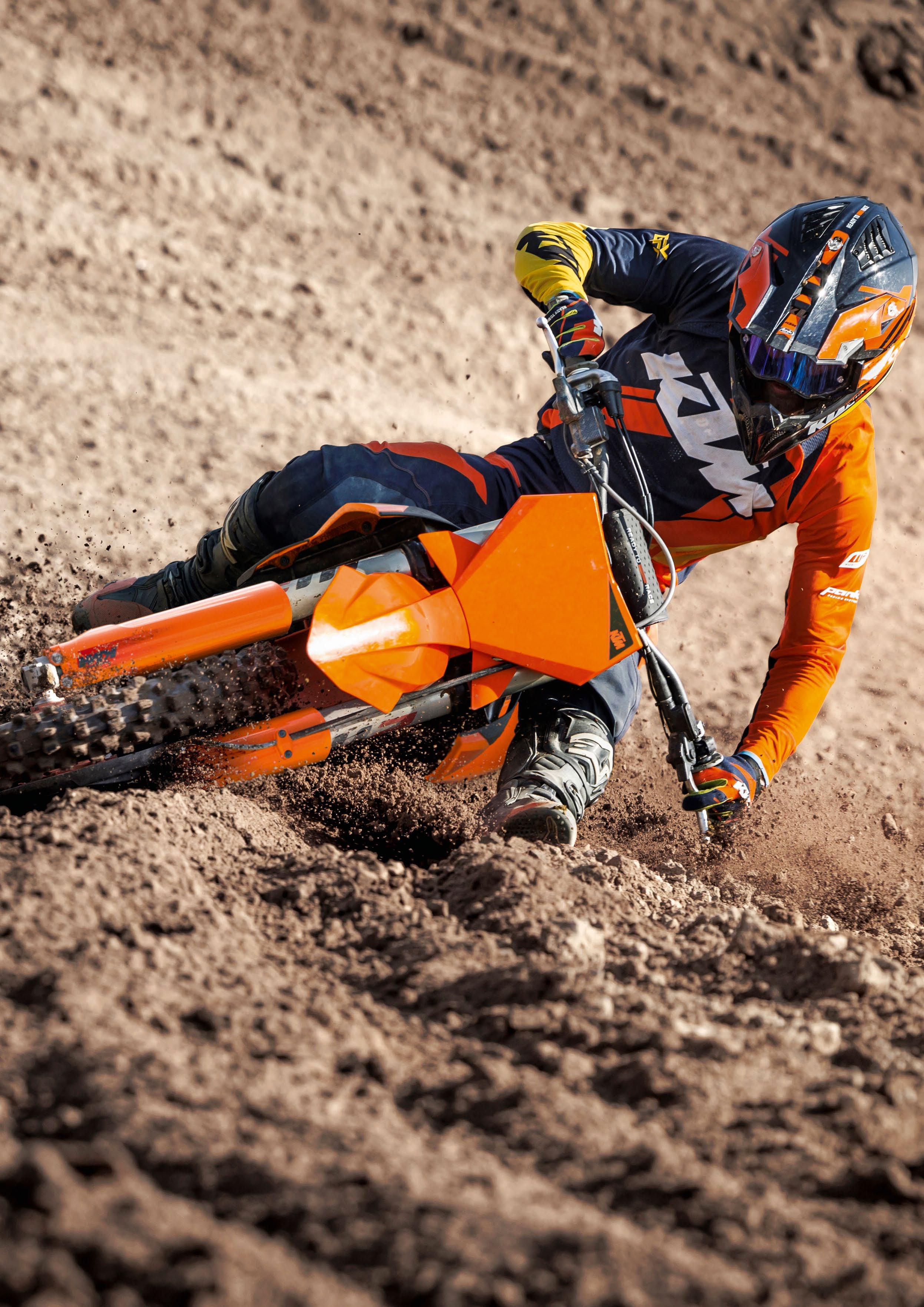
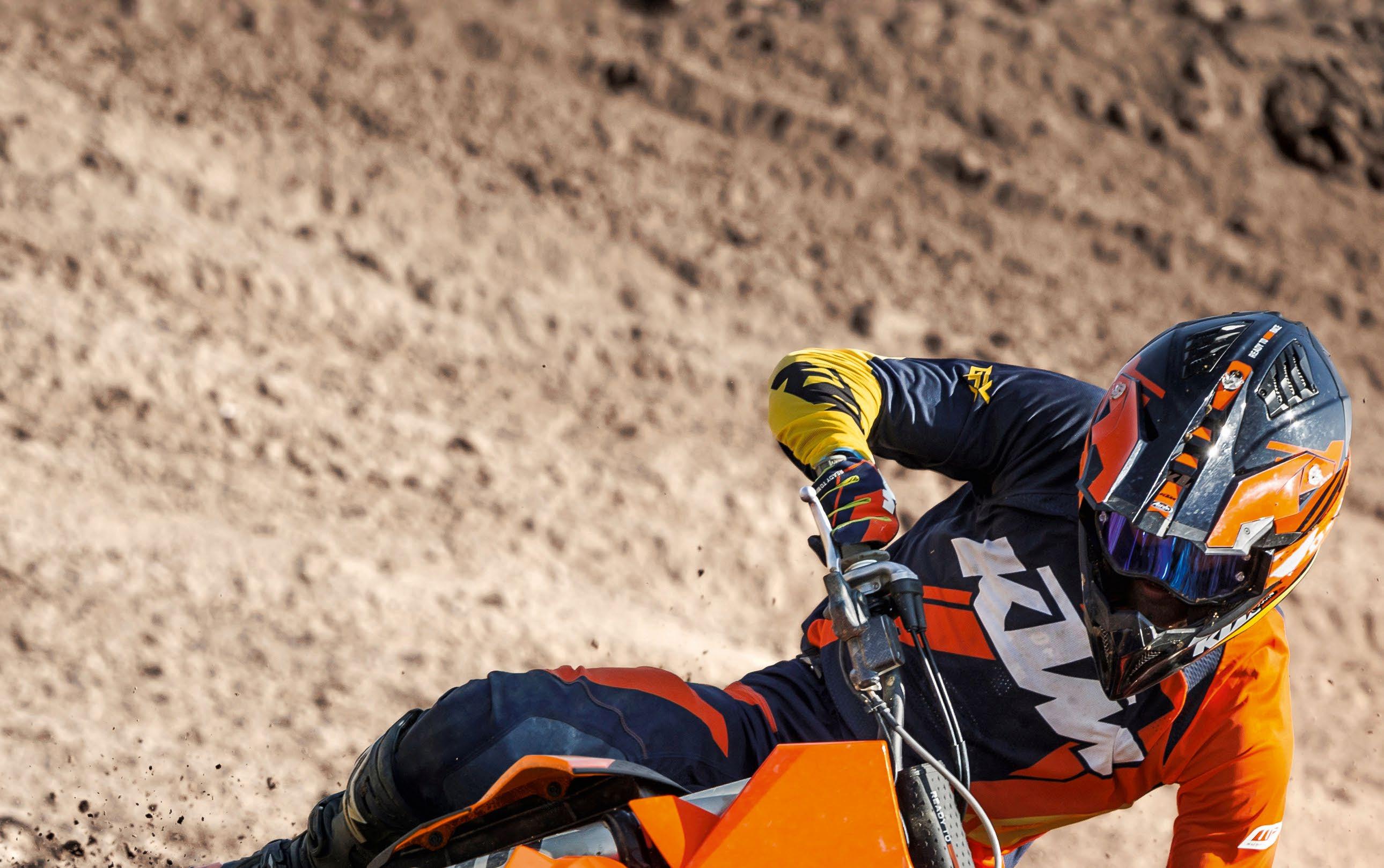


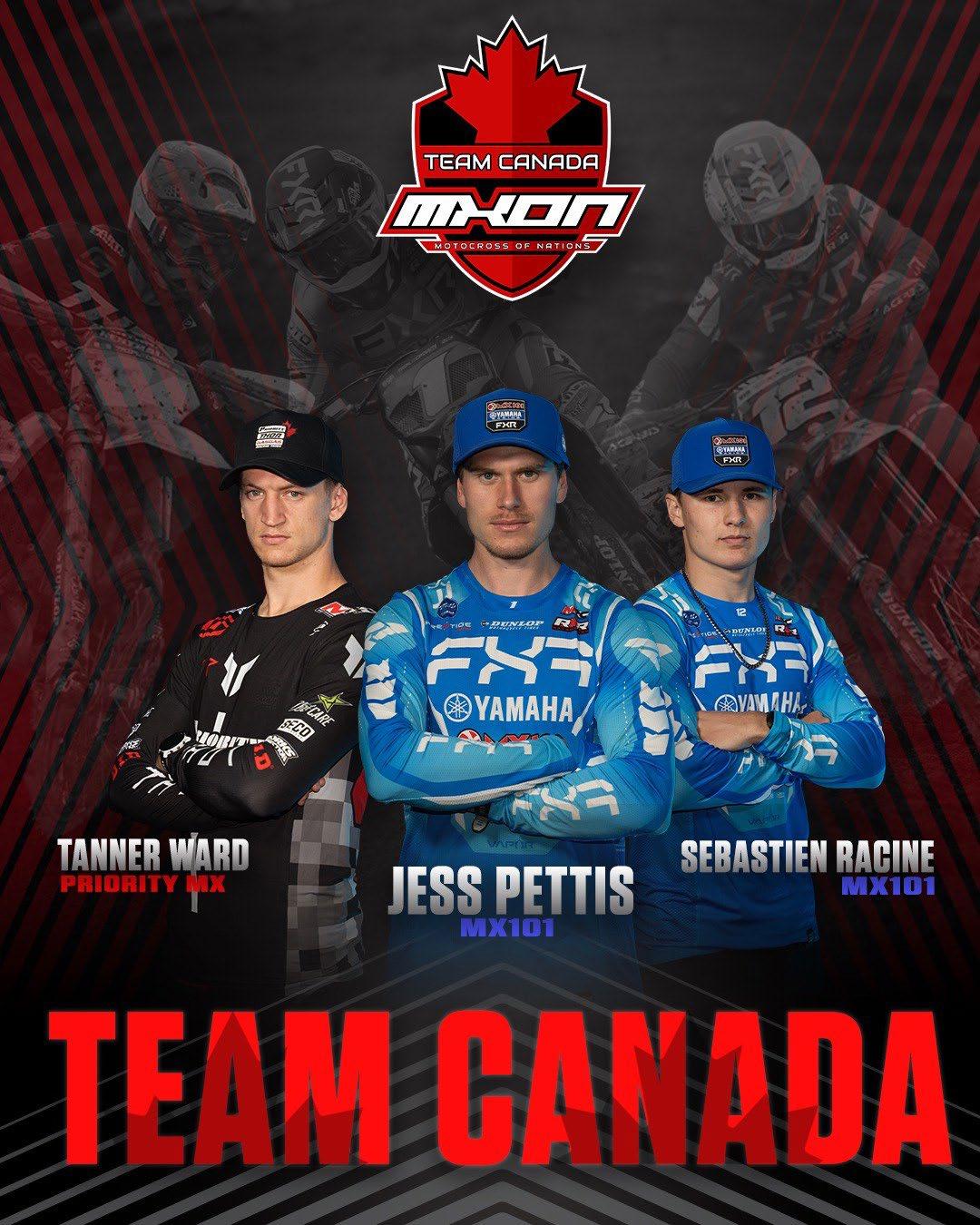




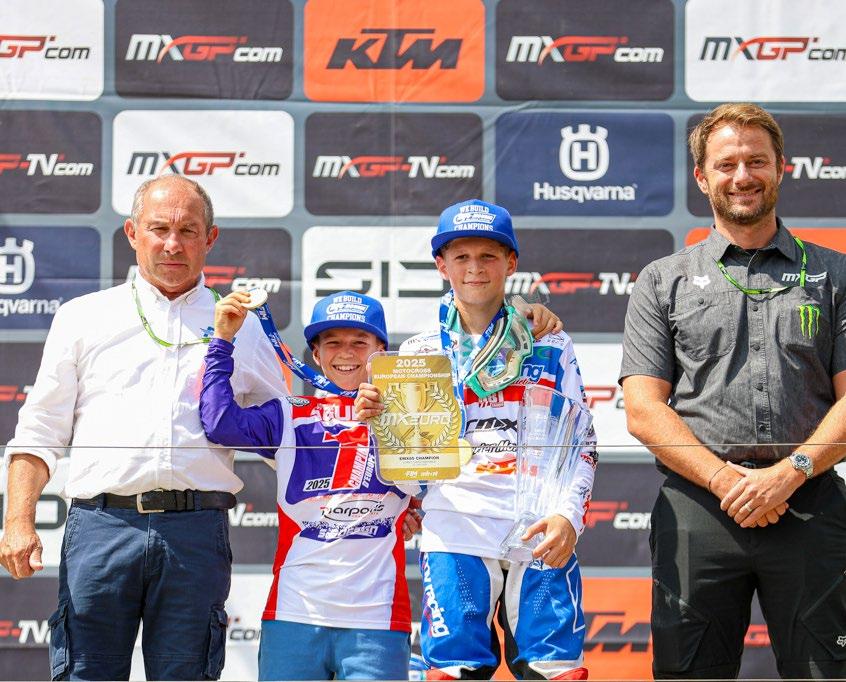
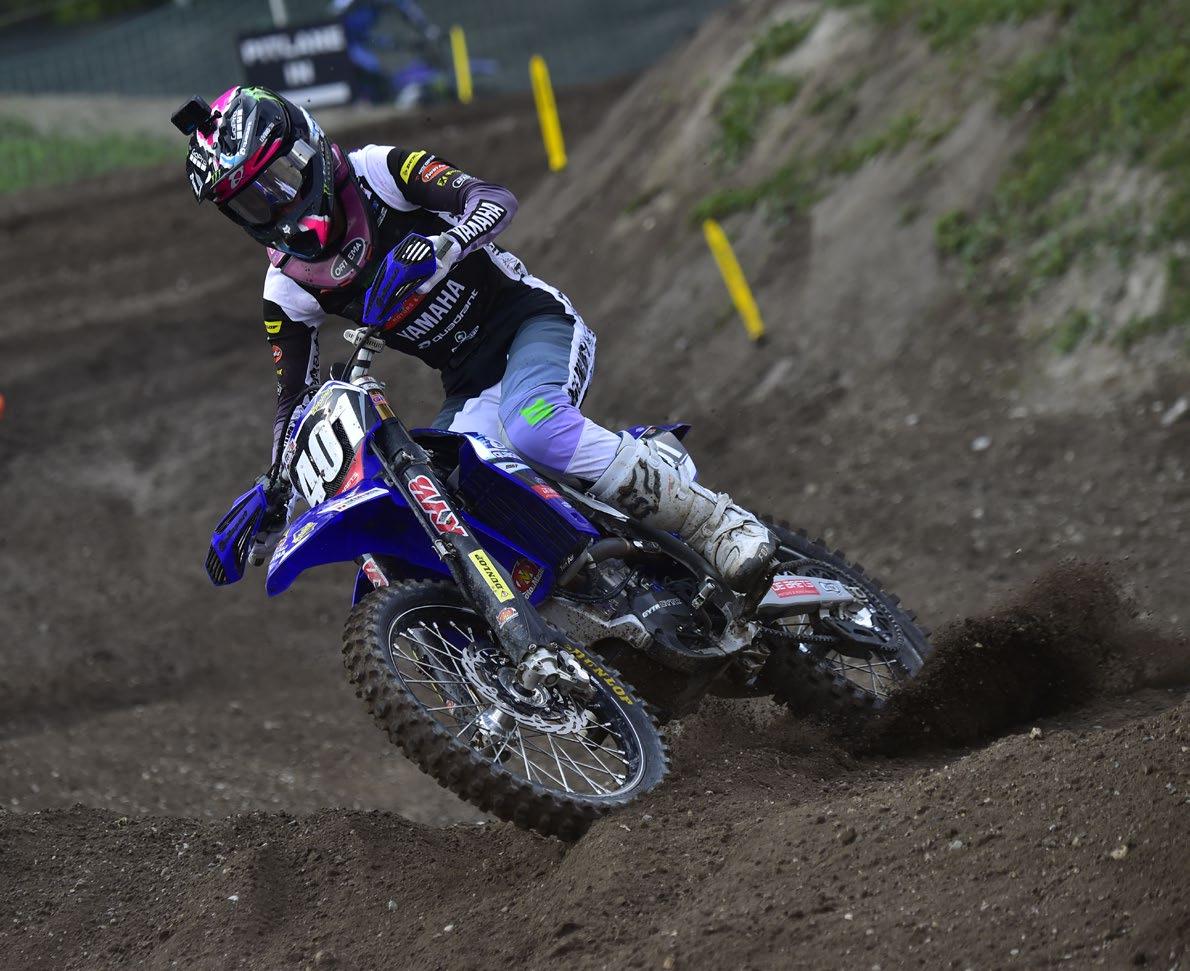
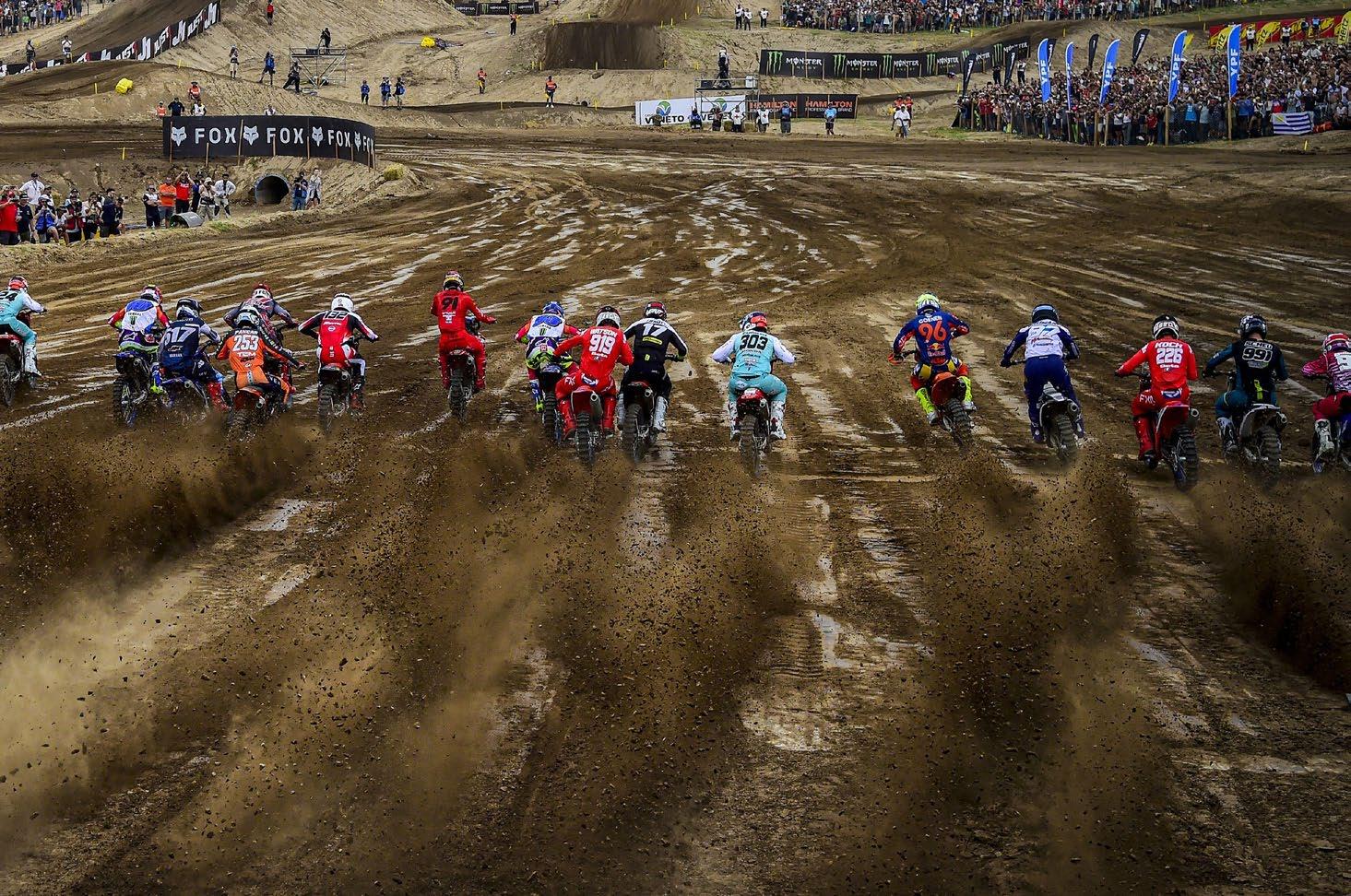













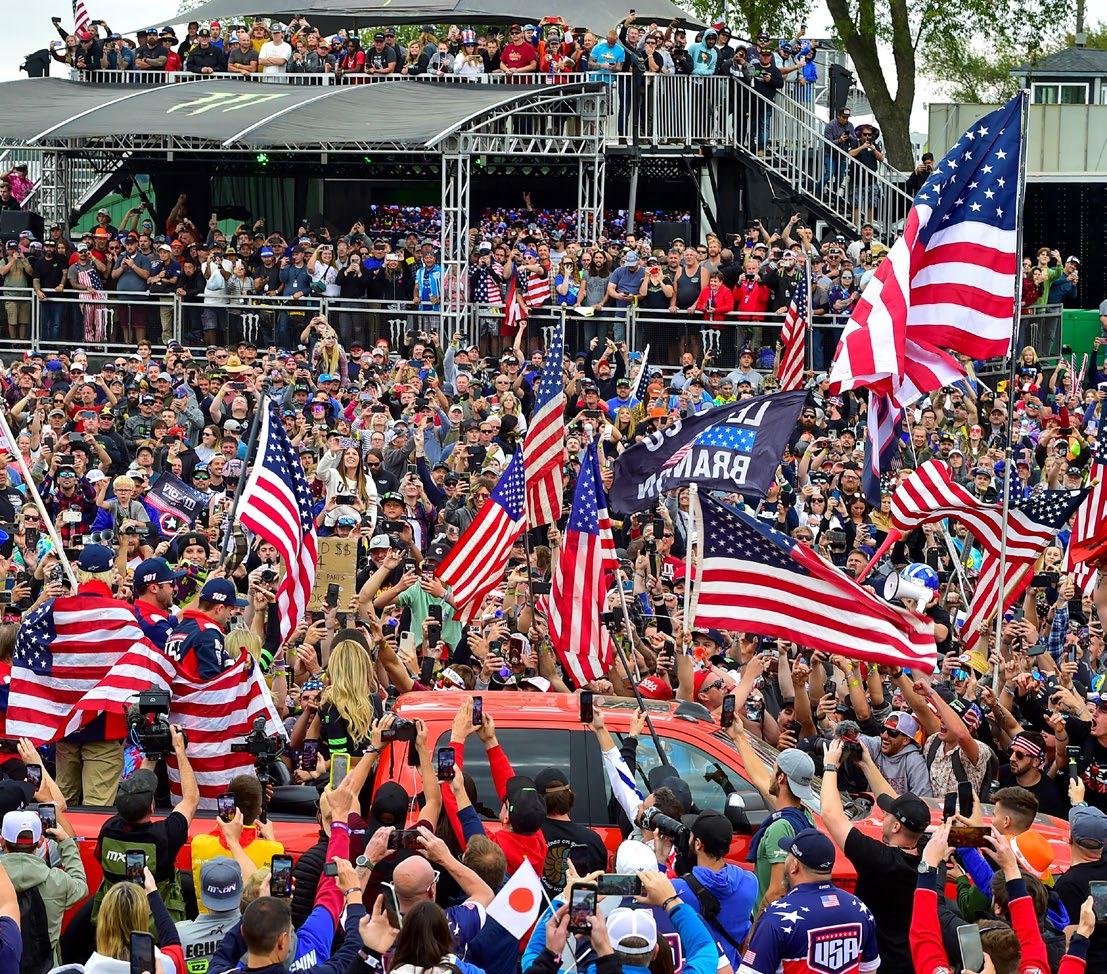

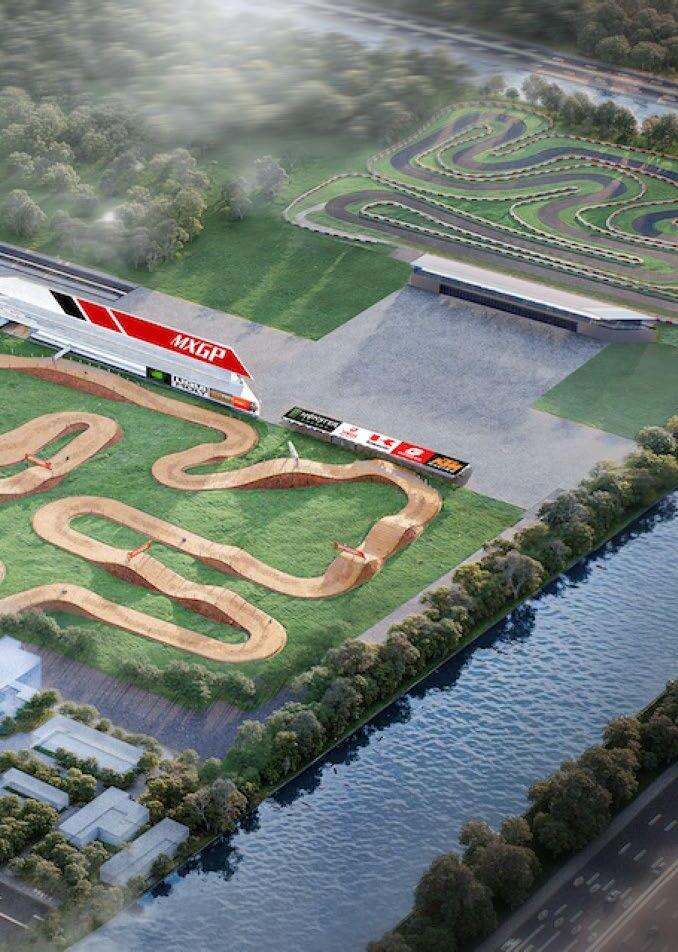


1 Team Canada names MXoN USA lineup: Pettis, Ward, Racine!
2 French new gen stars: Enzo Herzogenrath (85cc) and Mathys Agullo (65cc) crowned European champions in Loket !
3 Aussie trio back for MXoN with plate 1,2,3: Jett & Hunter Lawrence, Kyle Webster!
4 Lotte van Drunen races MX2 again in Lommel’s tough track!
5 Cesar Lagut wins MXE series by one point in Loket!

6 MXoN stays in USA through 2031 after upcoming editions!
7 Seven weeks left: MXGP Darwin final to feature 30 wildcards!
8 Oriental Beauty Valley 2025 MXGP of China reveals the exciting new racetrack for 2025!
9 2027 Junior MX World Championship returns to Pärnu, Estonia, second time for the Baltic country!



